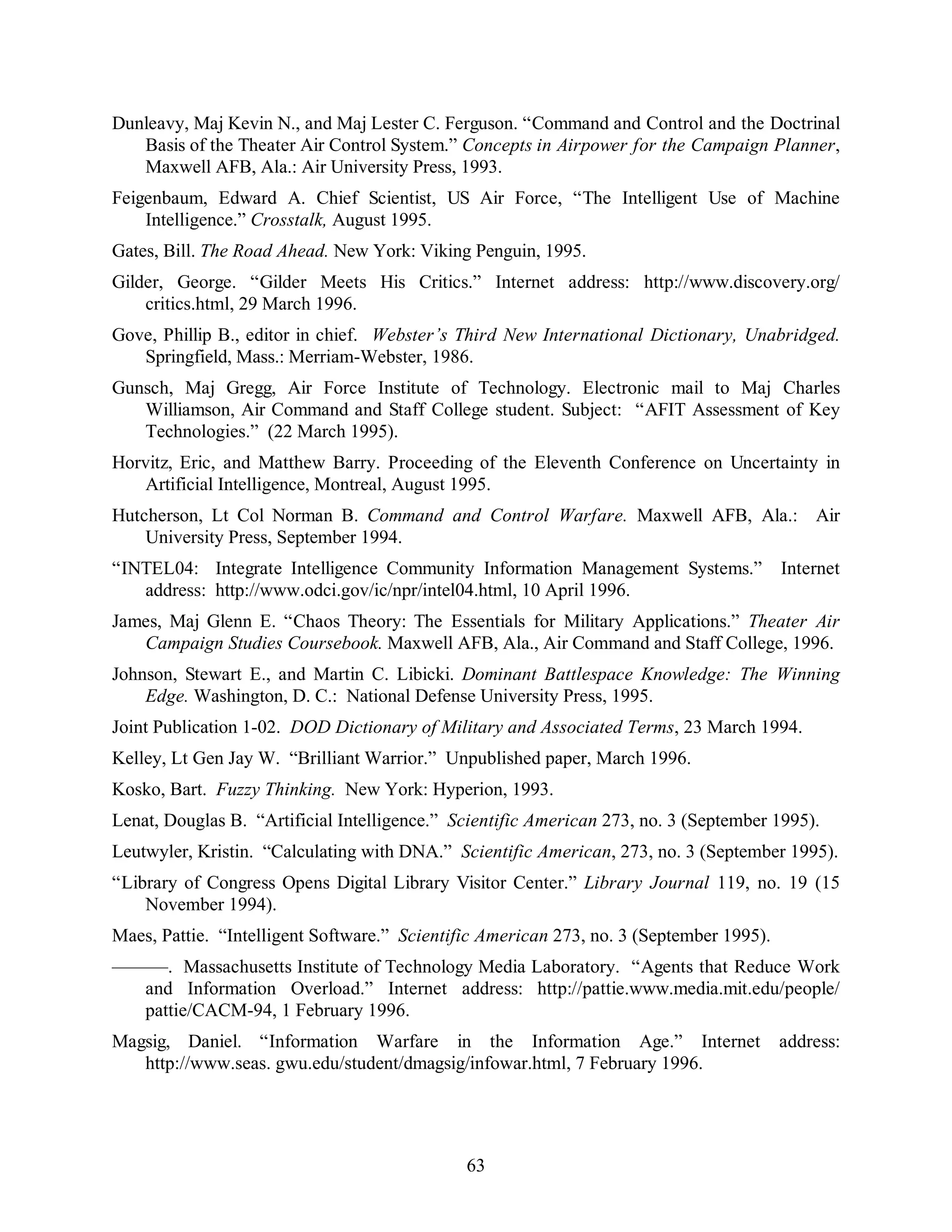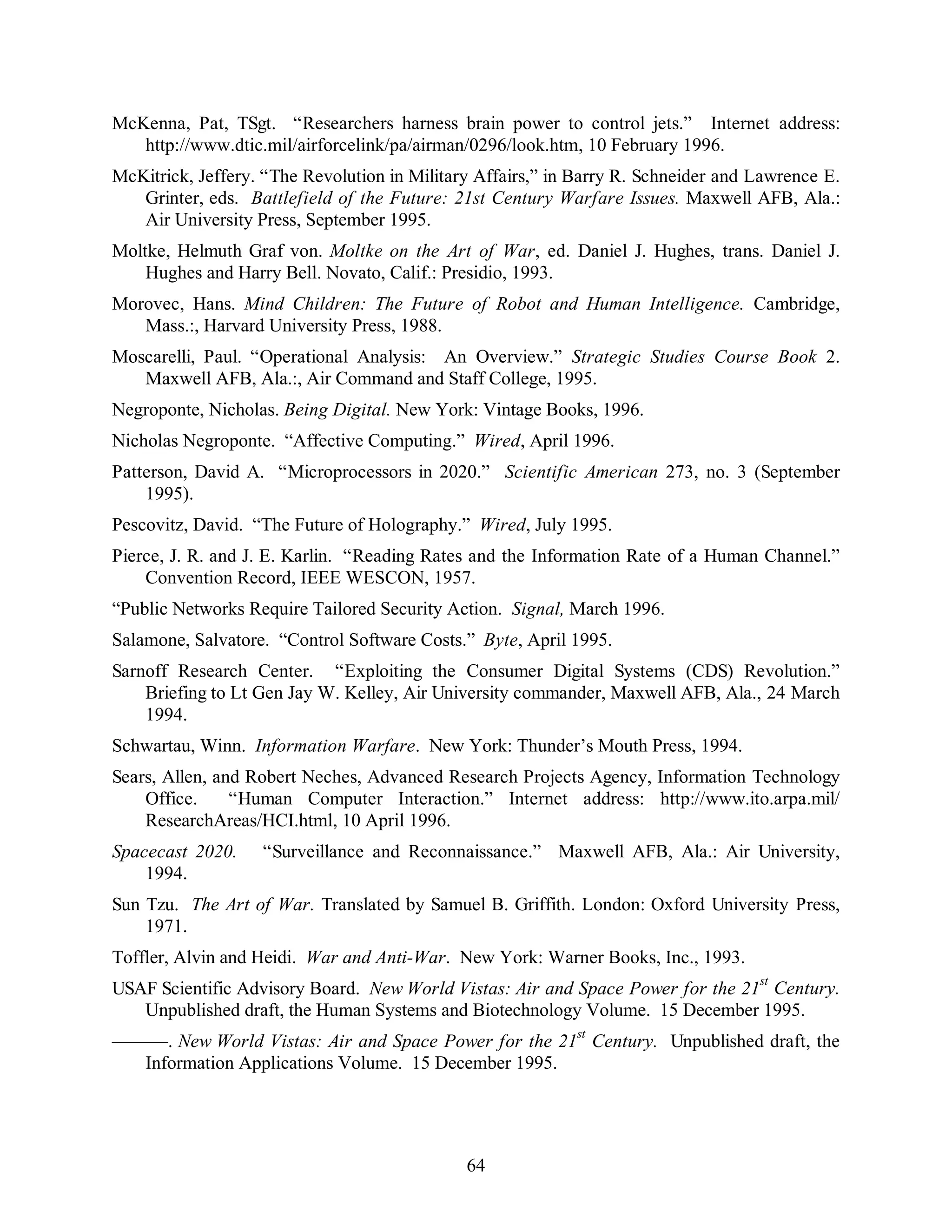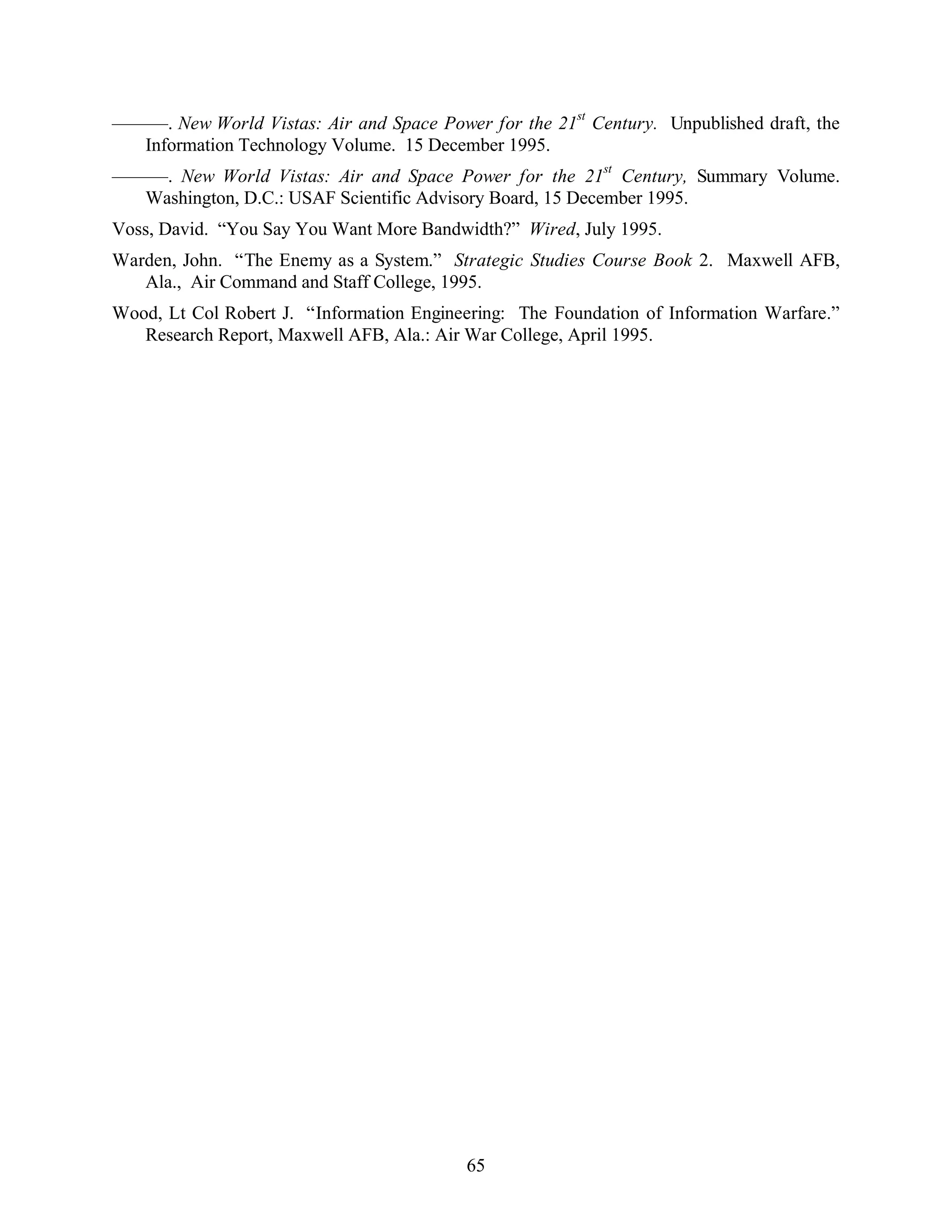The document outlines the required capabilities for an information operations architecture in 2025, including knowledge capabilities like advanced sensors, data fusion, and analysis tools, wisdom capabilities like modeling, simulations, and decision aids, and human system integration capabilities to deliver the right information to decision makers. The goal is to provide superior battlespace awareness and understanding to allow decision makers to make wiser decisions than adversaries through an adaptive architecture that can handle vast amounts of data.
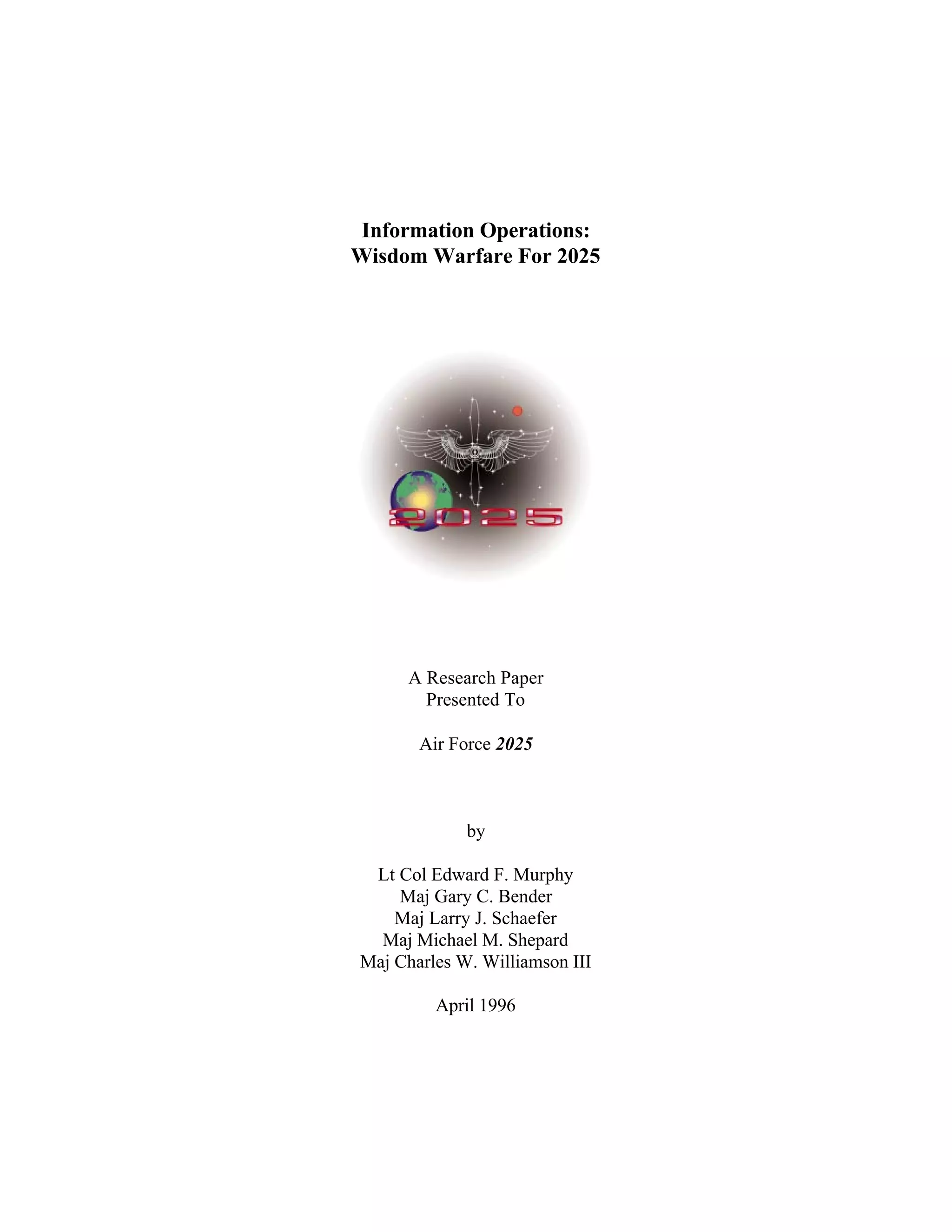
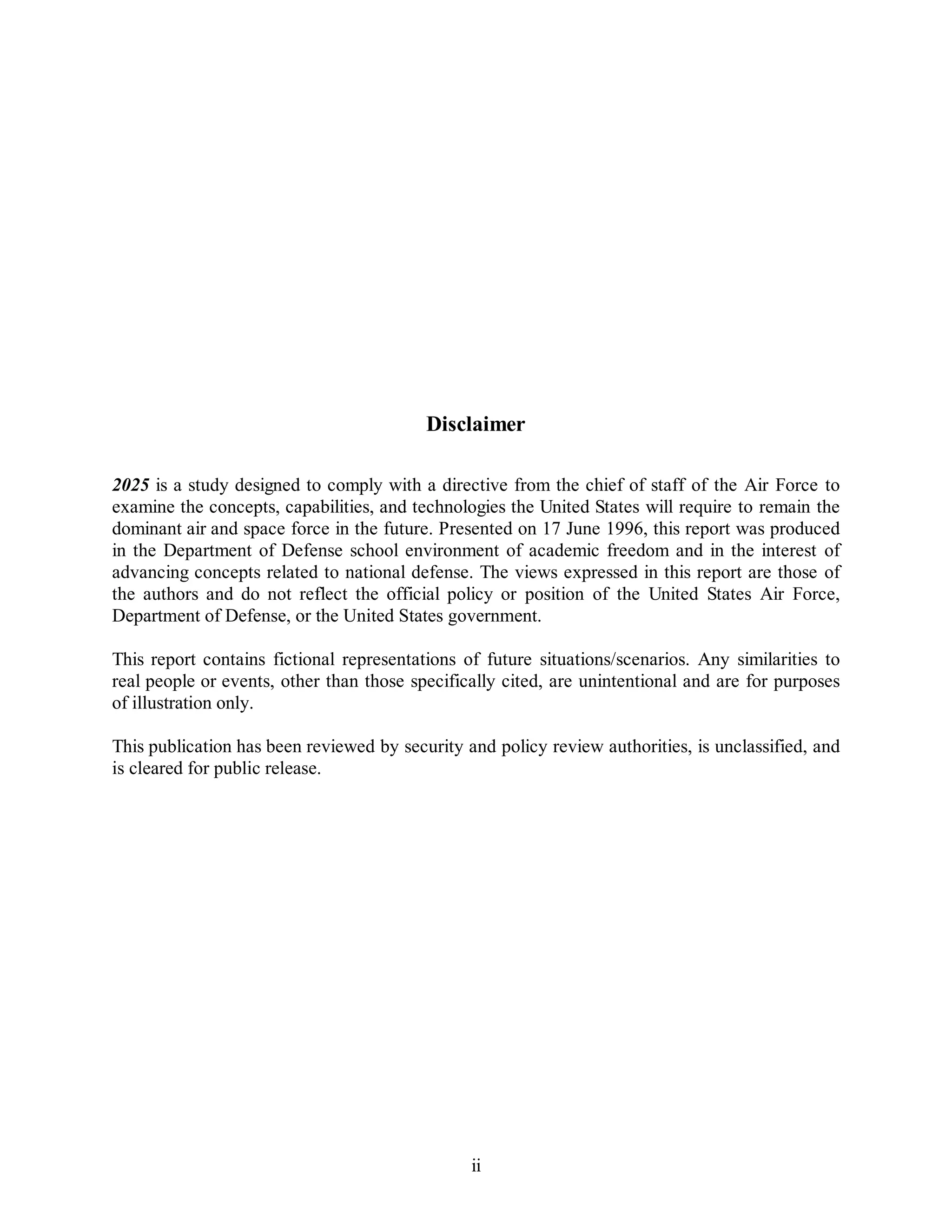
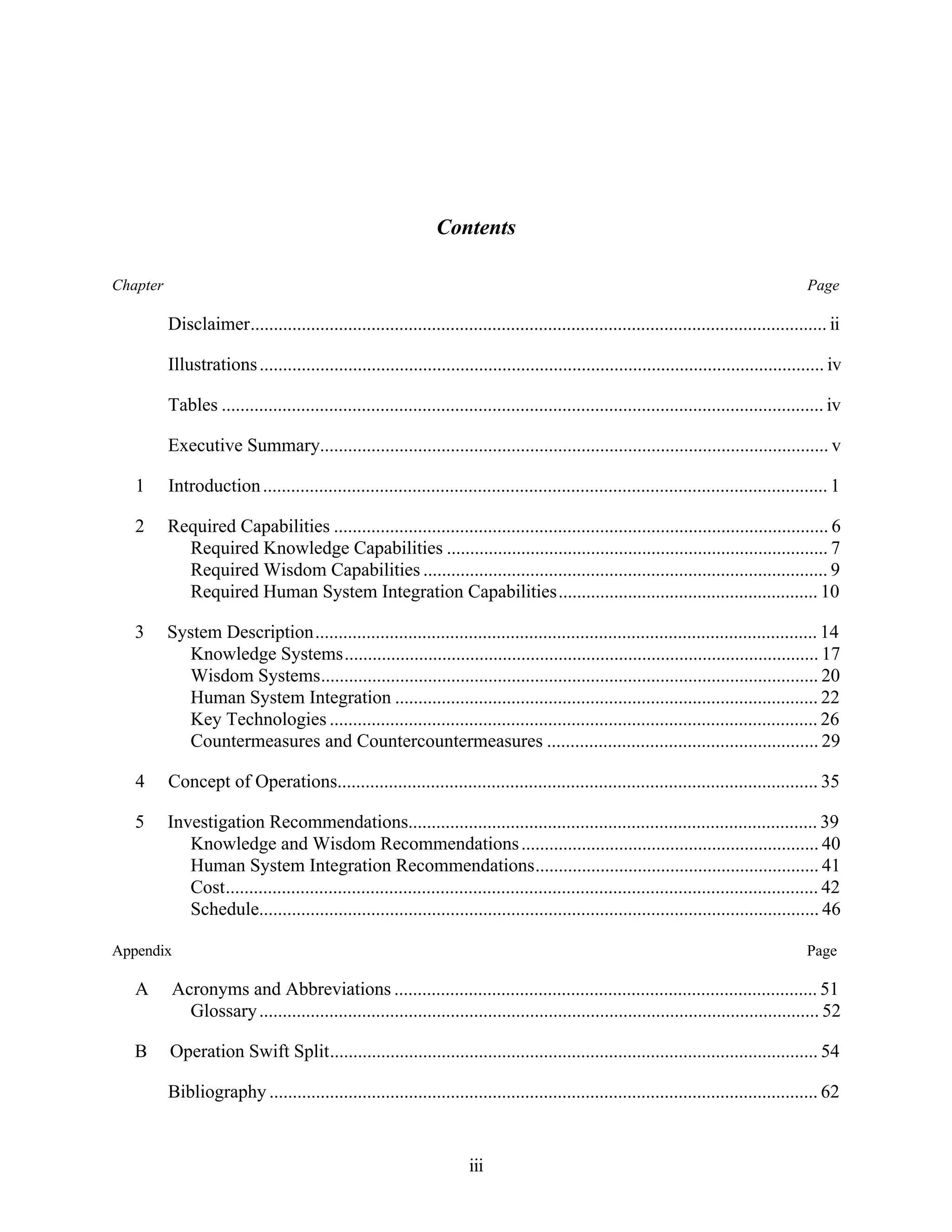
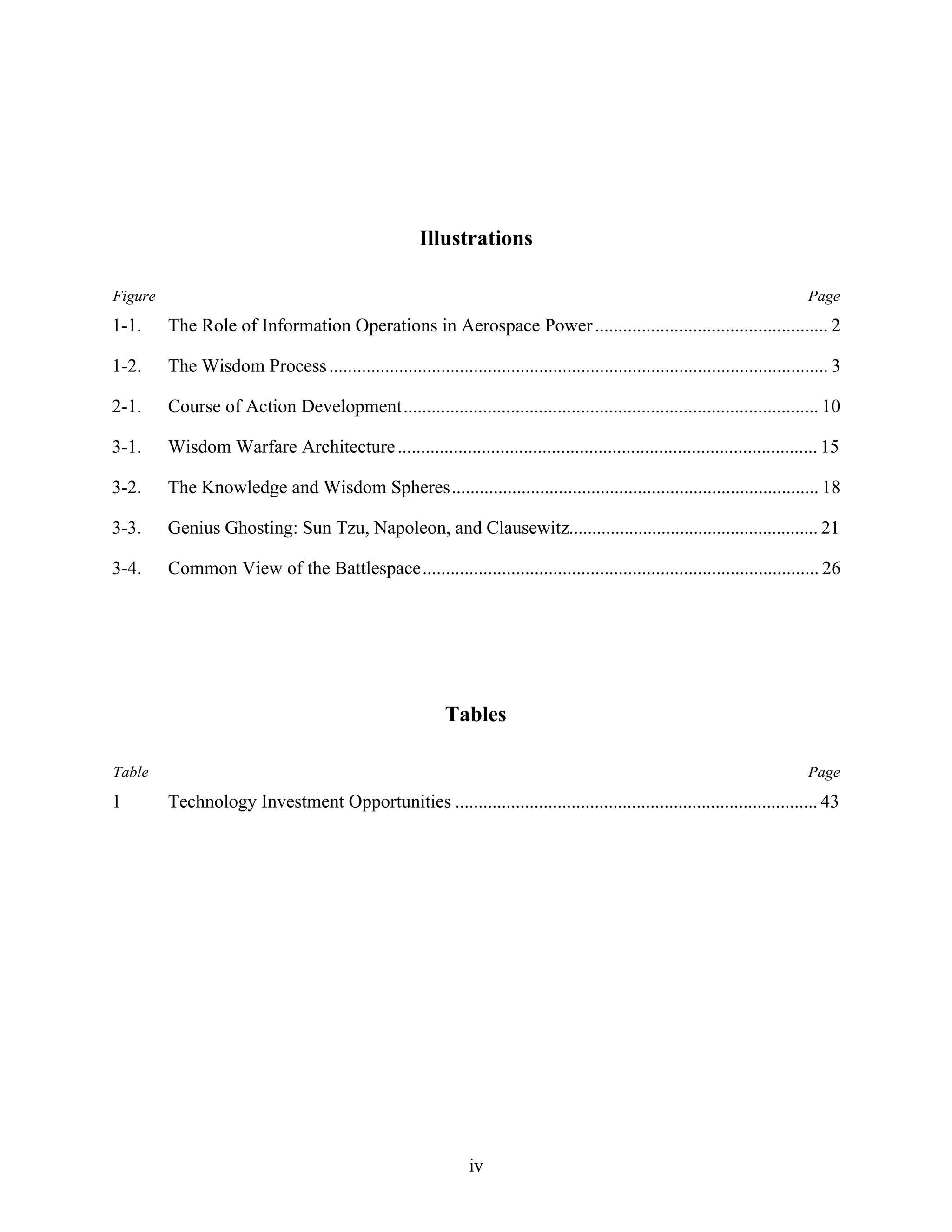
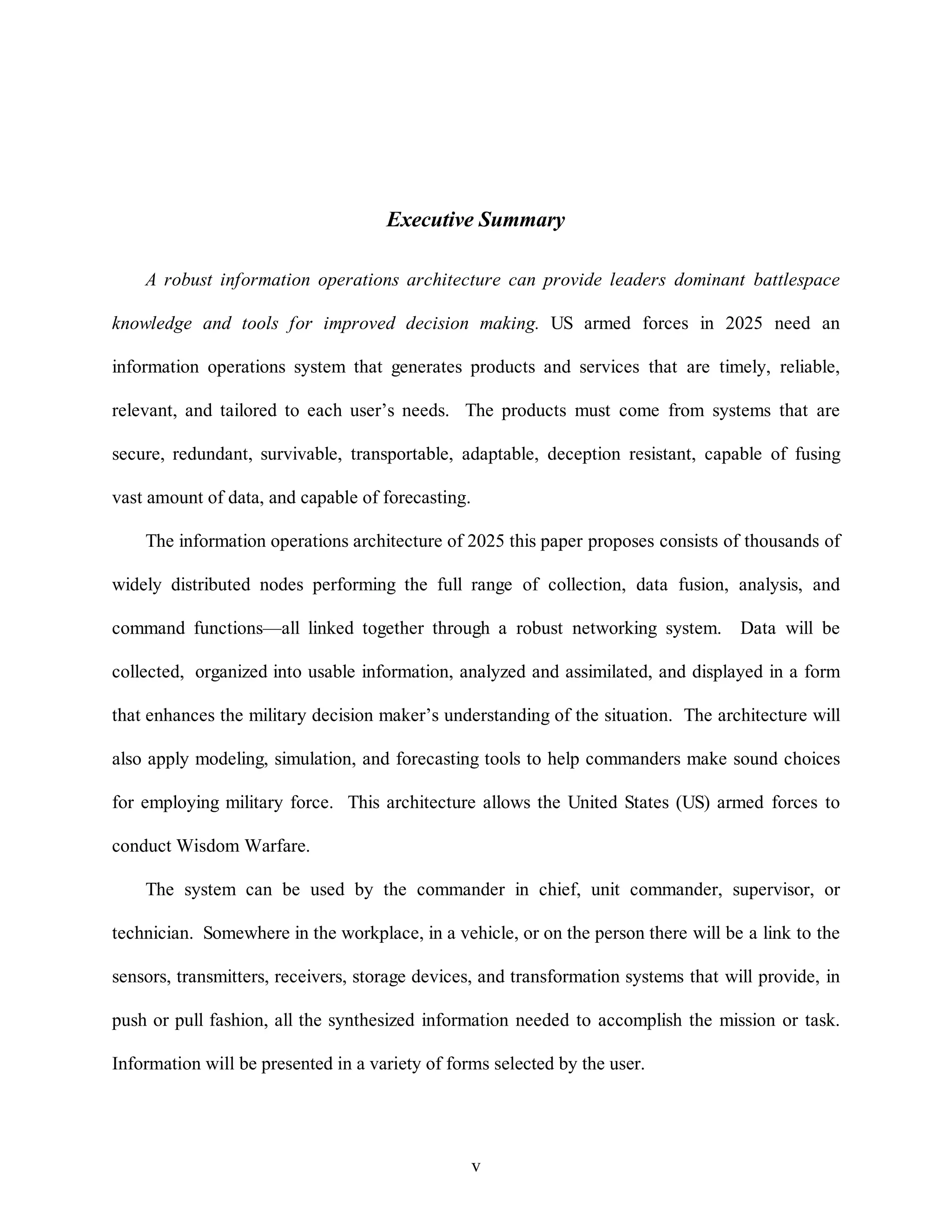
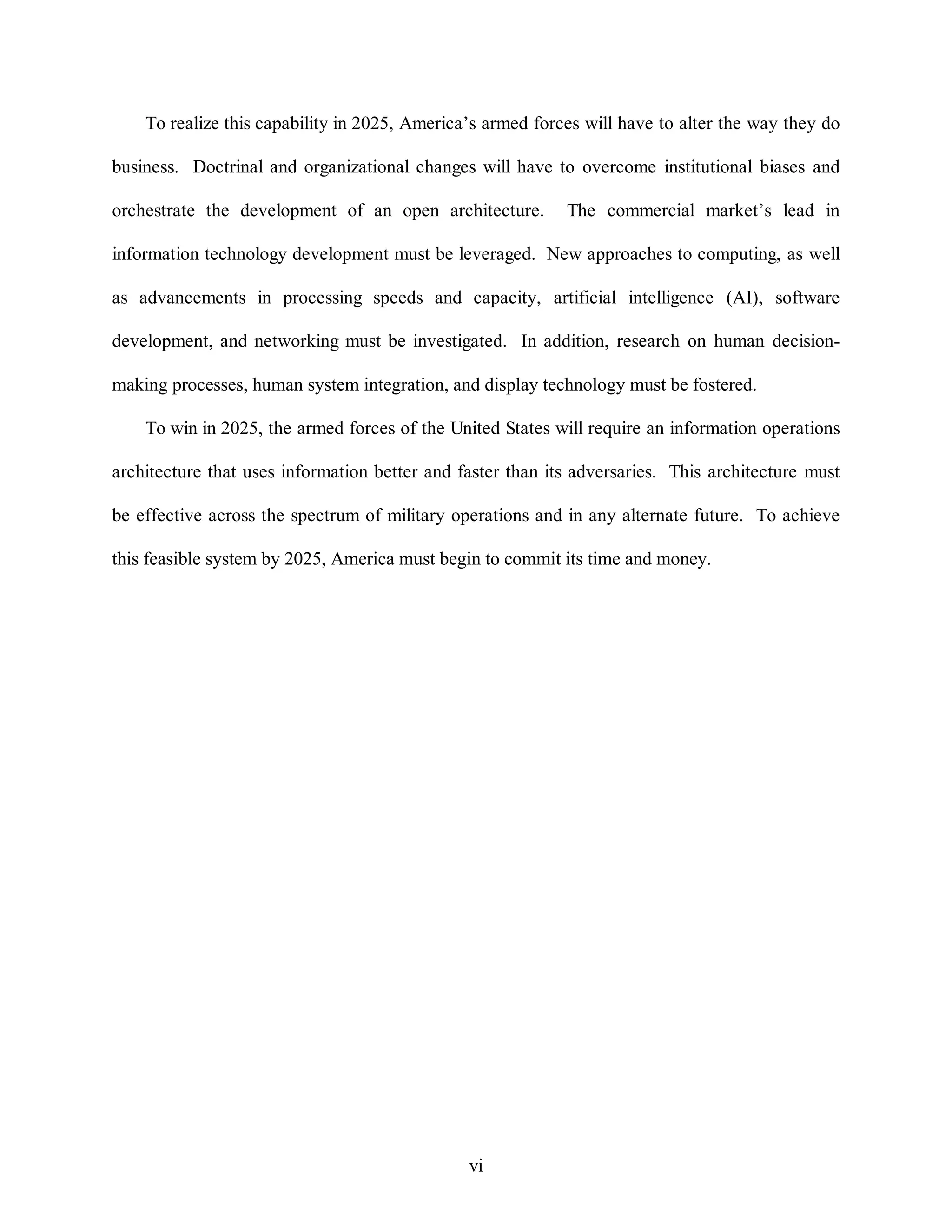
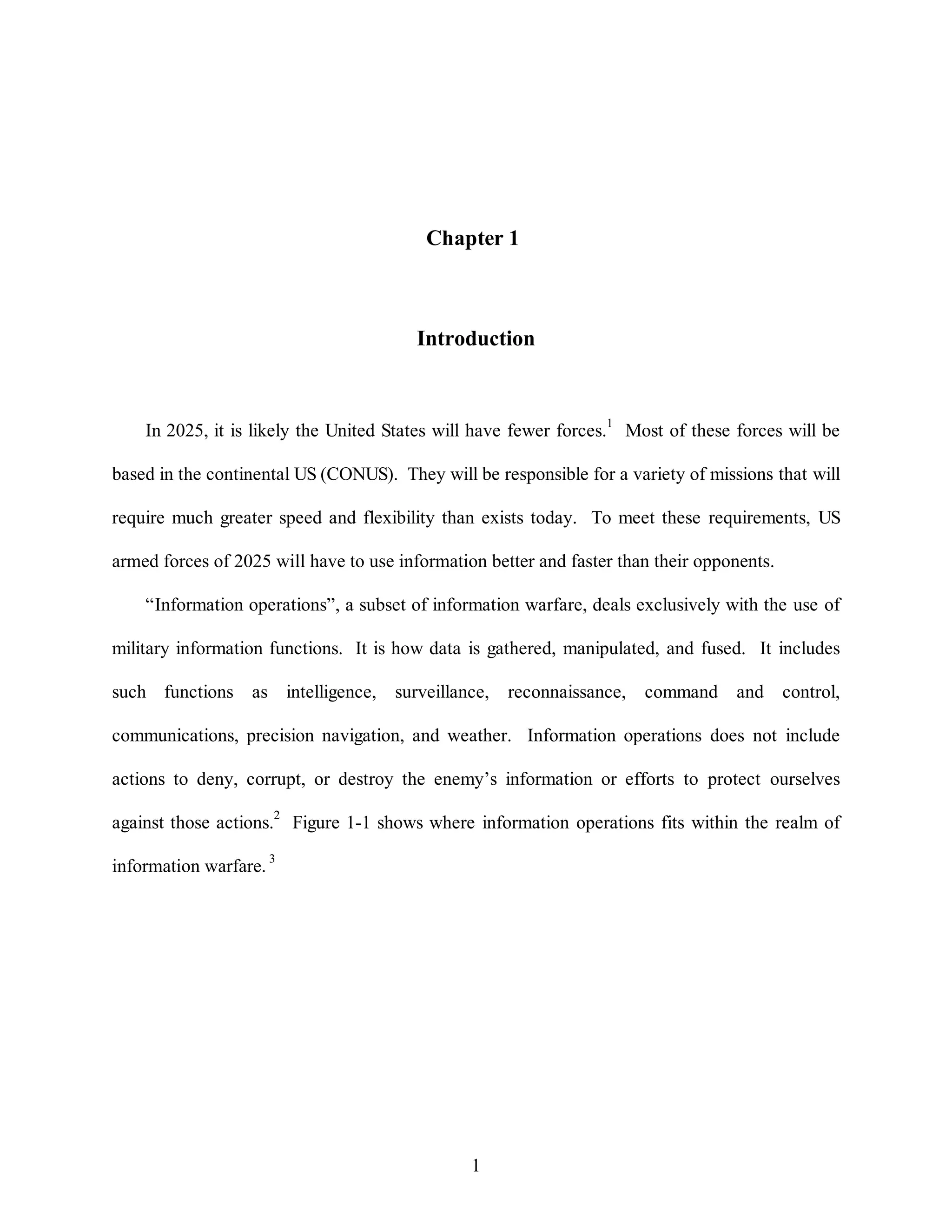
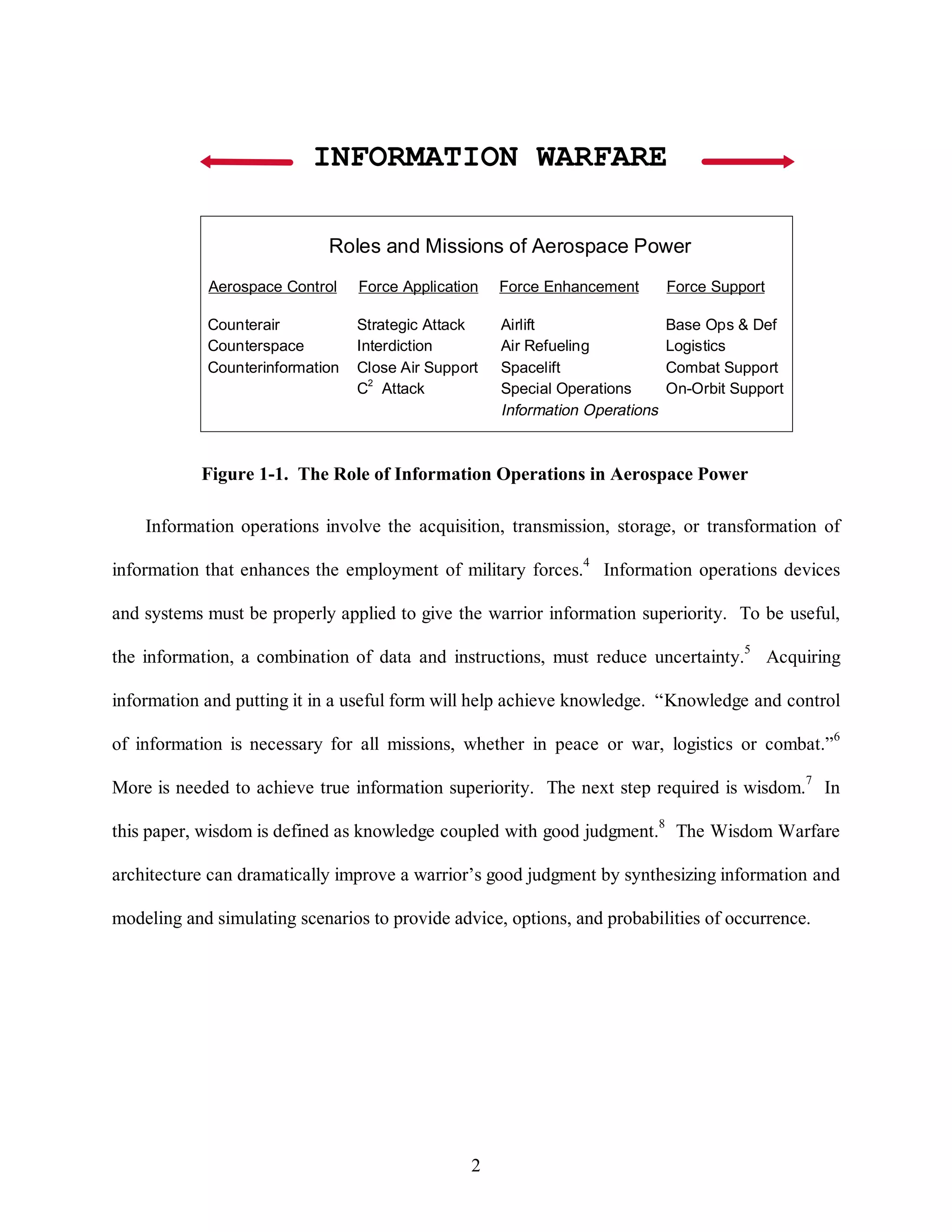
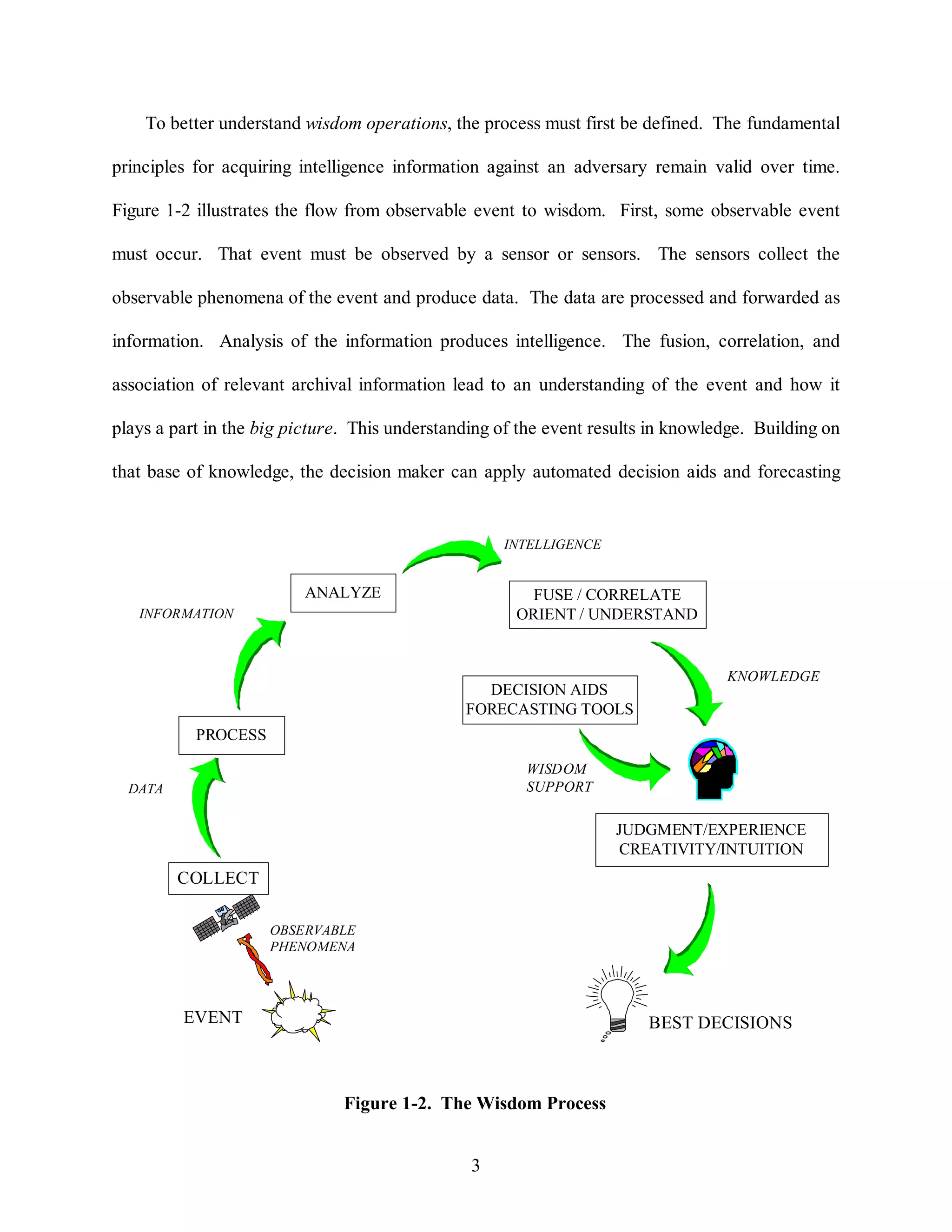

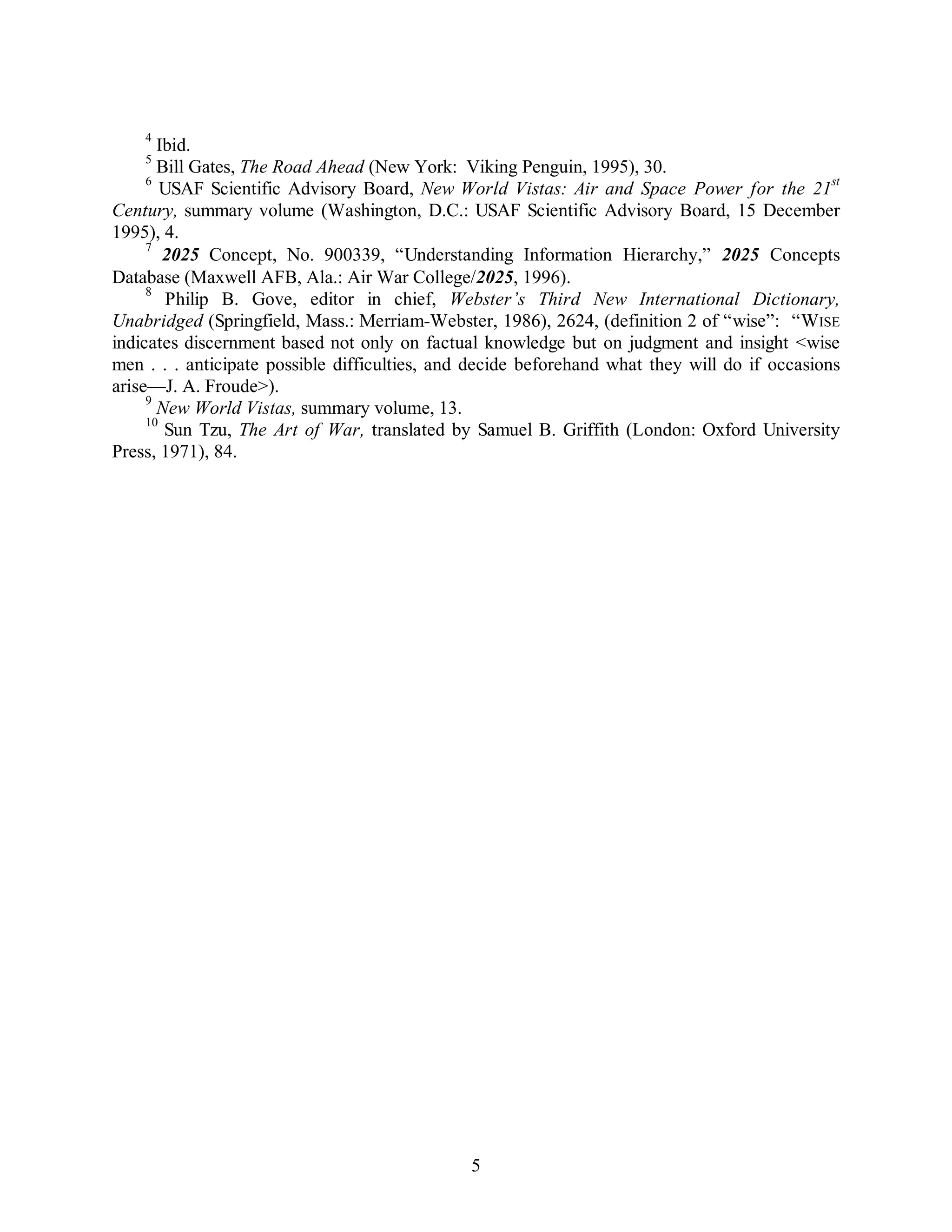
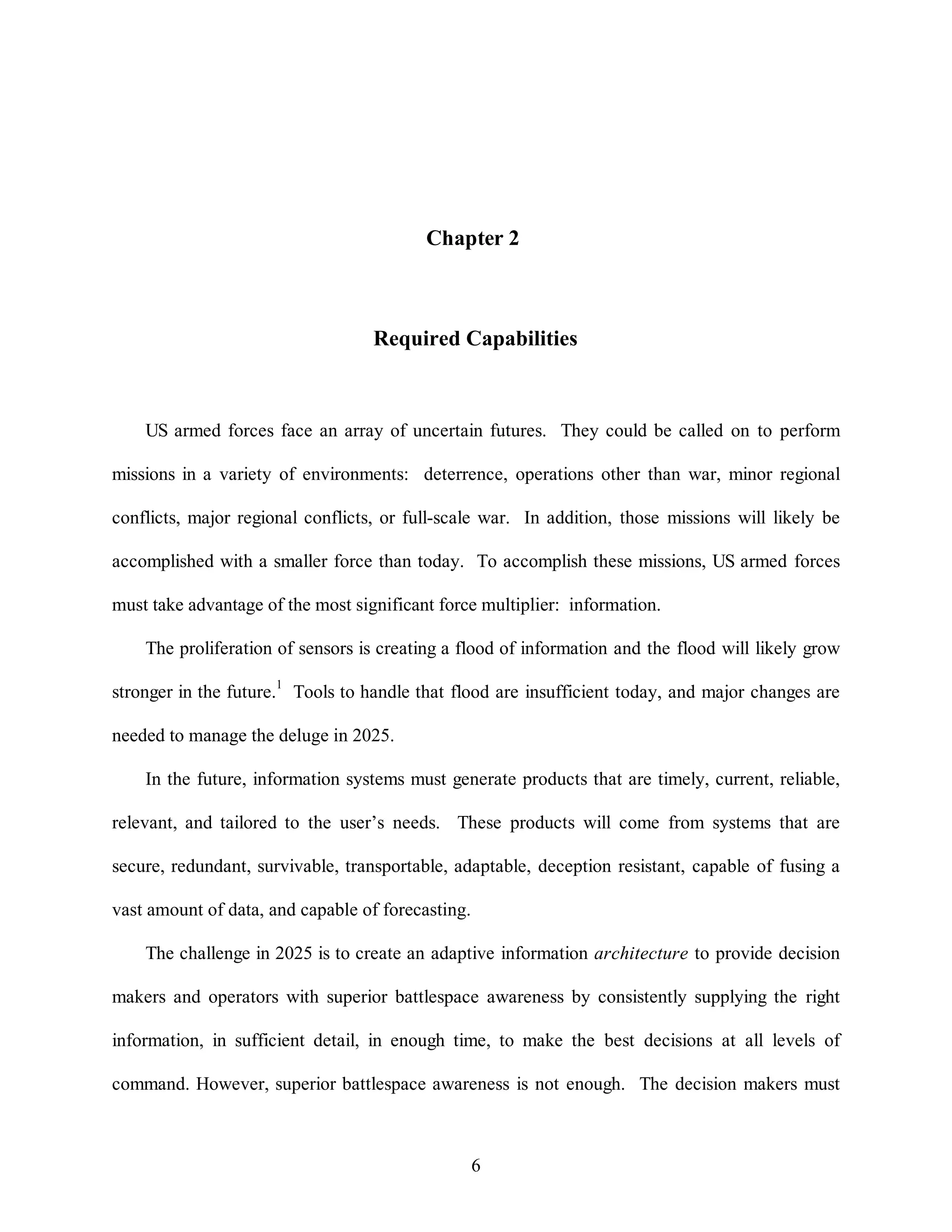
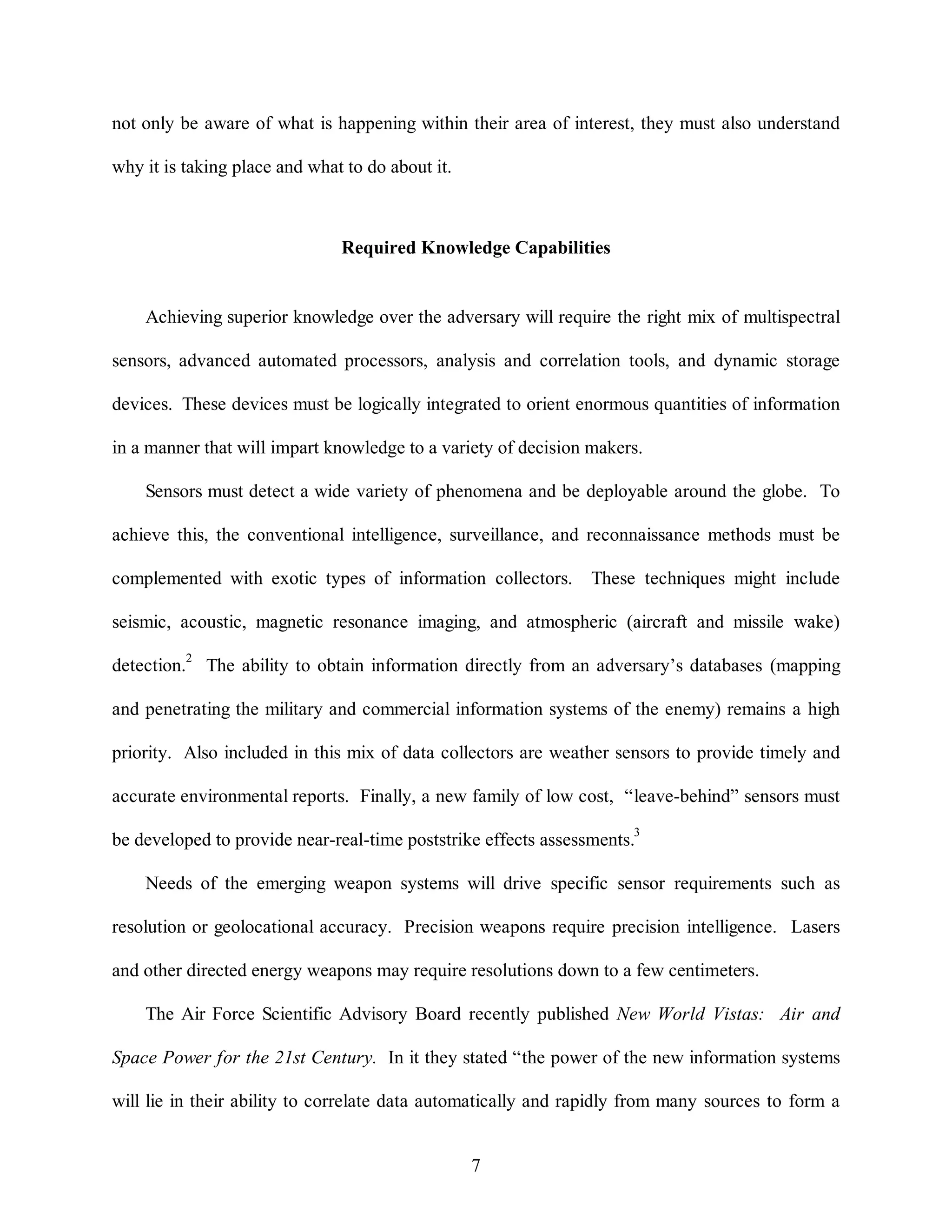
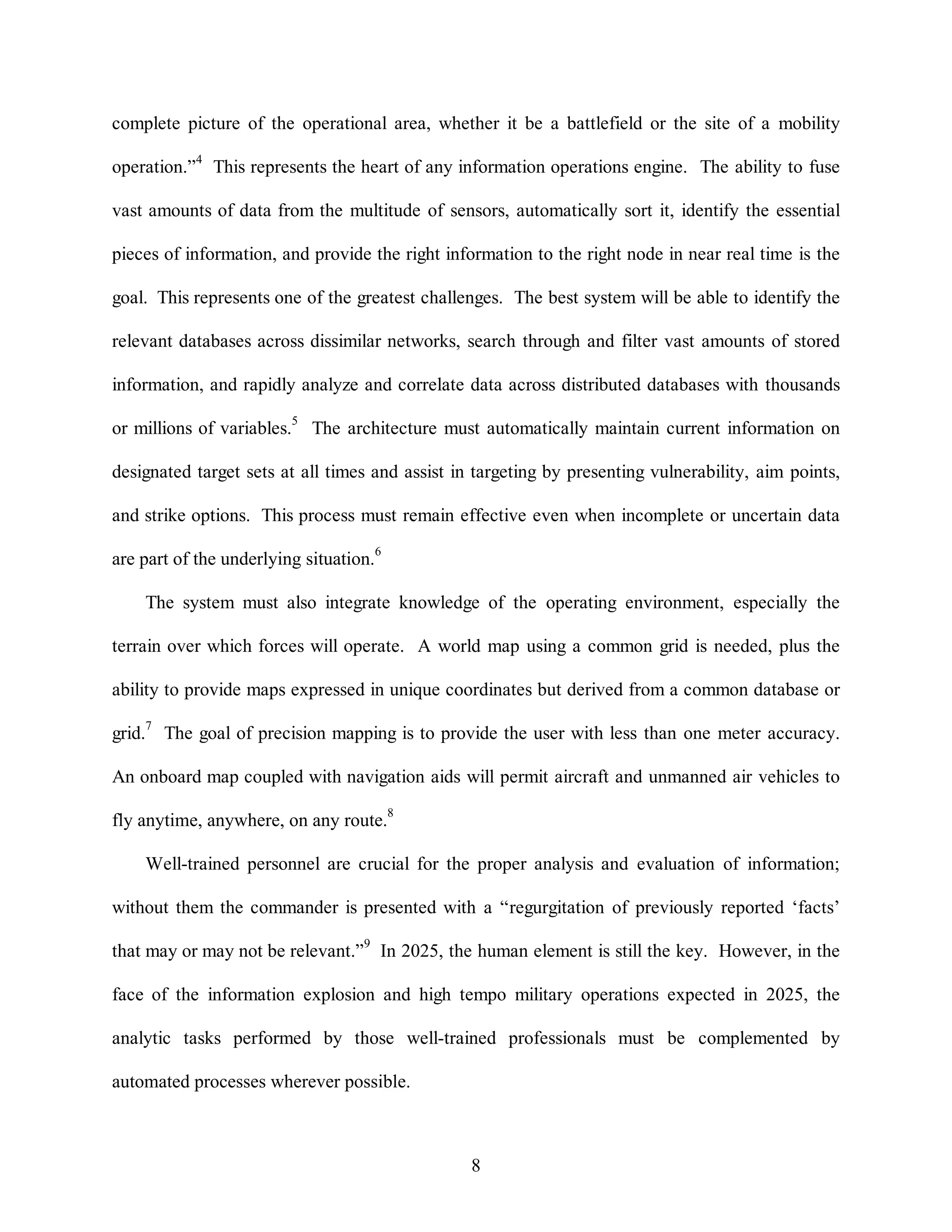
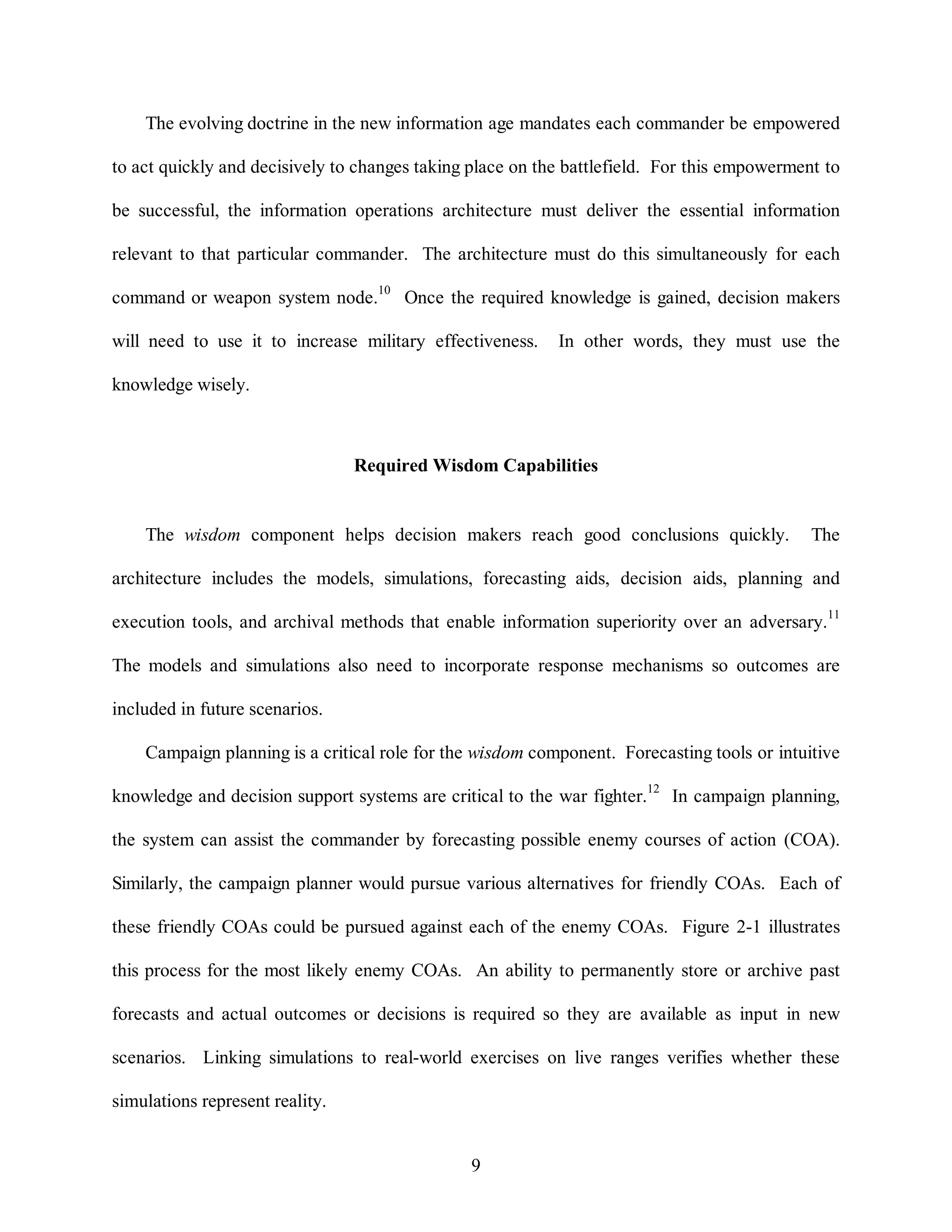



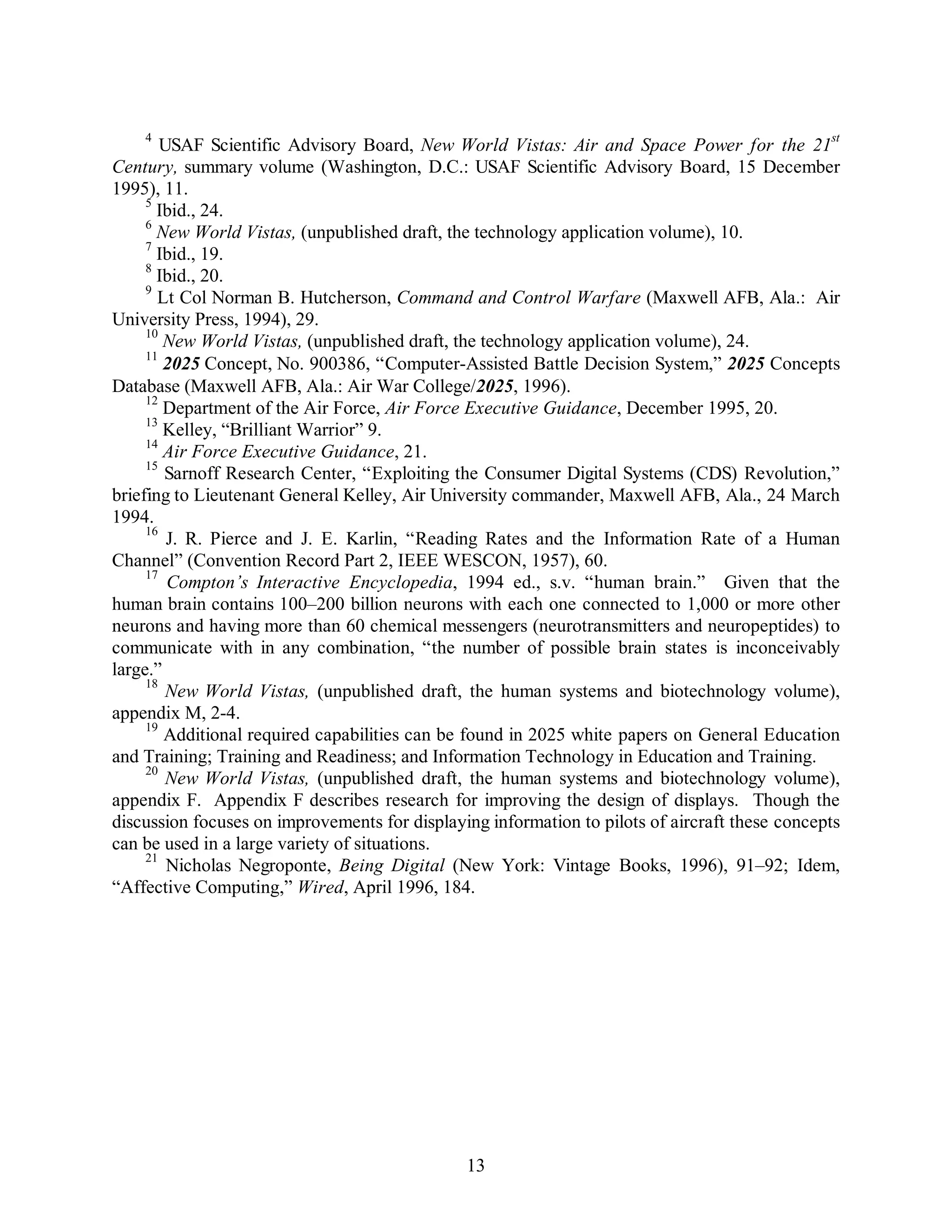

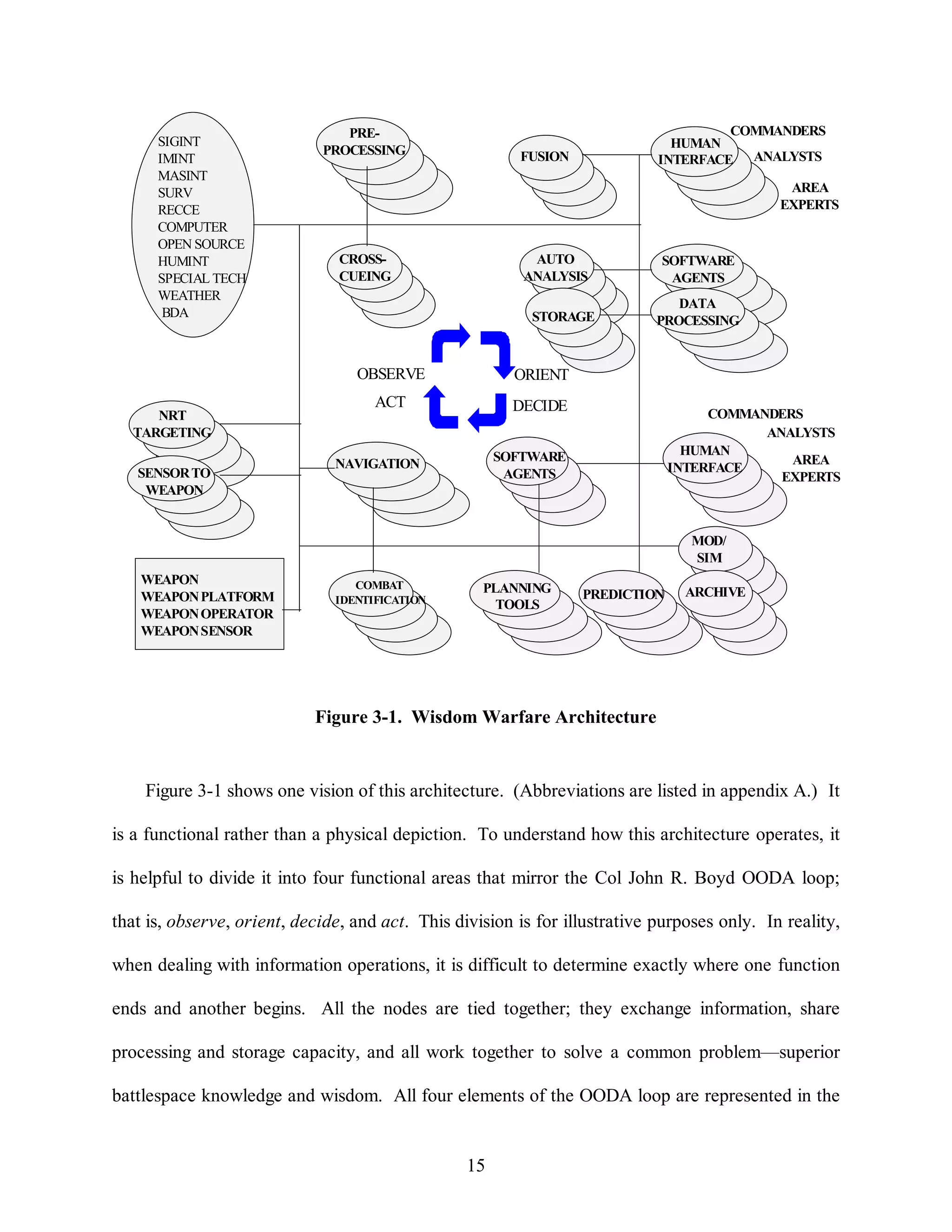
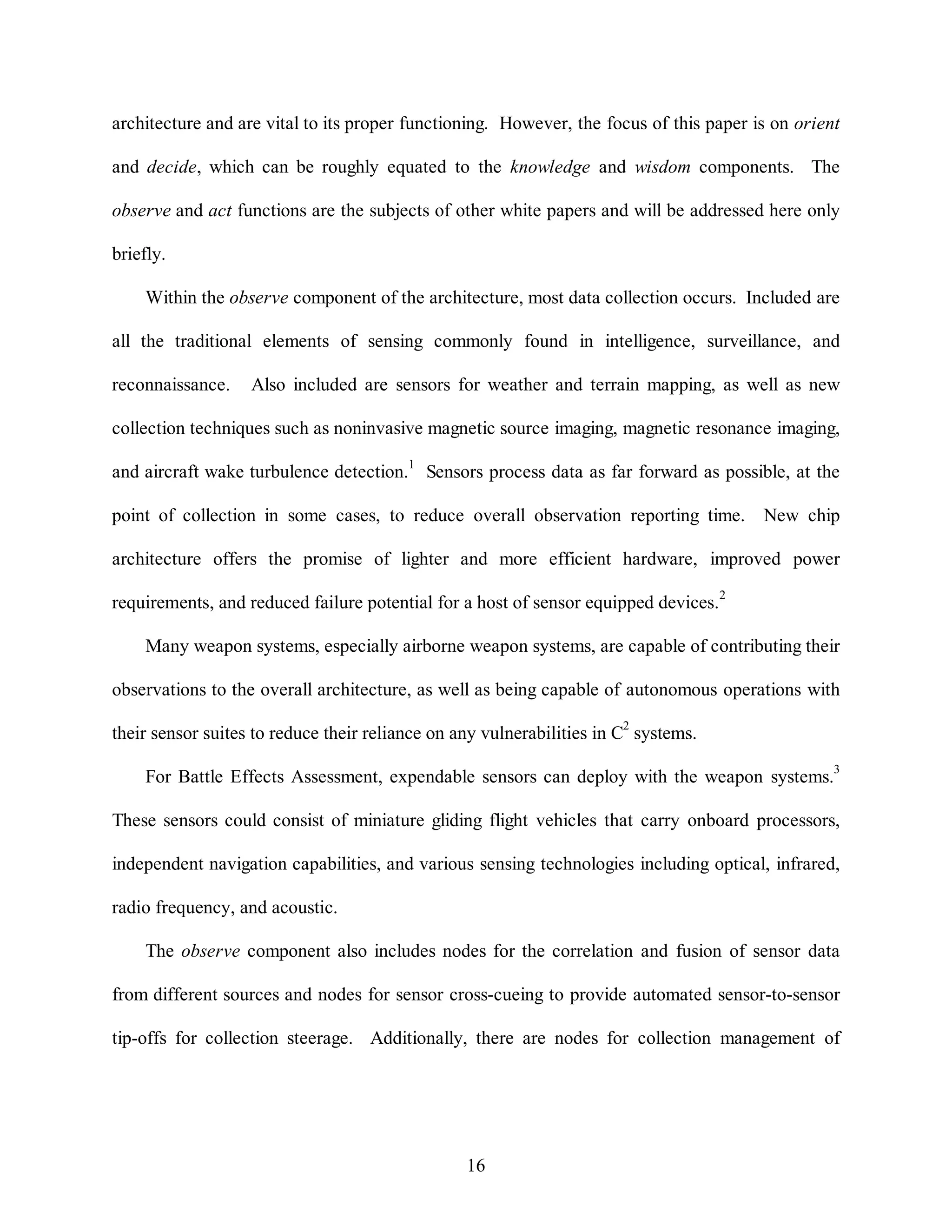

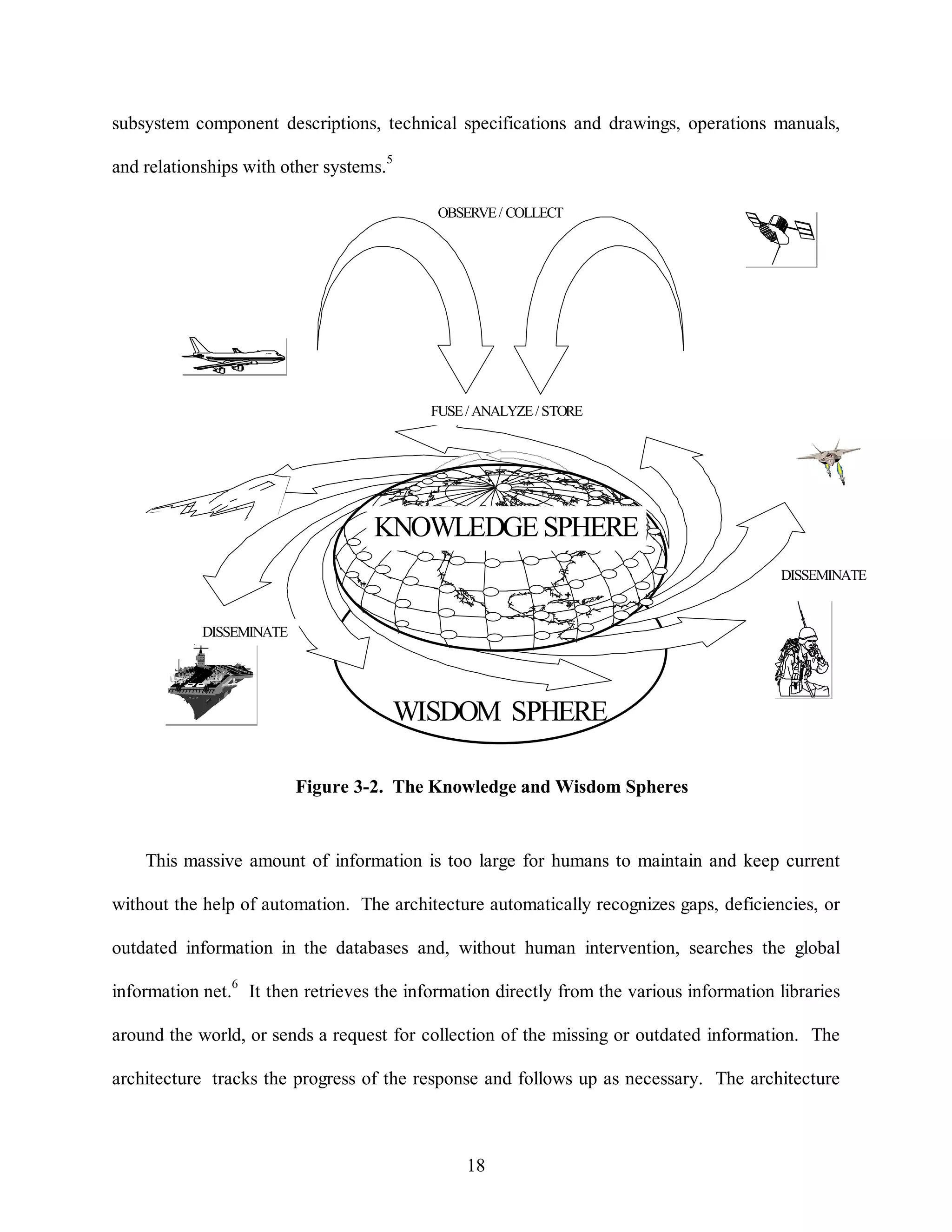
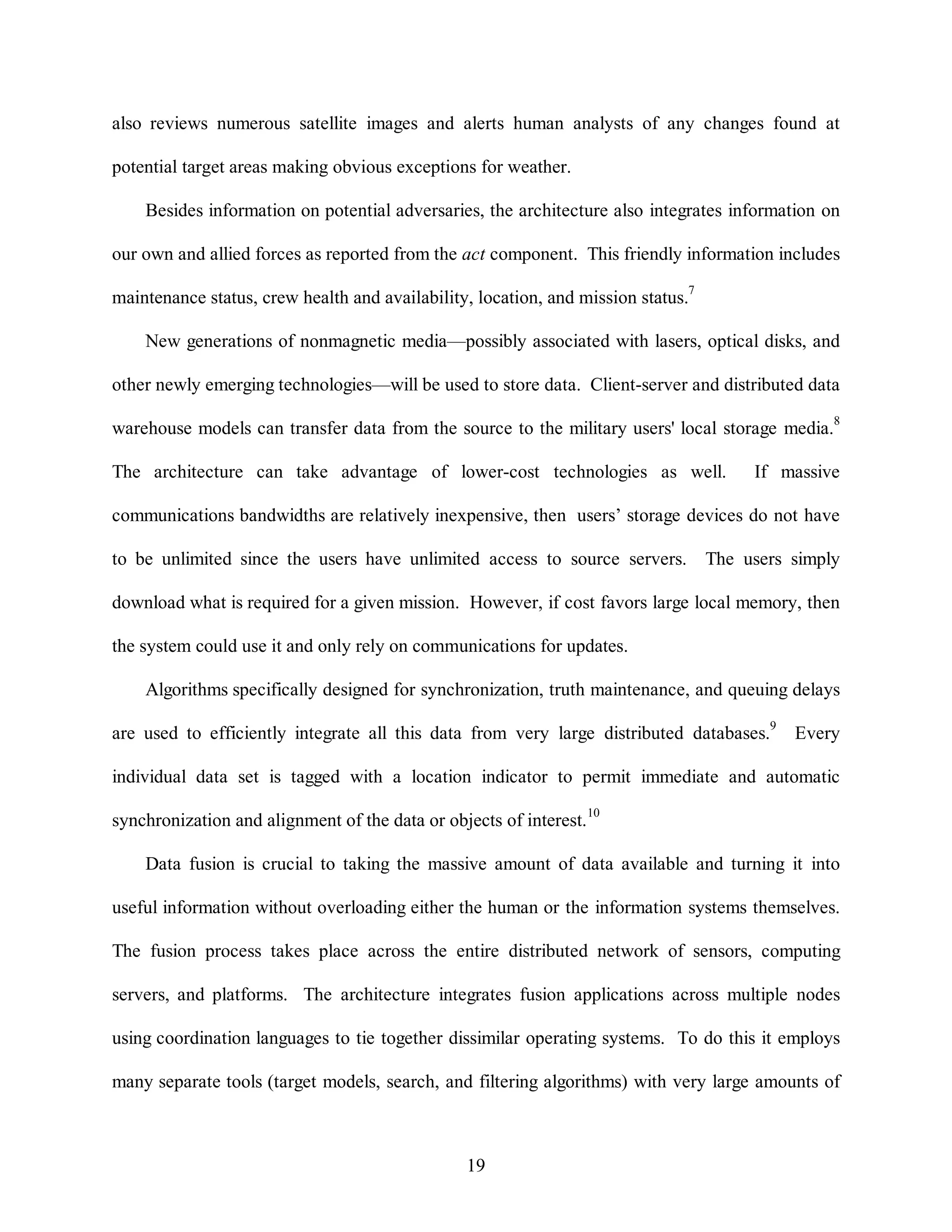
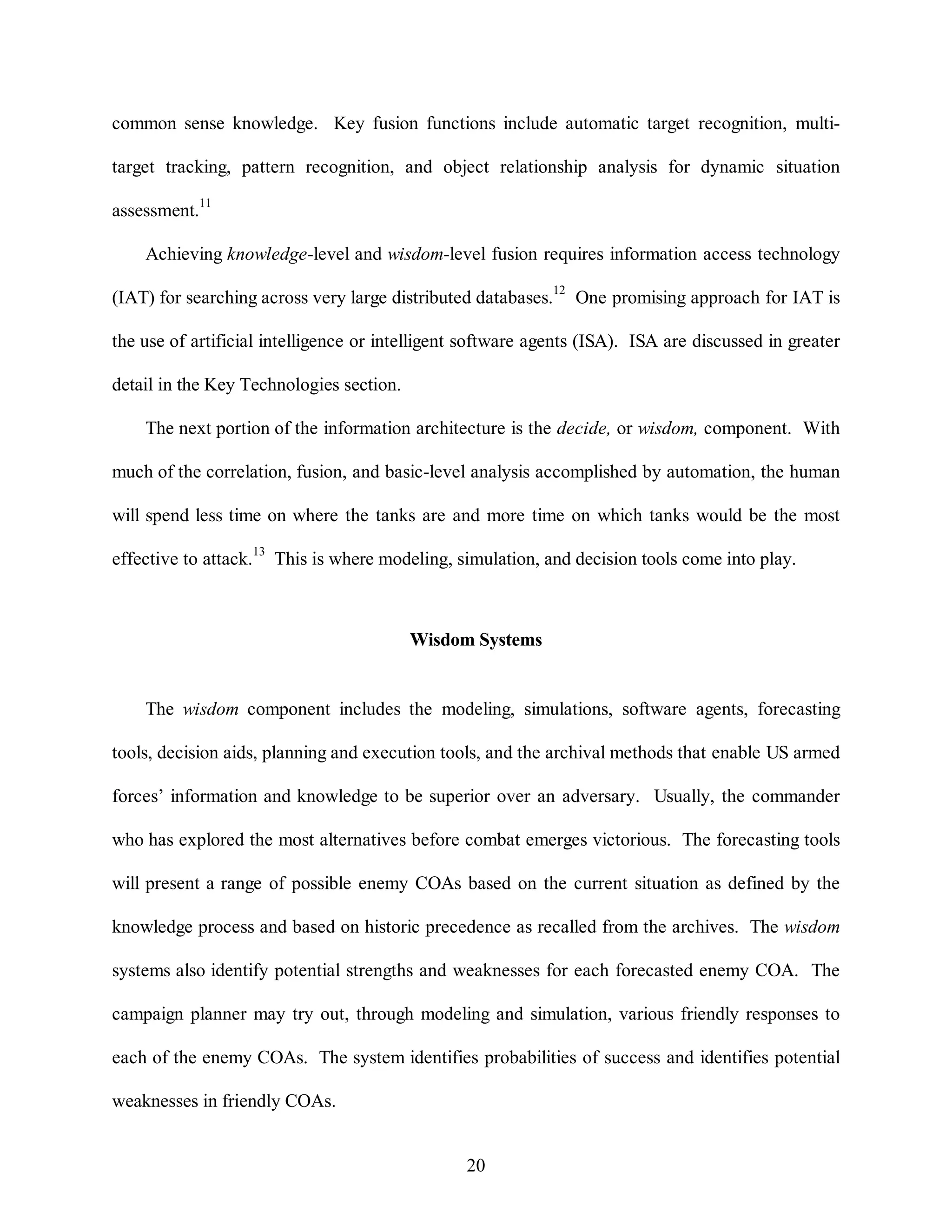
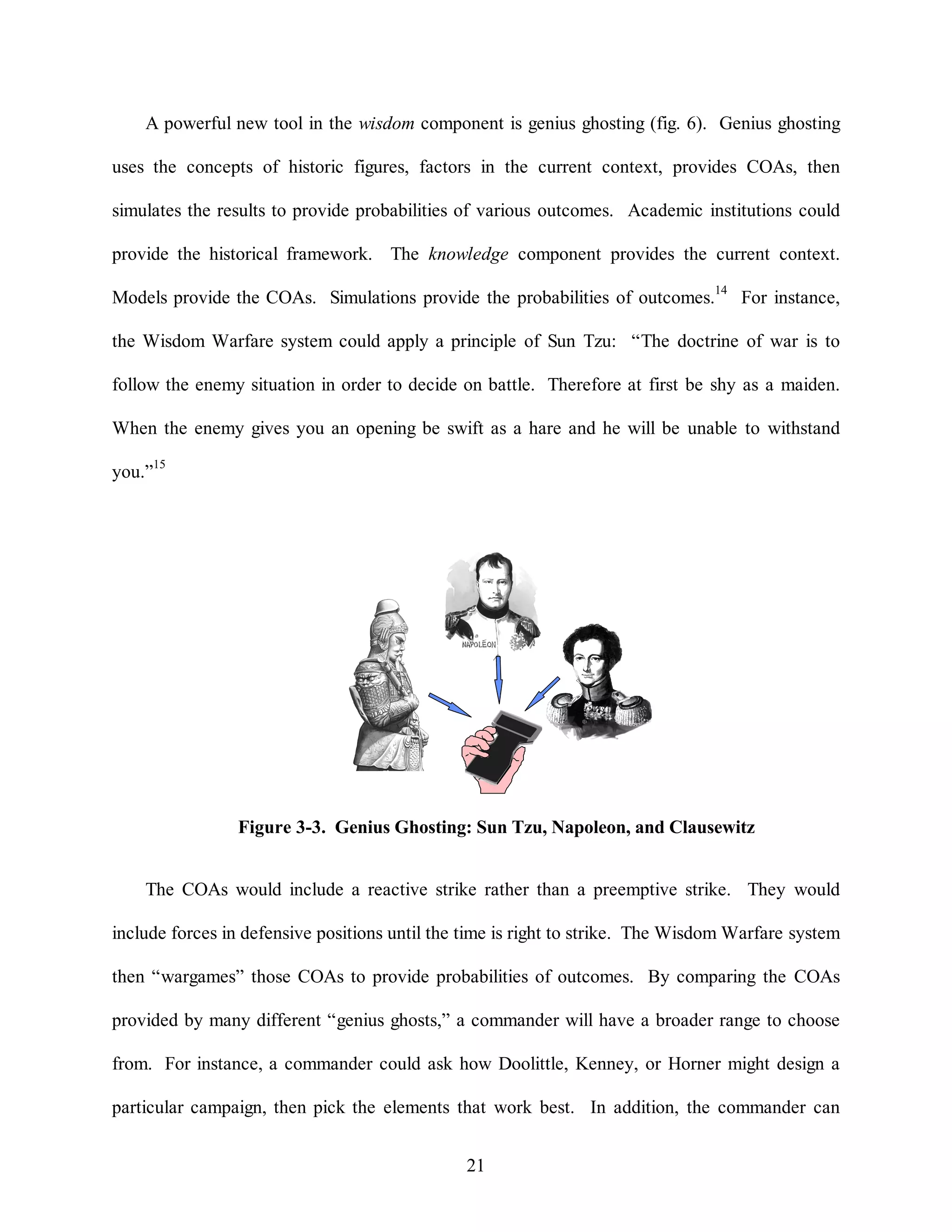
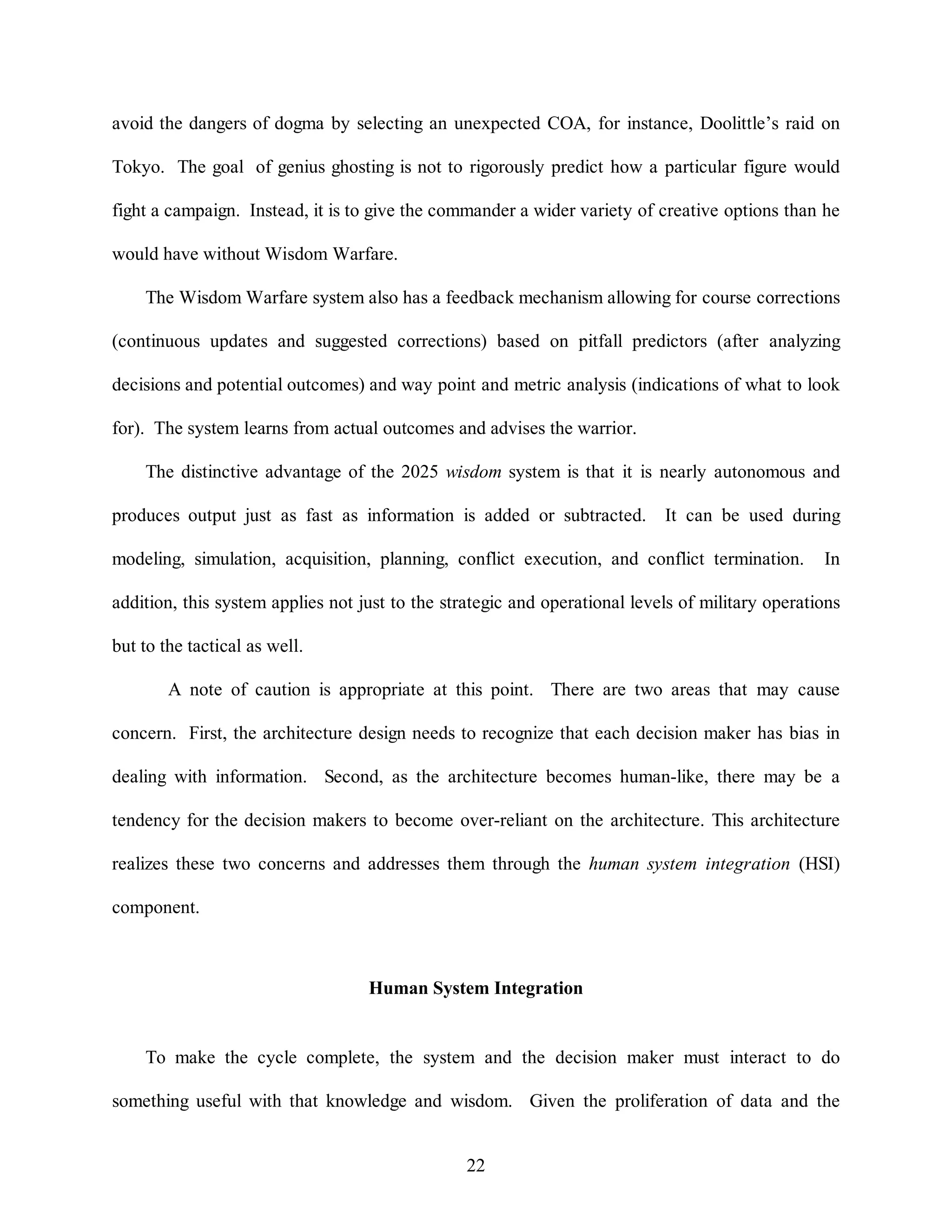
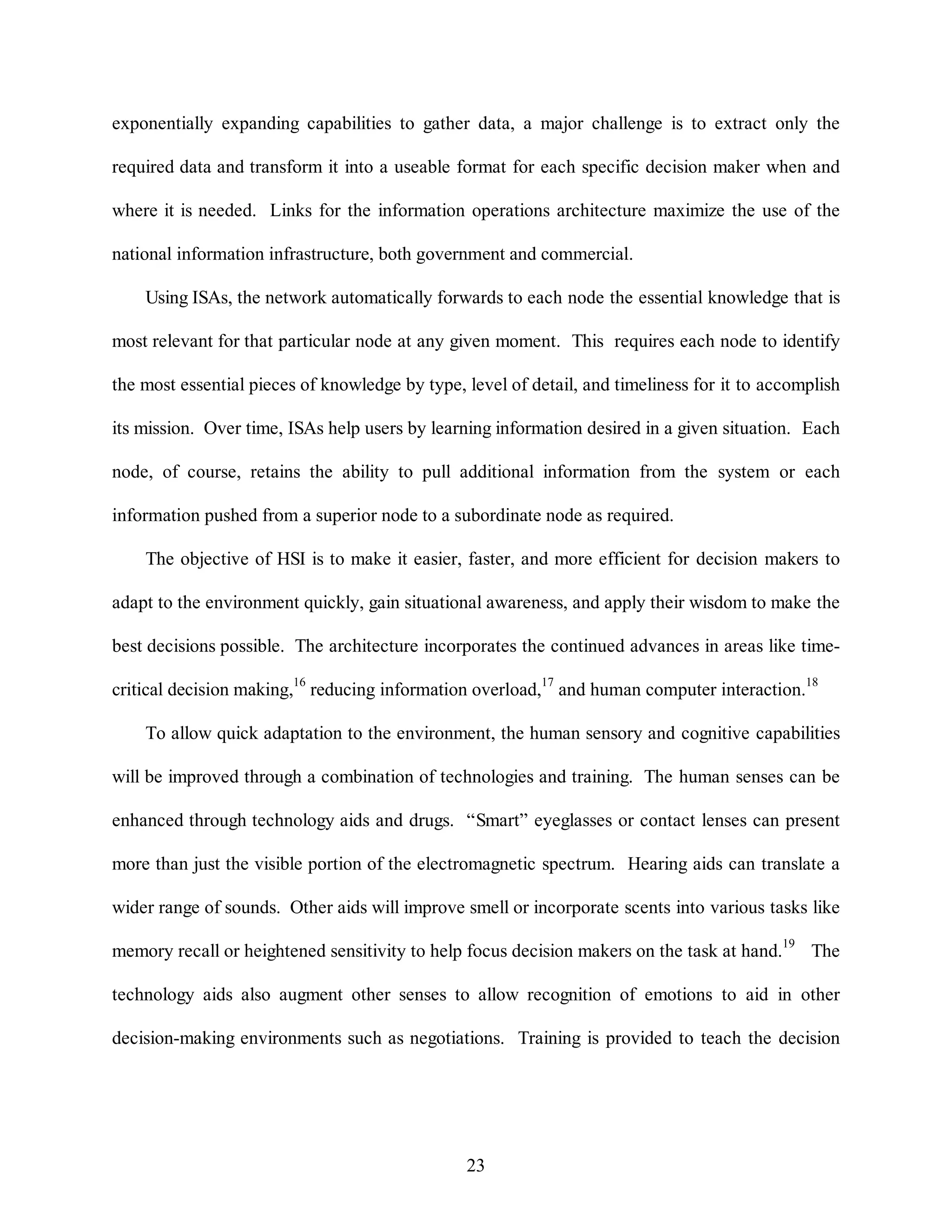
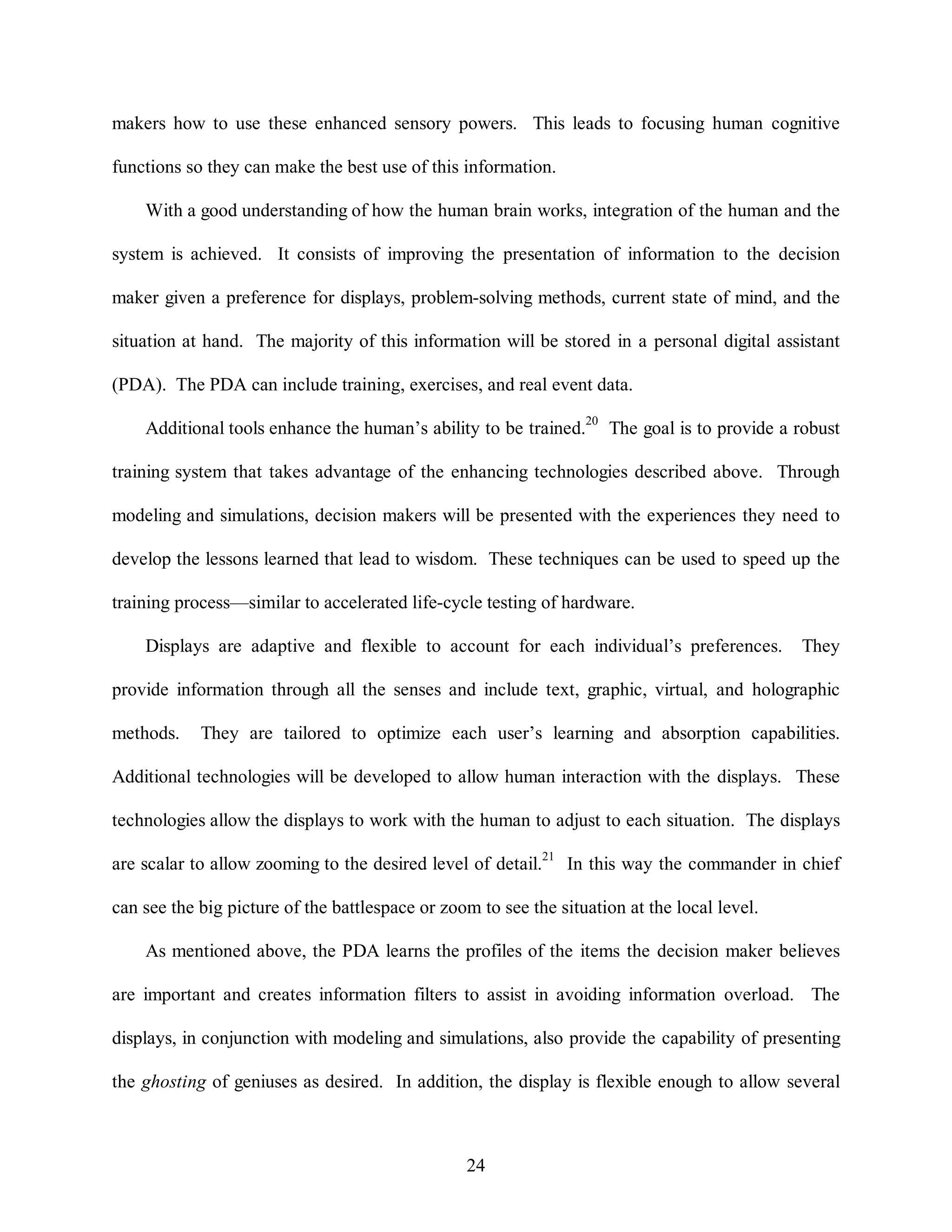
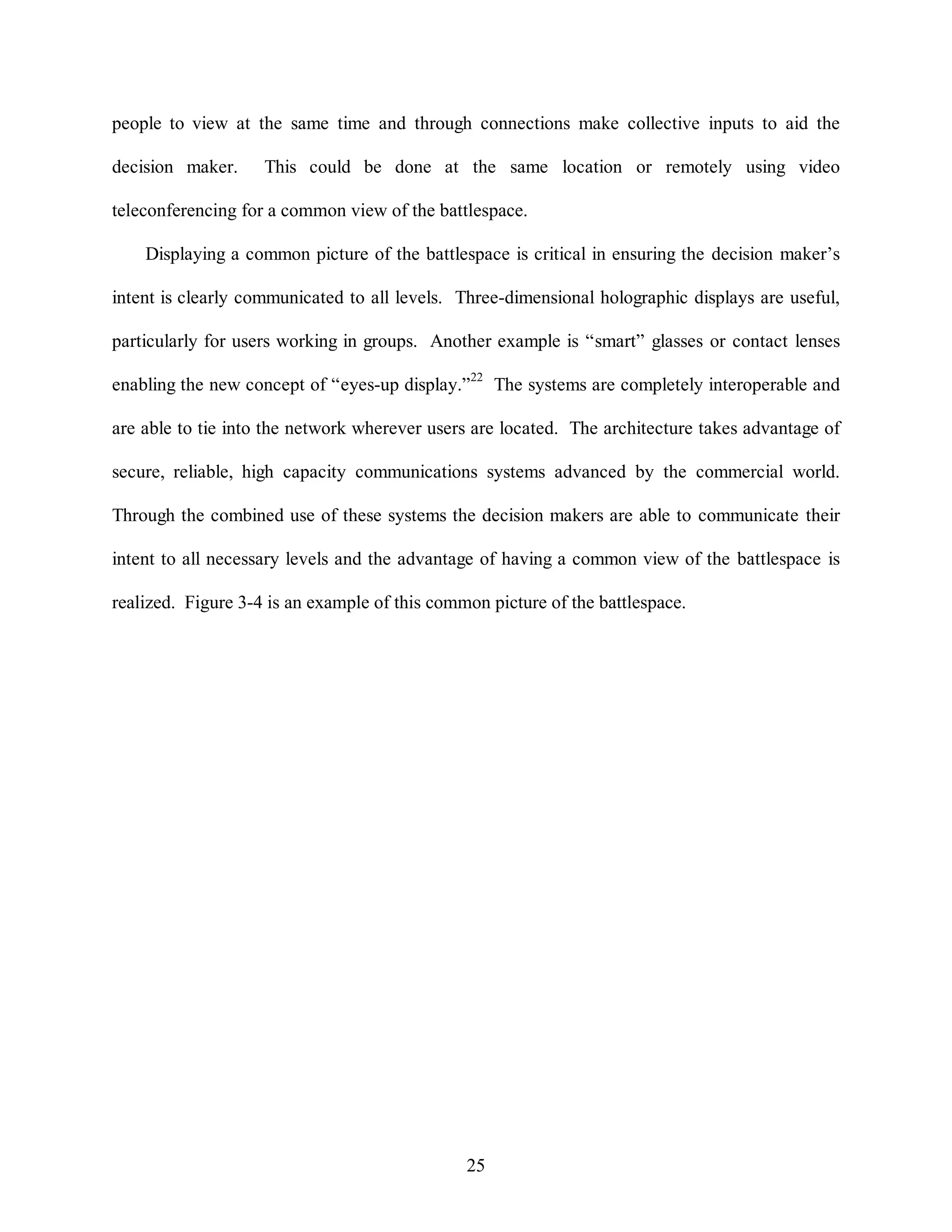
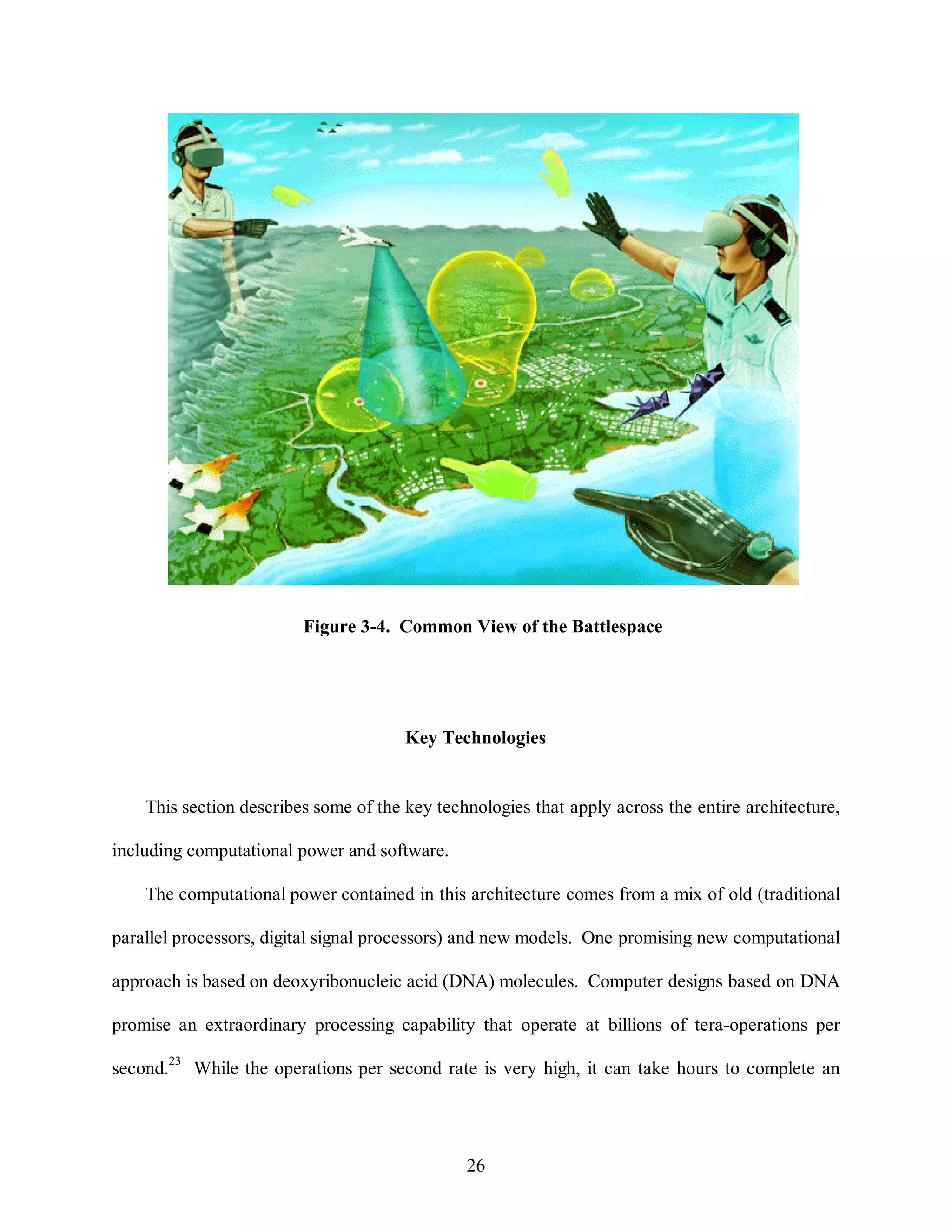
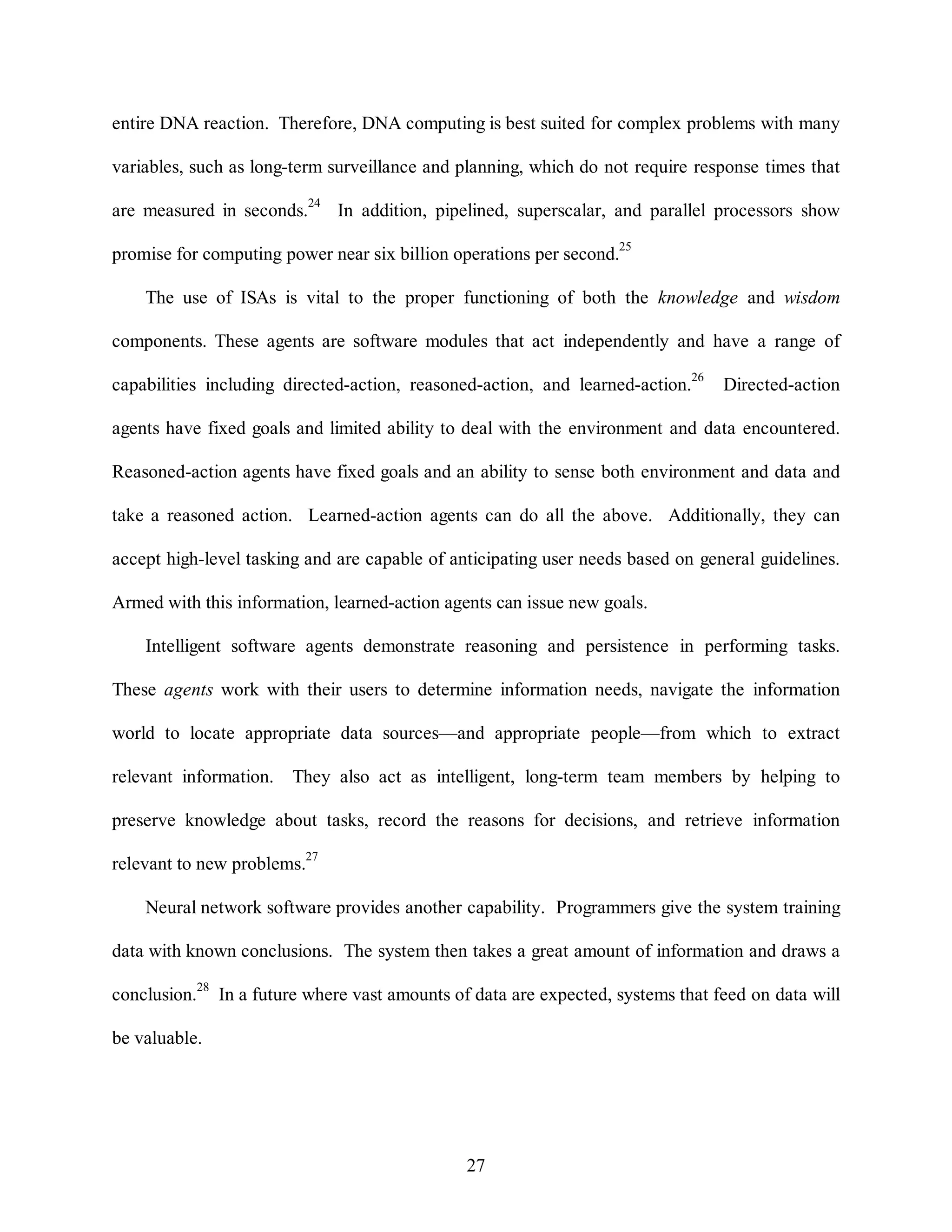
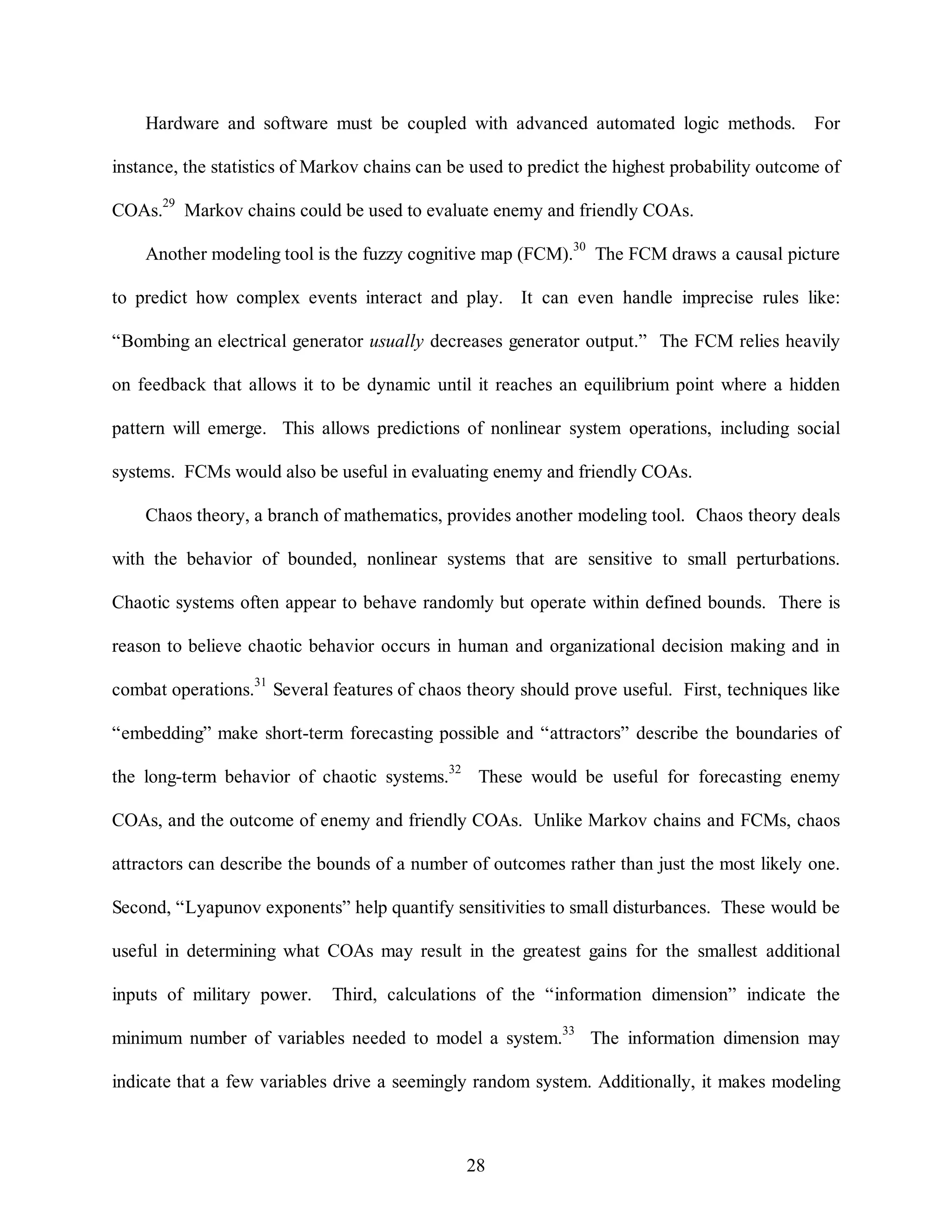
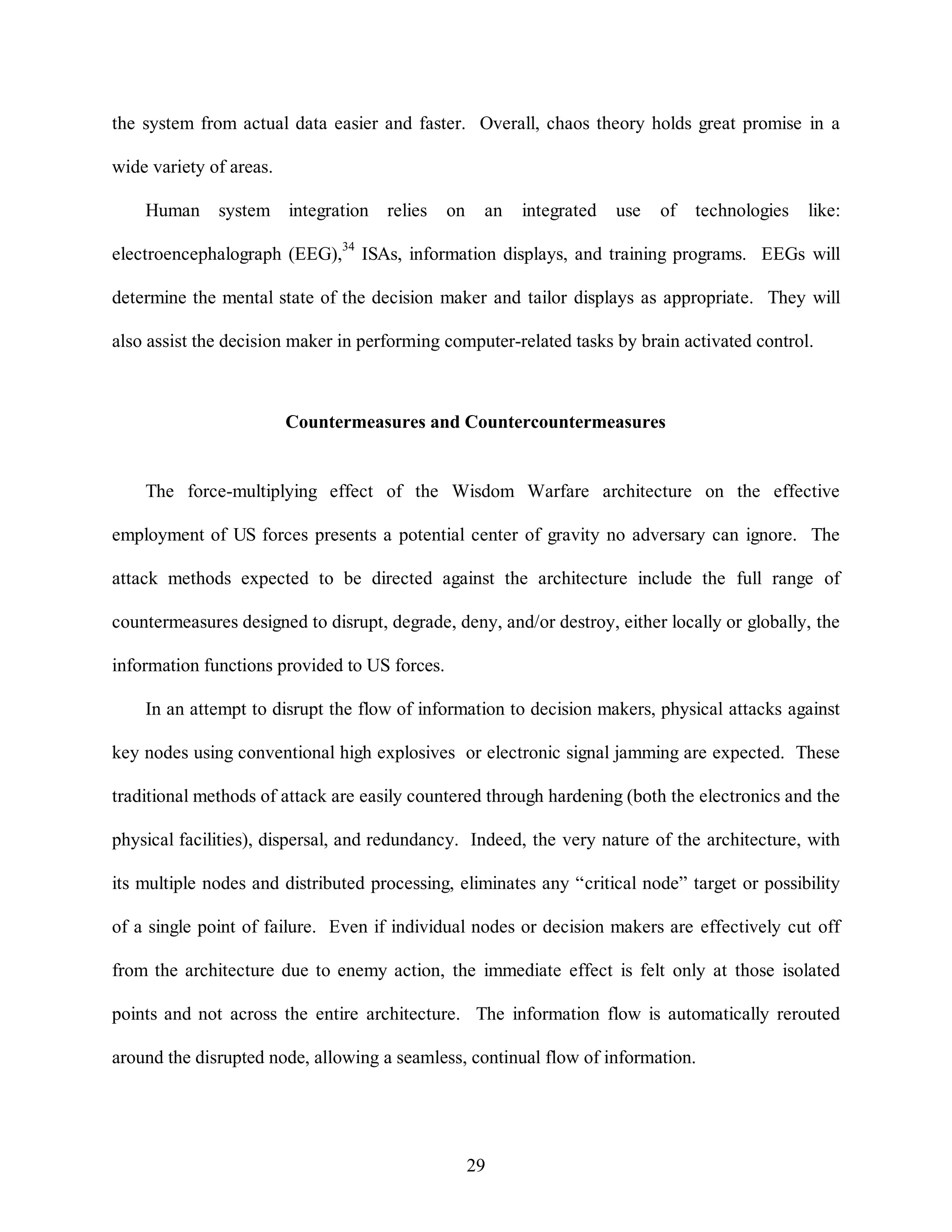
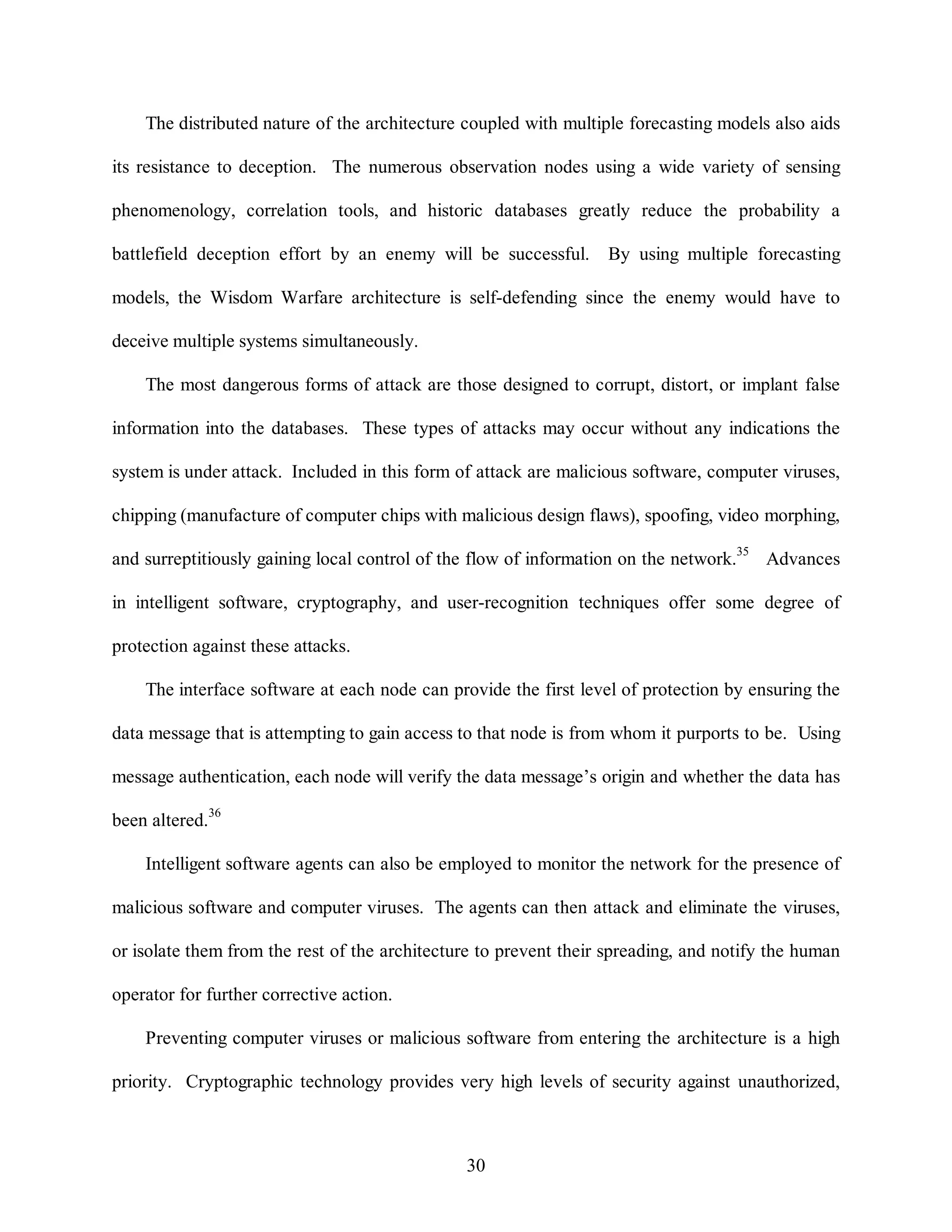
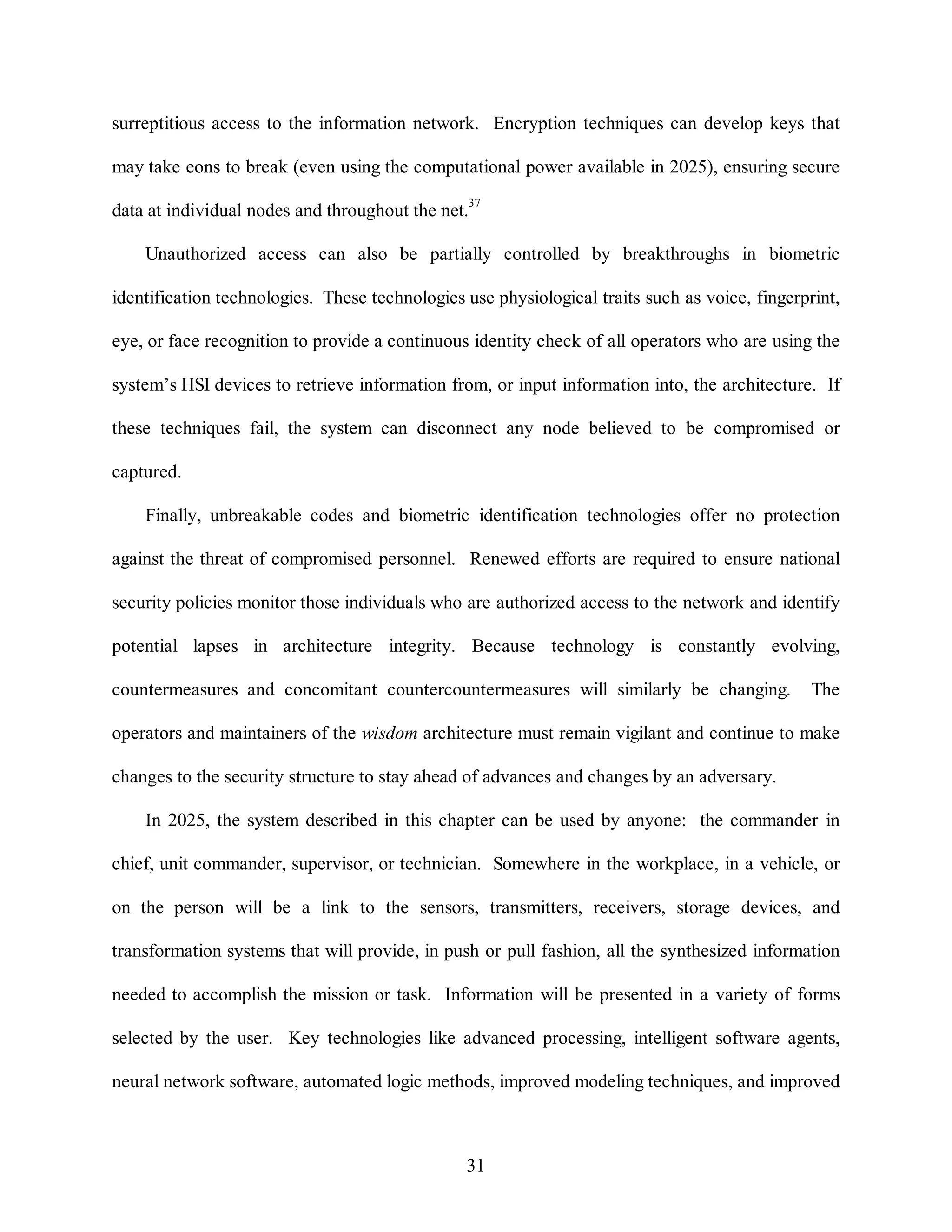
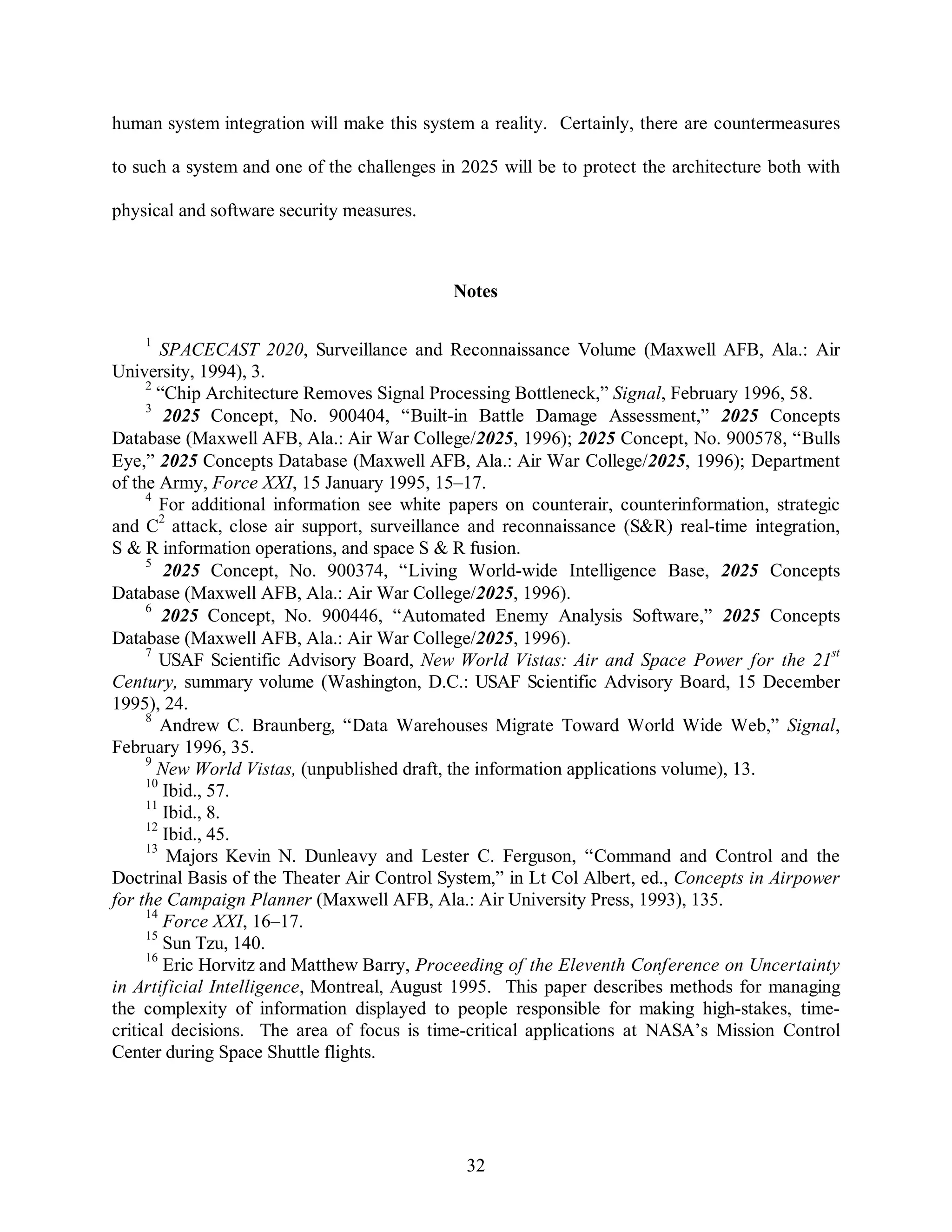
![17 Pattie Maes, Massachusetts Institute of Technology Media Laboratory, “Agents that
Reduce Work and Information Overload,” Internet address: http://pattie.www.media.mit.edu/
people/pattie/CACM-94/CACM-94.pl.html, 1 February 1996. This paper describes a new style
human-computer interaction, where the computer becomes an intelligent, active and personalized
collaborator using interface agents that employ artificial intelligence and learn from the user as
well as other agents.
18 Allen Sears and Robert Neches, Advanced Research Projects Agency, Information
Technology Office, “Human Computer Interaction,” Internet address: http://www.ito.arpa.mil/
ResearchAreas/HCI.html, 10 April 1996. This program will support effective and efficient
communication between human users and computer-based systems. A key focus is on interactive
agents that focus the attention of the user and the software components on critical issues for
specific tasks.
19 Richard Axel, “Mammals Can Recognize Thousands of Odors, Some of Which Prompt
Powerful Response,” Scientific American 273, no. 4 (October 1995): 154–159.
20 Advanced Research Projects Agency, “Computer Aided Education and Training,” Internet
address: http://www.ito.arpa.mil/ ResearchAreas/CAETI.html, 31 January 1996.
21 2025 Concept, No. 900667, “Real-time War Status Board,” 2025 Concepts Database
(Maxwell AFB, Ala.: Air War College/2025, 1996).
22 2025 Concept, No. 900385, “3-D Holographic Battlefield Display,” 2025 Concepts
Database (Maxwell AFB, Ala.: Air War College/2025, 1996); 2025 Concept, No. 900417,
“Battlespace Awareness Holosphere,” 2025 Concepts Database (Maxwell AFB, Ala.: Air War
College/2025, 1996); 2025 Concept, No. 900206, “Commander’s Universal [order of] Battle
Display,” 2025 Concepts Database (Maxwell AFB, Ala.: Air War College/2025, 1996); 2025
Concept, No. 900161, “Holographic C2 Sandbox,” 2025 Concepts Database (Maxwell AFB,
Ala.: Air War College/2025, 1996); 2025 Concept, No. 900115, “Don’t Blink,” 2025 Concepts
Database (Maxwell AFB, Ala.: Air War College/2025, 1996).
23 New World Vistas, (unpublished draft, the information applications volume), 14.
24 Ibid., 16; Kristin Leutwyler, “Calculating with DNA,” Scientific American 273, no. 3
33
(September 1995):18.
25 David A. Patterson, “Microprocessors in 2020,” Scientific American 273, no. 3
(September 1995): 48.
26 Pattie Maes, “Intelligent Software,” Scientific American 273, no. 3 (September 1995):
66.
27 New World Vistas, (unpublished draft, the information technology volume), 38–41.
28 E. B. Baatz, “Making Brain Waves,” CIO, 15 January 1996, 24.
29 Lt Col Robert J. Wood, “Information Engineering: The Foundation of Information
Warfare,” research report (Maxwell AFB, Ala.: Air War College, April 1995), 39; John G.
Kemeny and J. Laurie Snell, Finite Markov Chains (Princeton, N. J.: Van Nostrand, 1960), 24–
25, 182–184.
30 Bart Kosko, Fuzzy Thinking (New York: Hyperion, 1993), 222–235.
31 Maj Glenn E. James, United States Air Force Phillips Laboratory, Edwards AFB, Calif.,
interviewed during visit to Air Command and Staff College, Maxwell AFB, Ala., 8 March 1996;](https://image.slidesharecdn.com/vol1ch01-140914105042-phpapp02/75/Vol1ch01-39-2048.jpg)
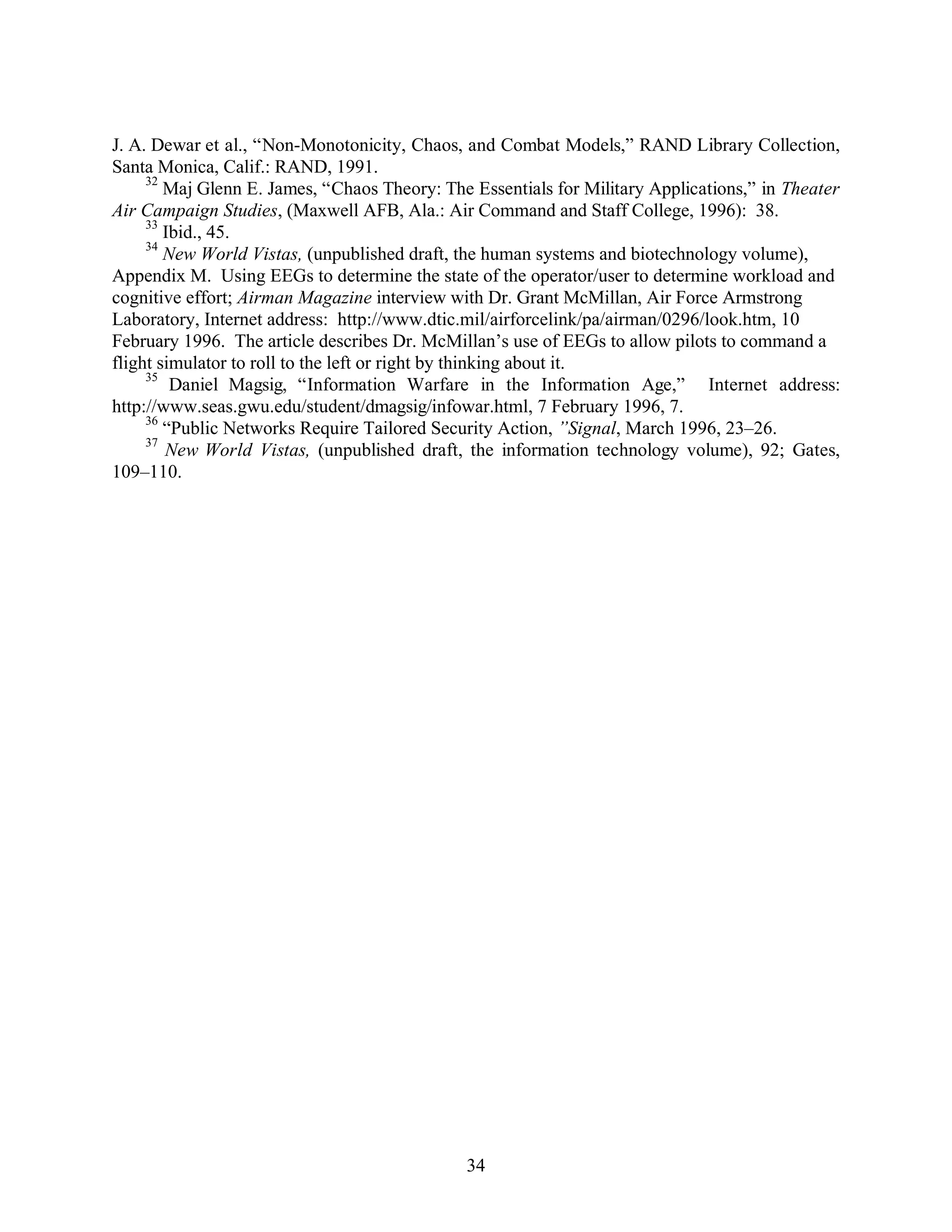
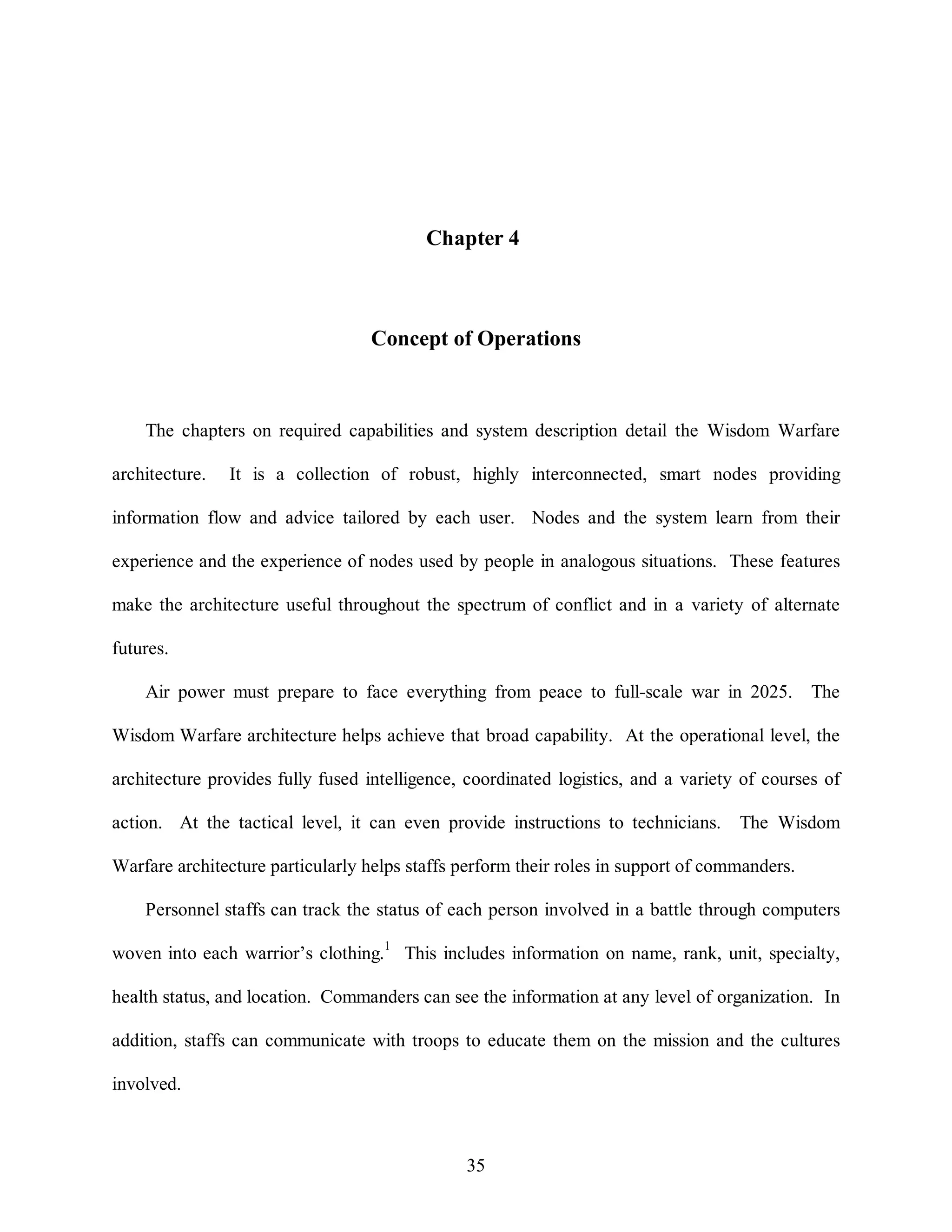
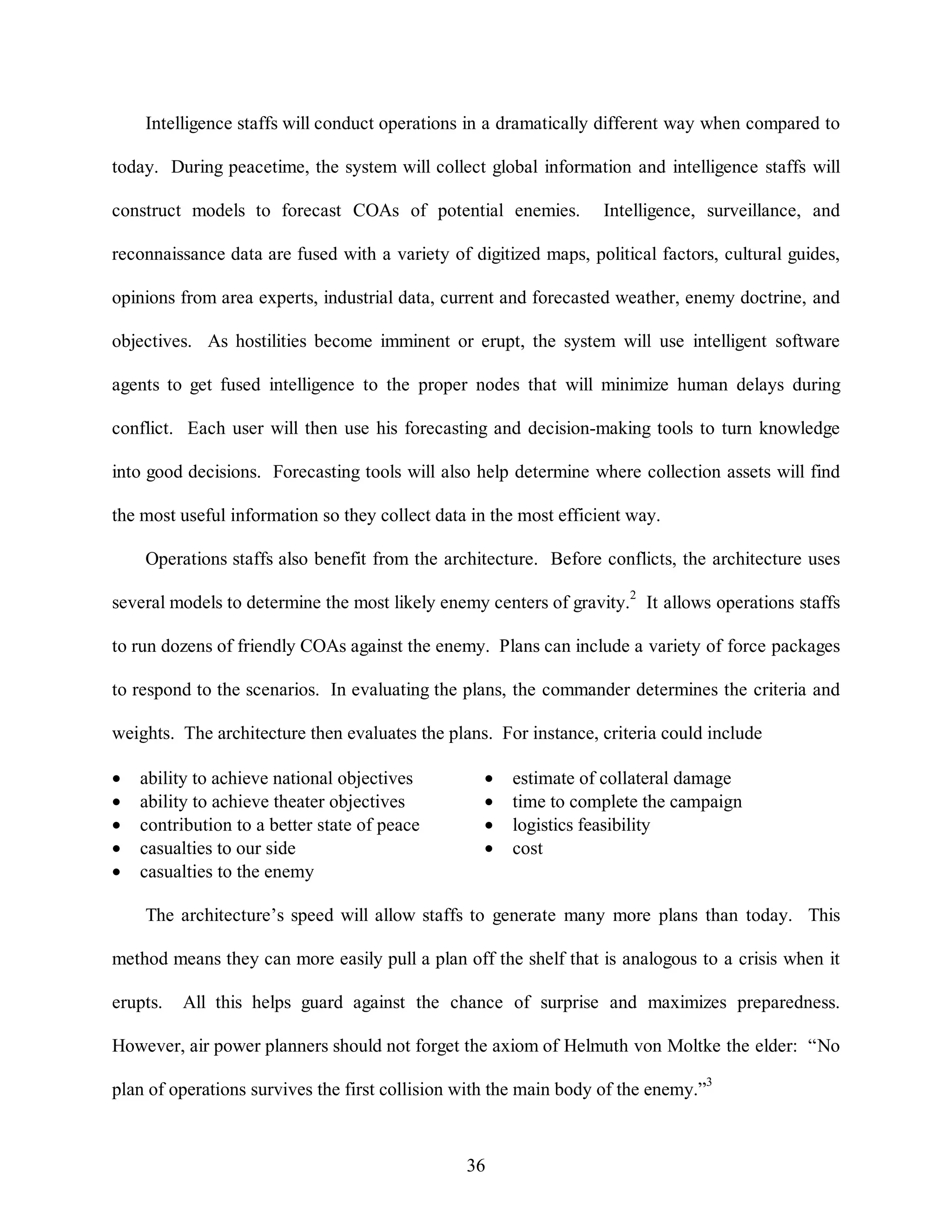

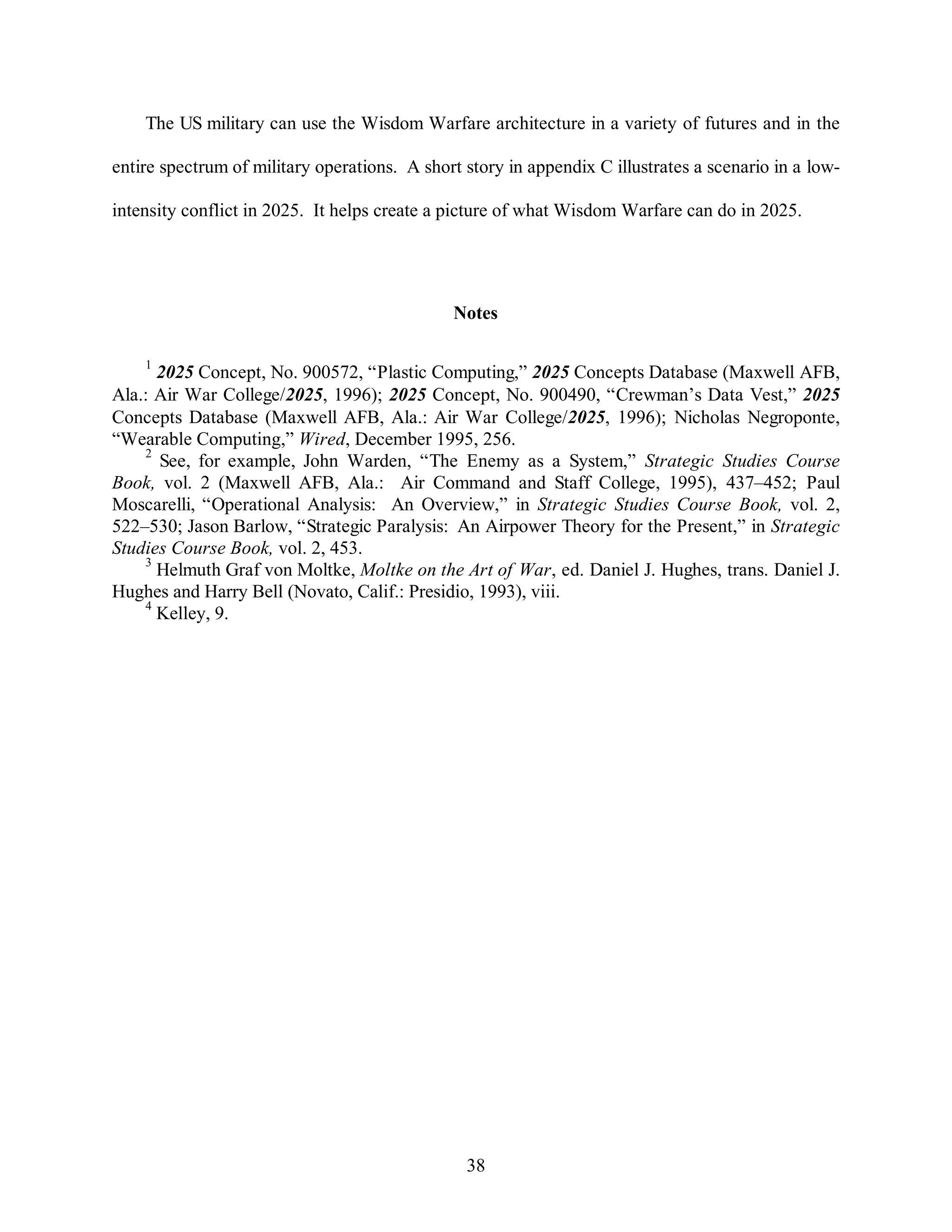
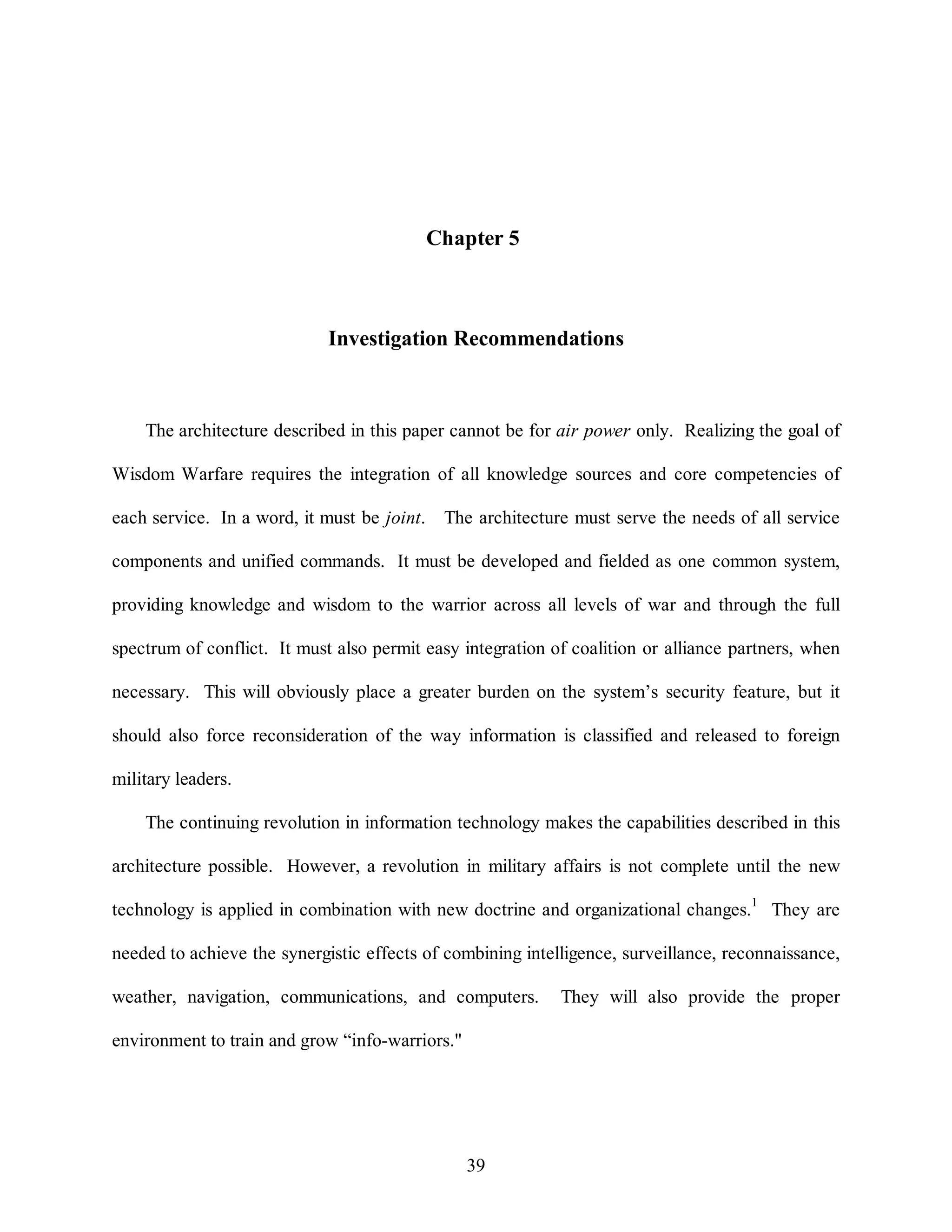
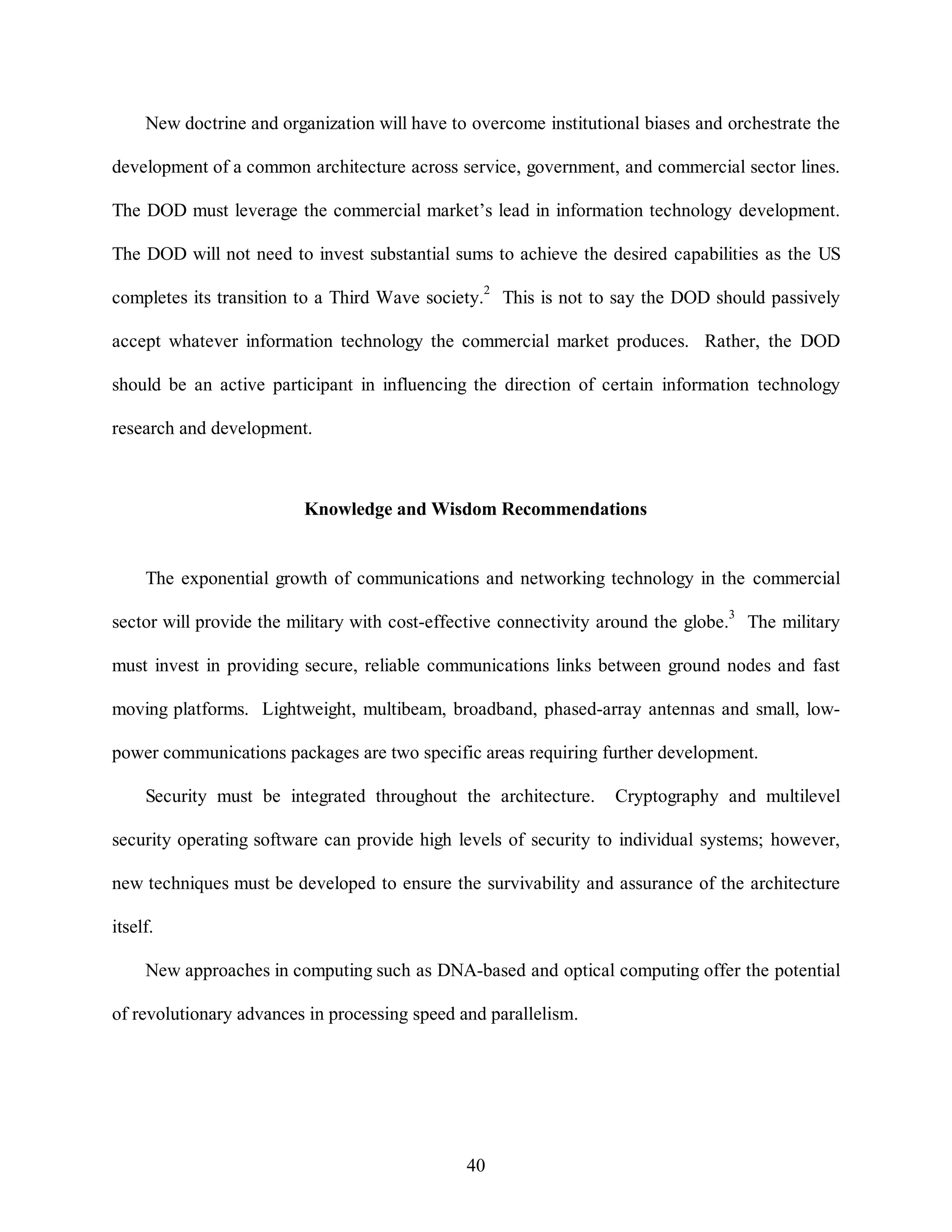
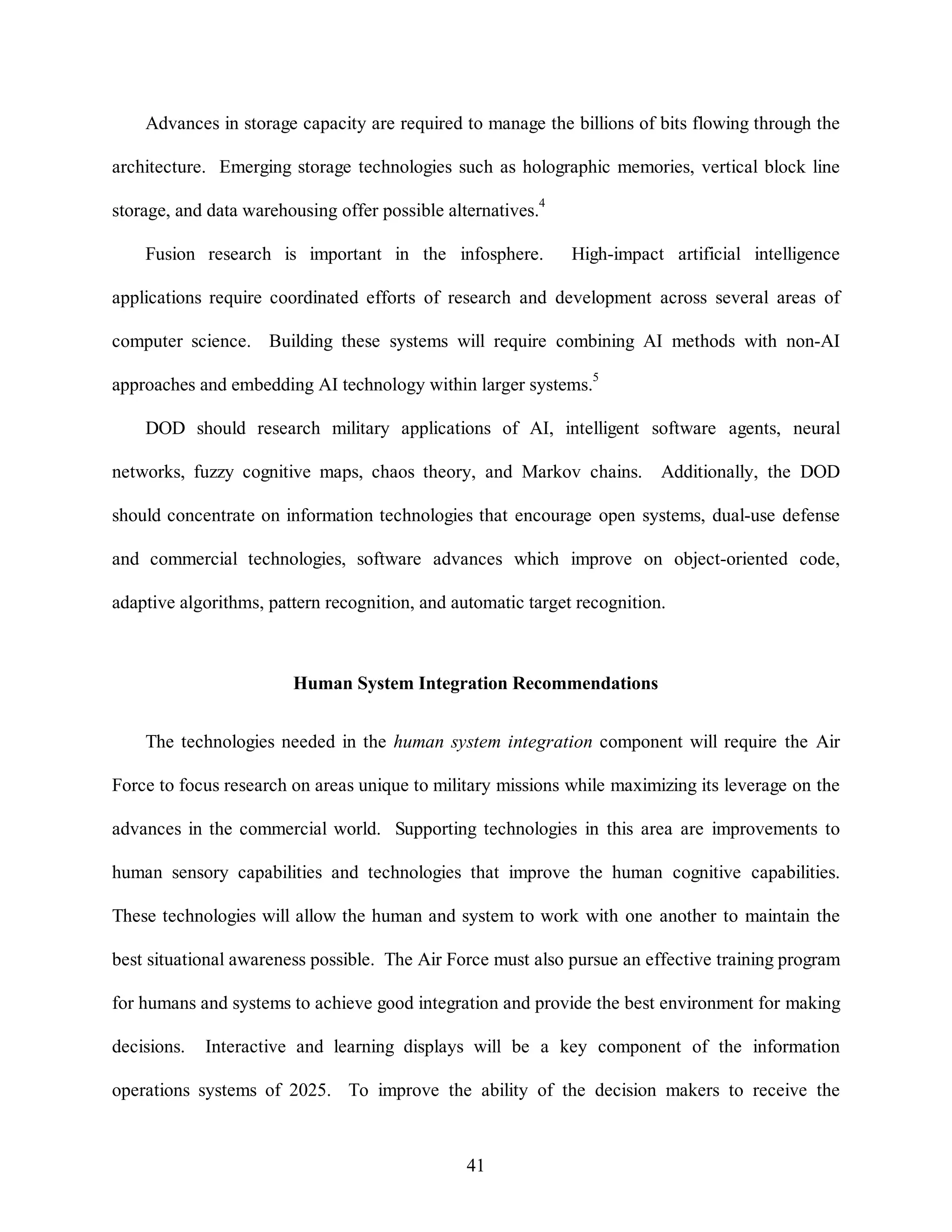
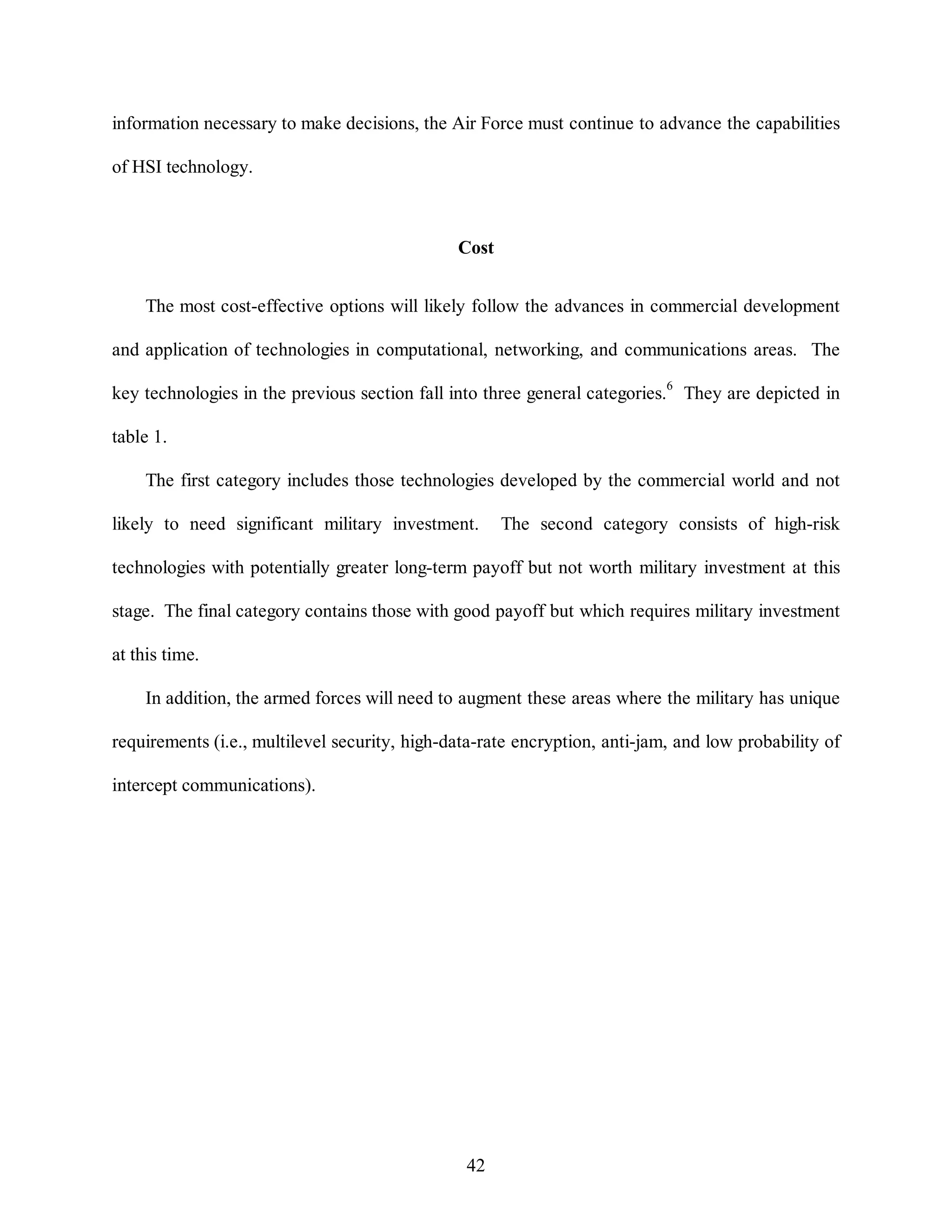
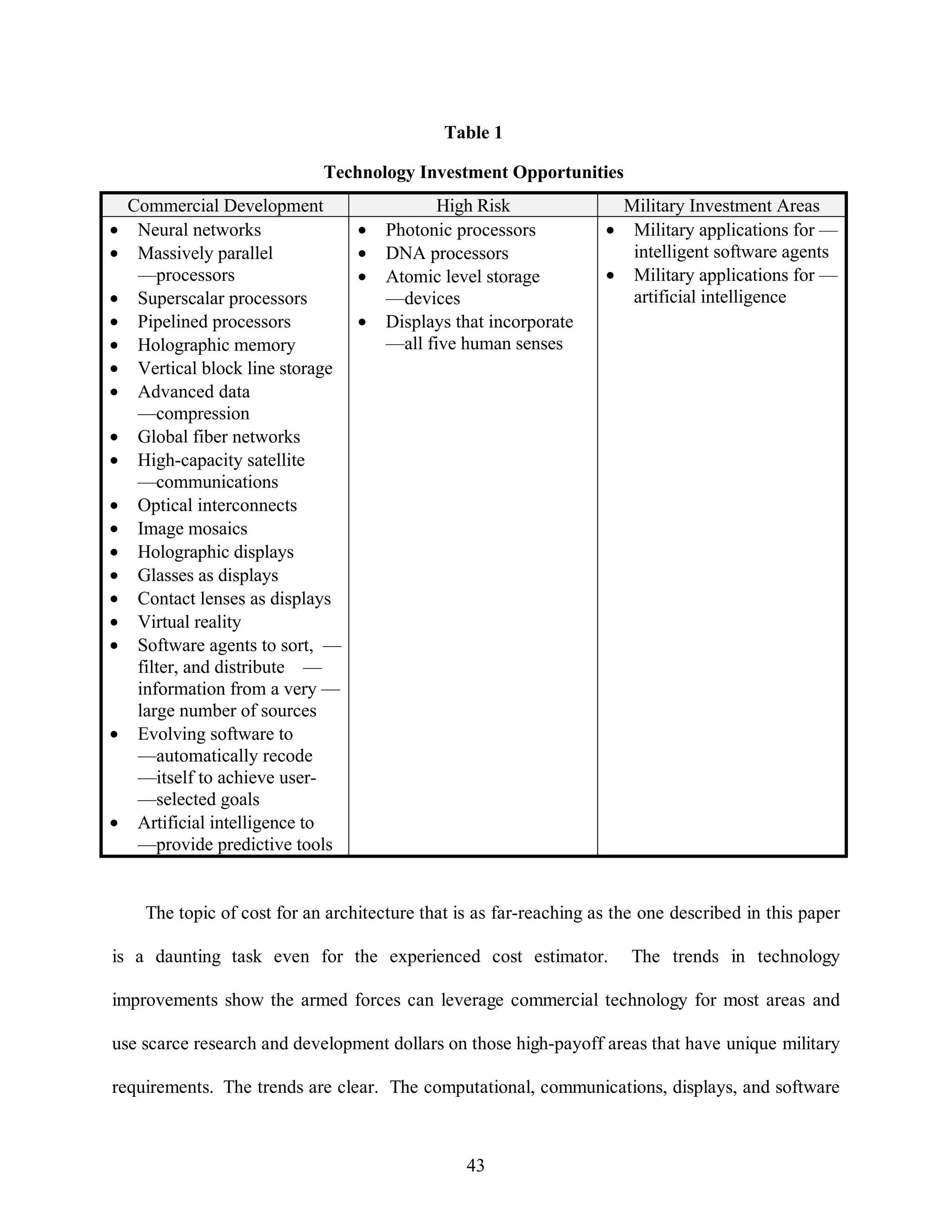
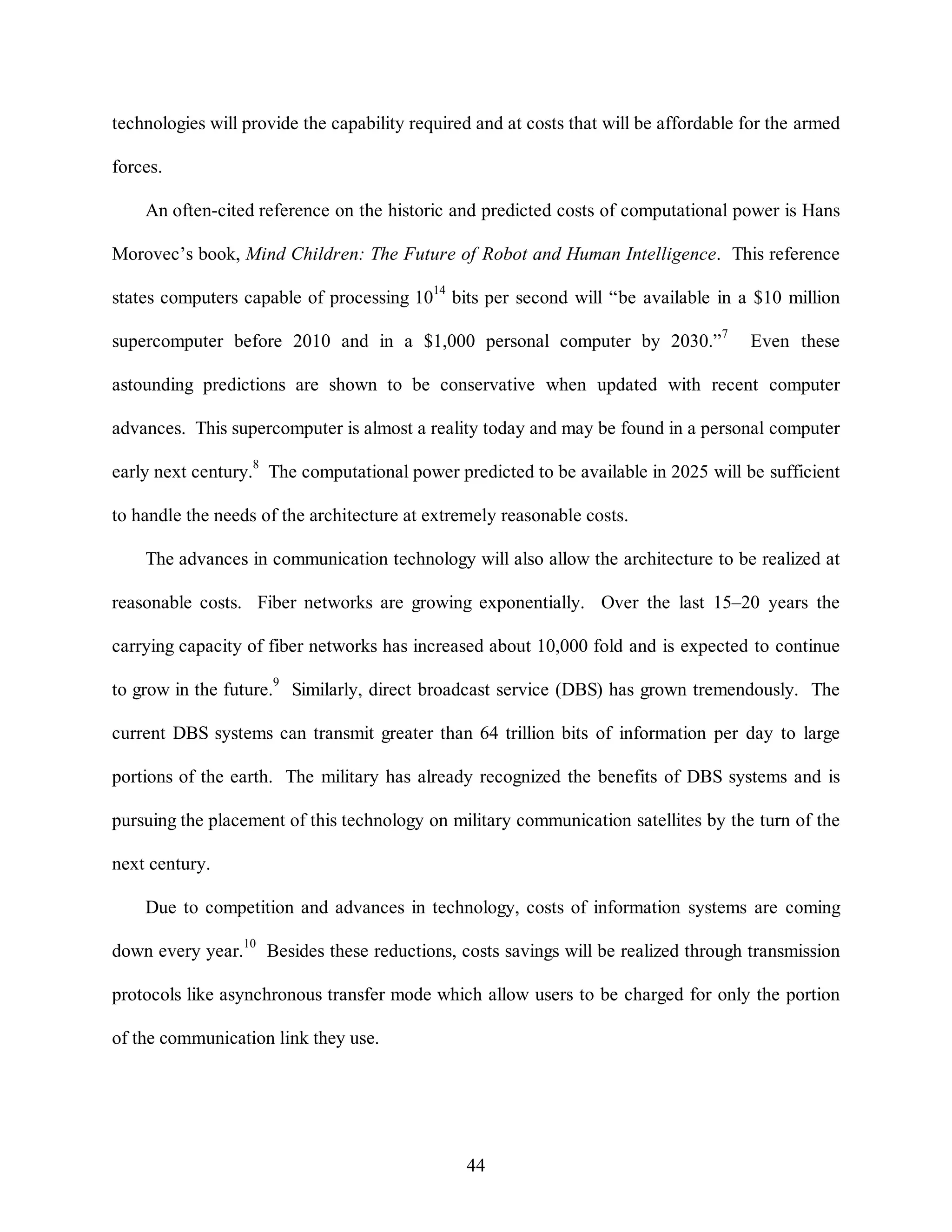
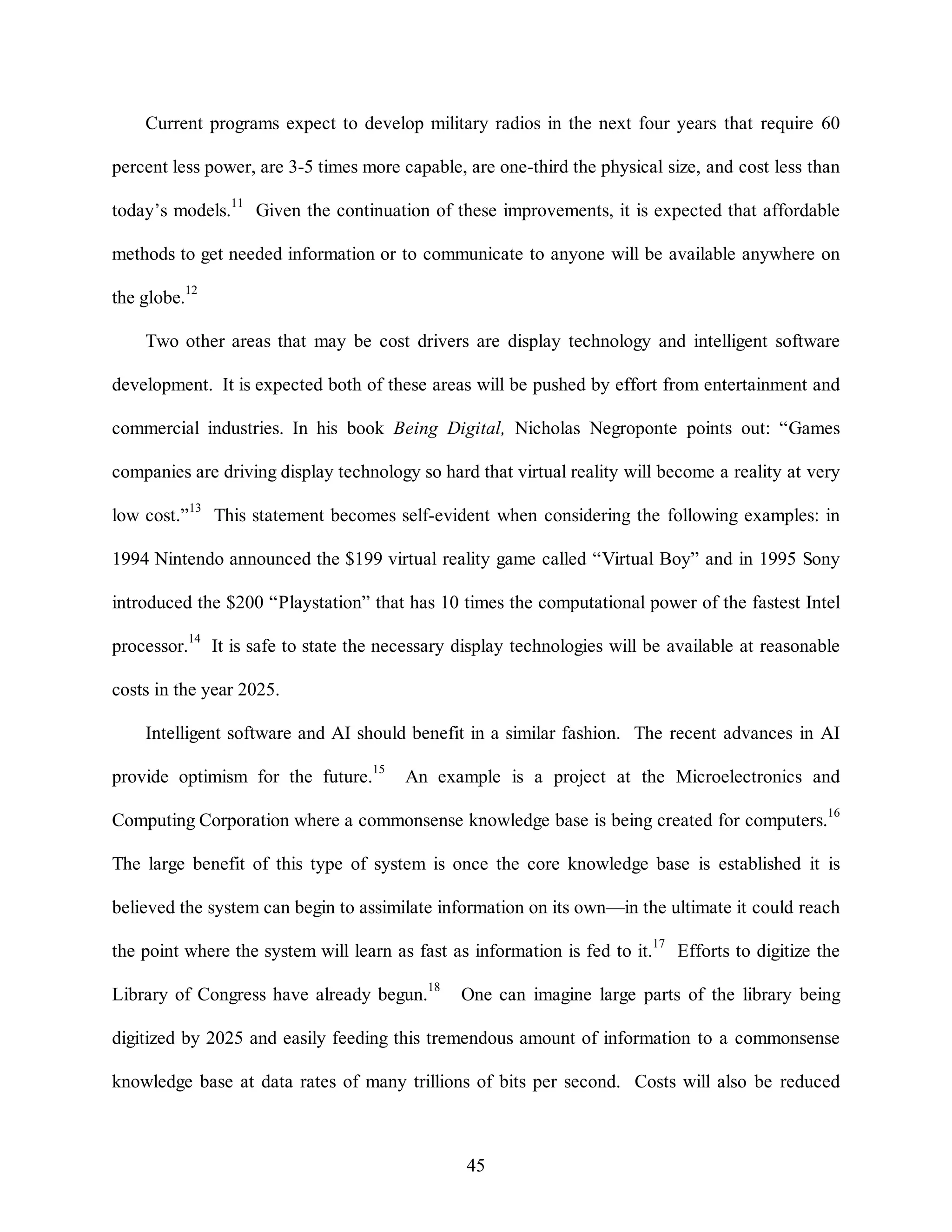
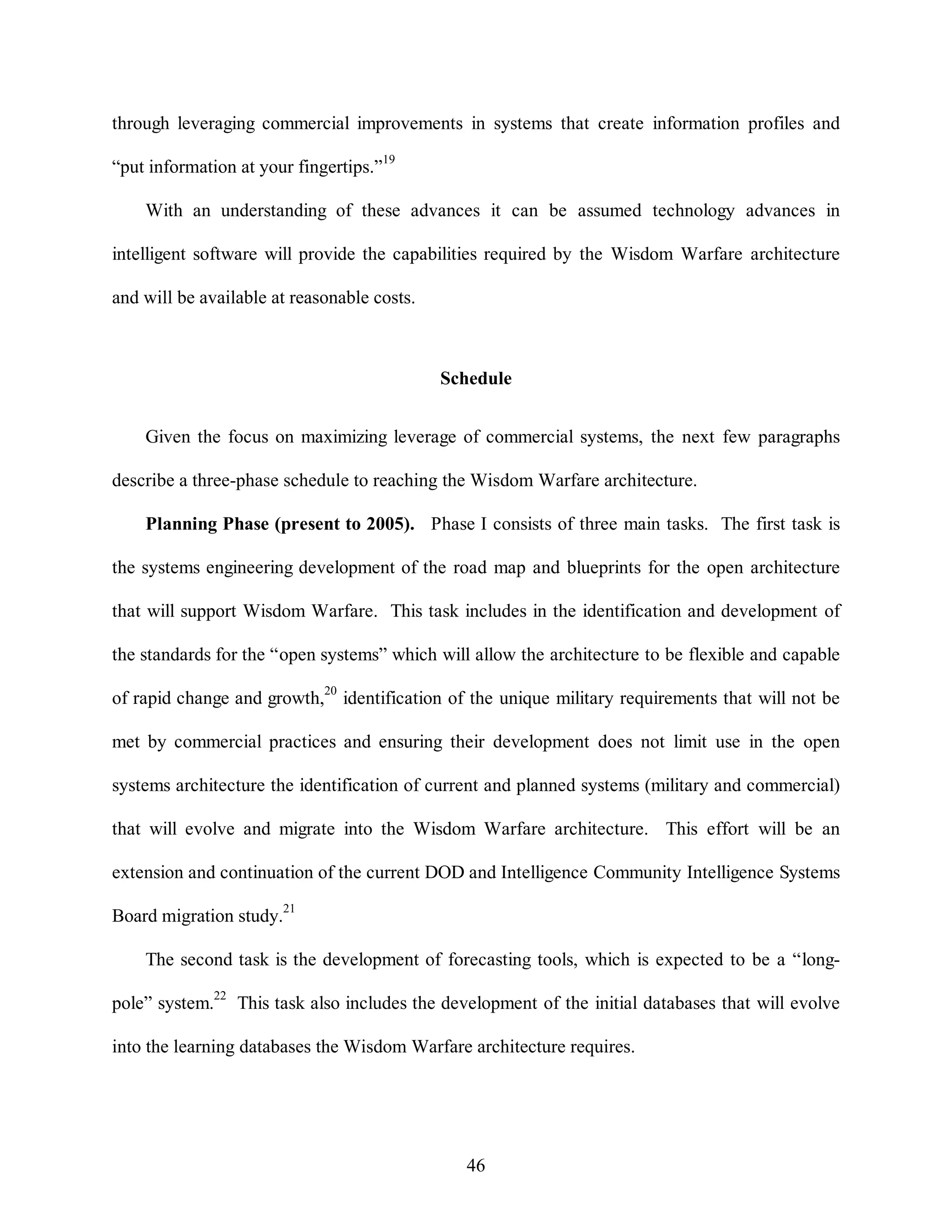
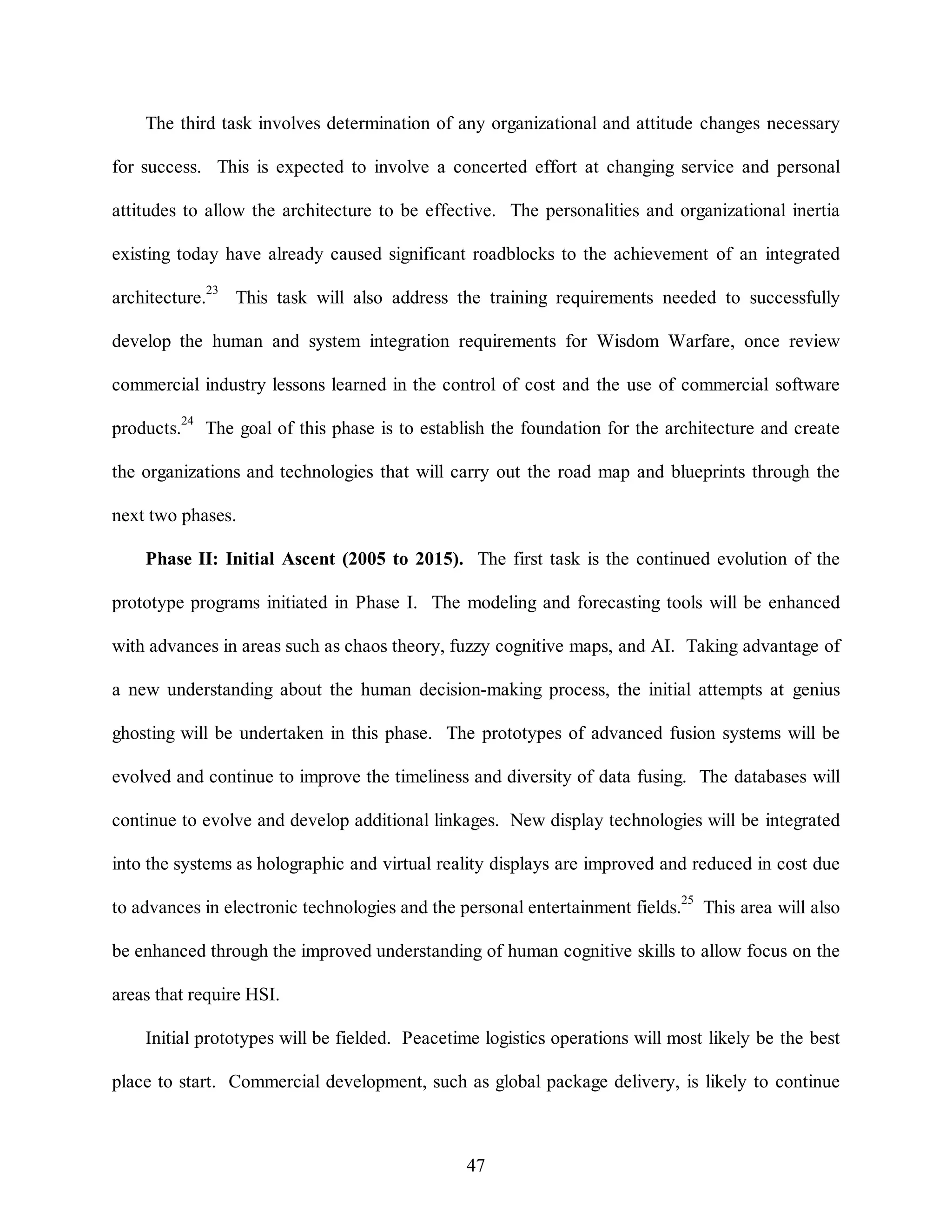
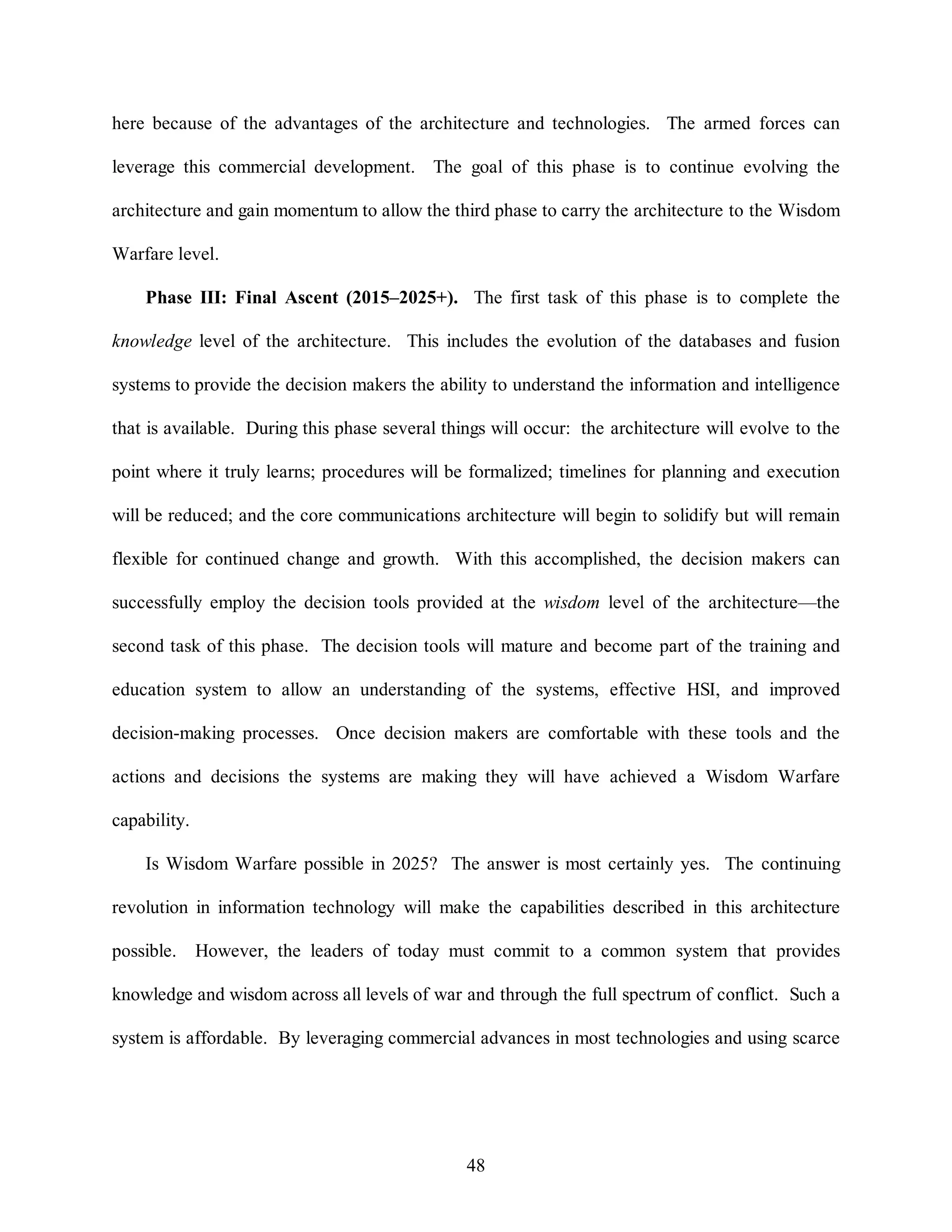
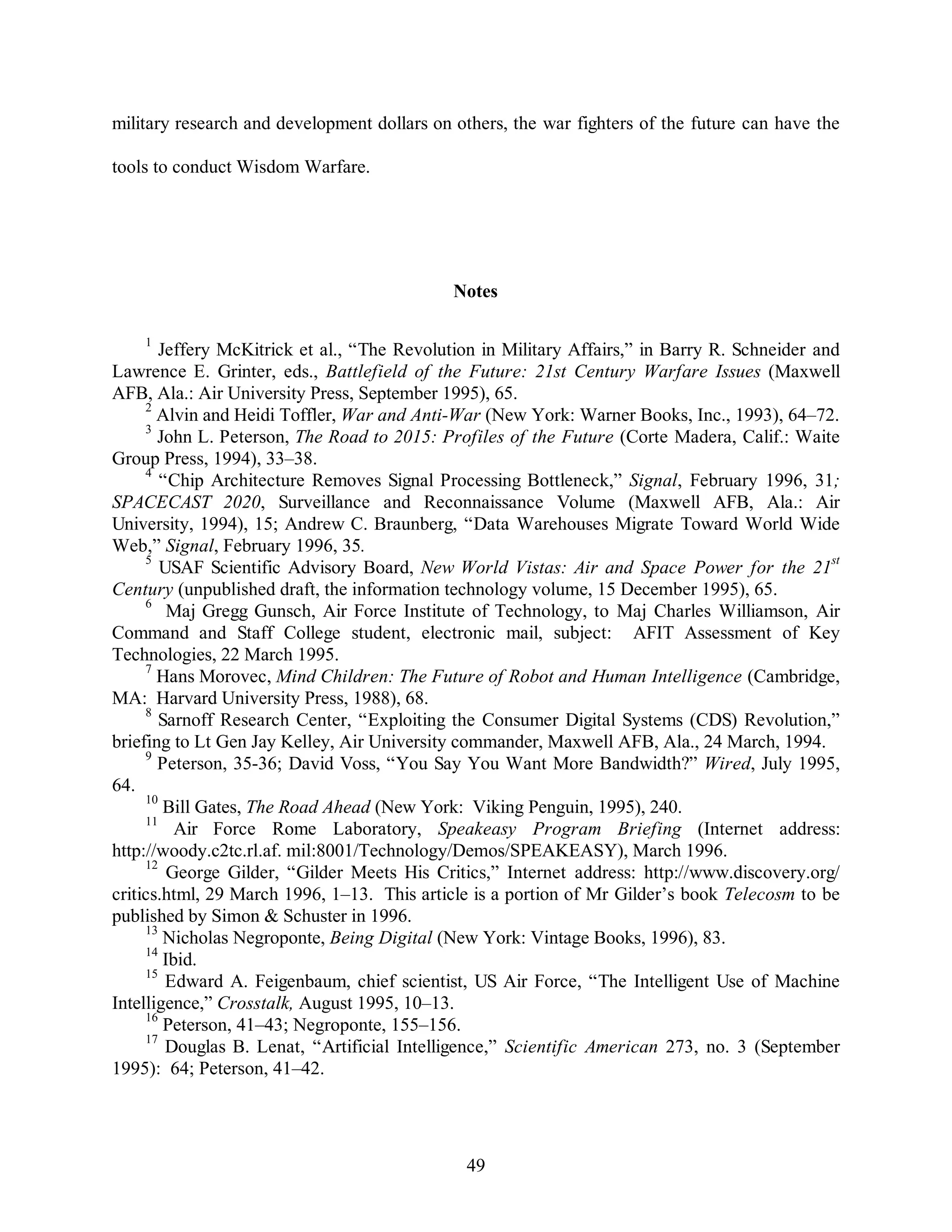
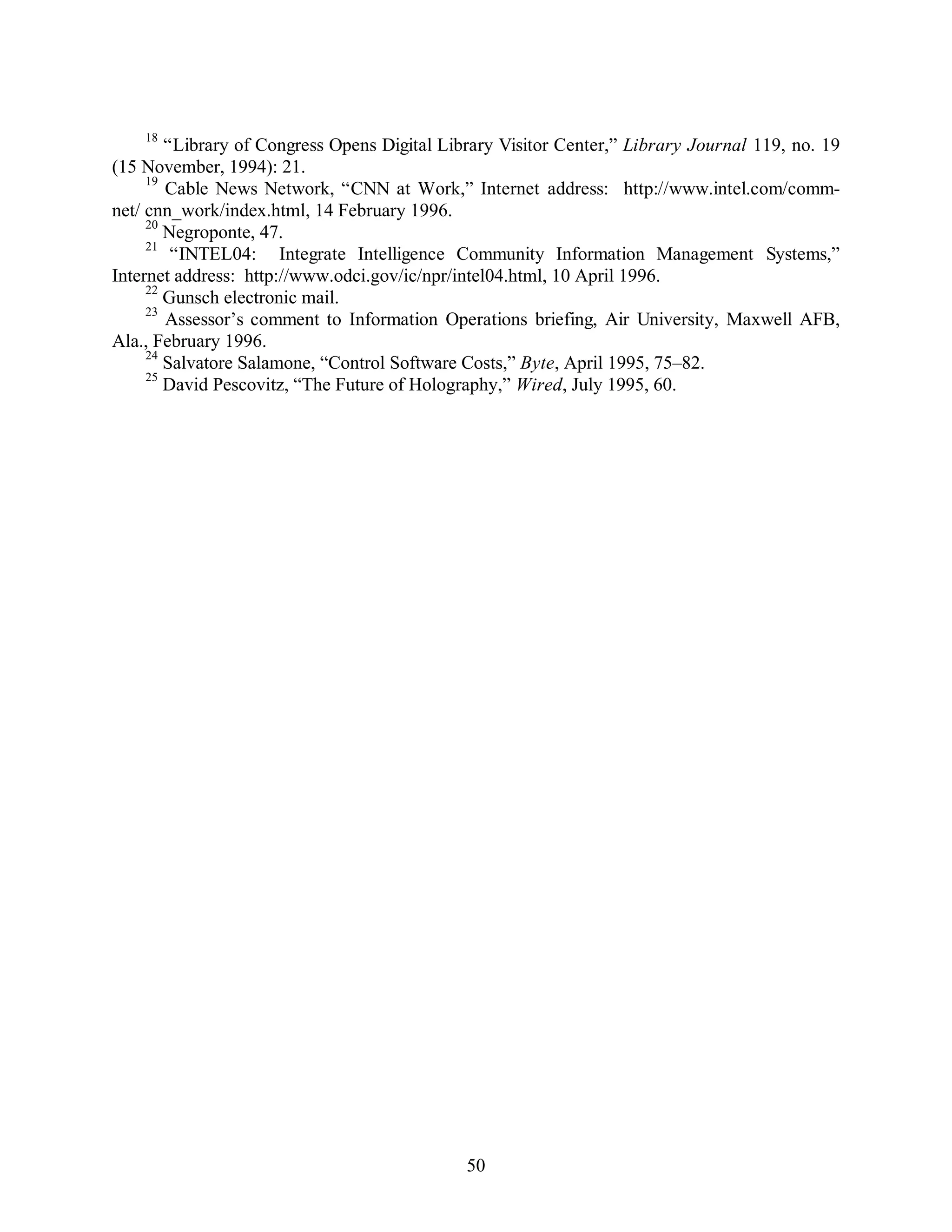
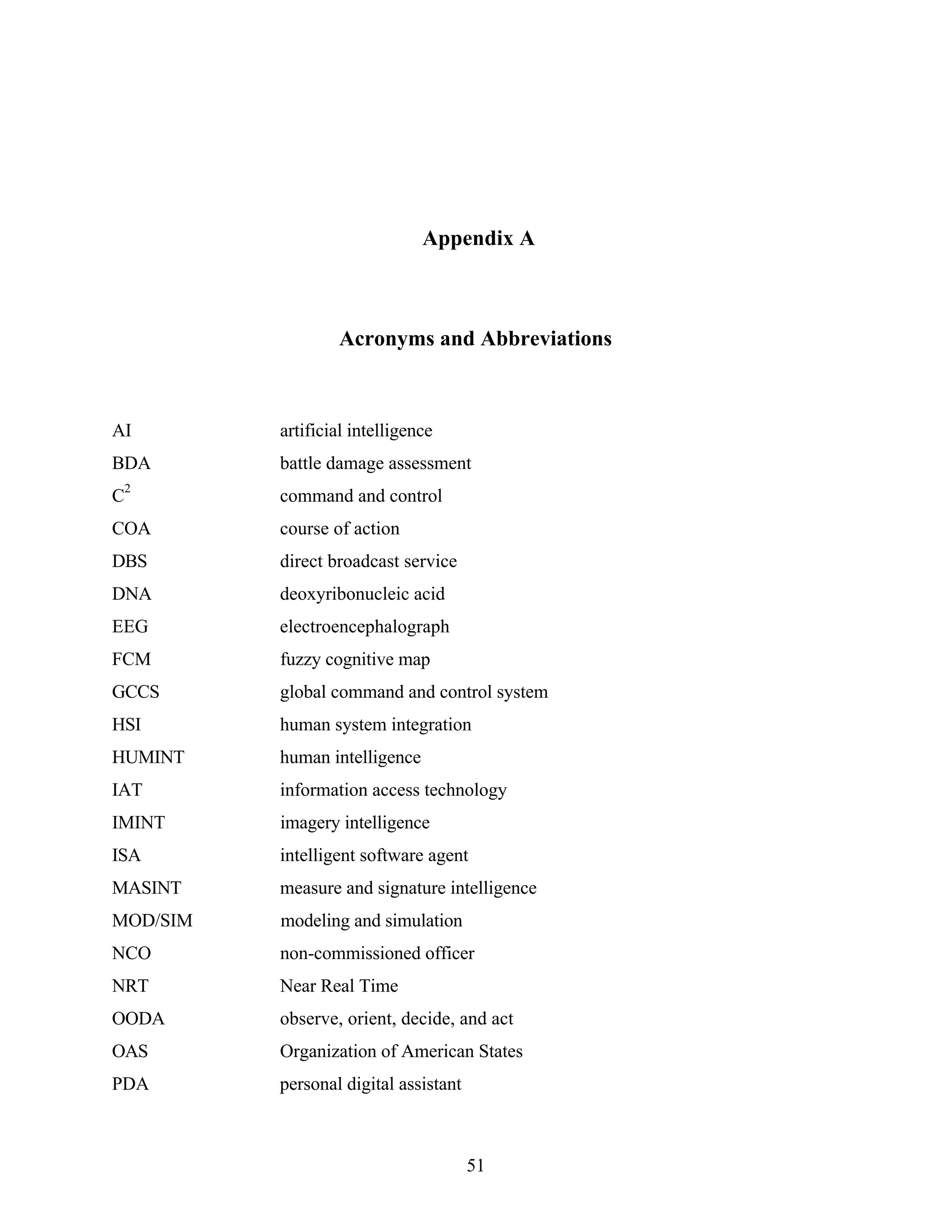
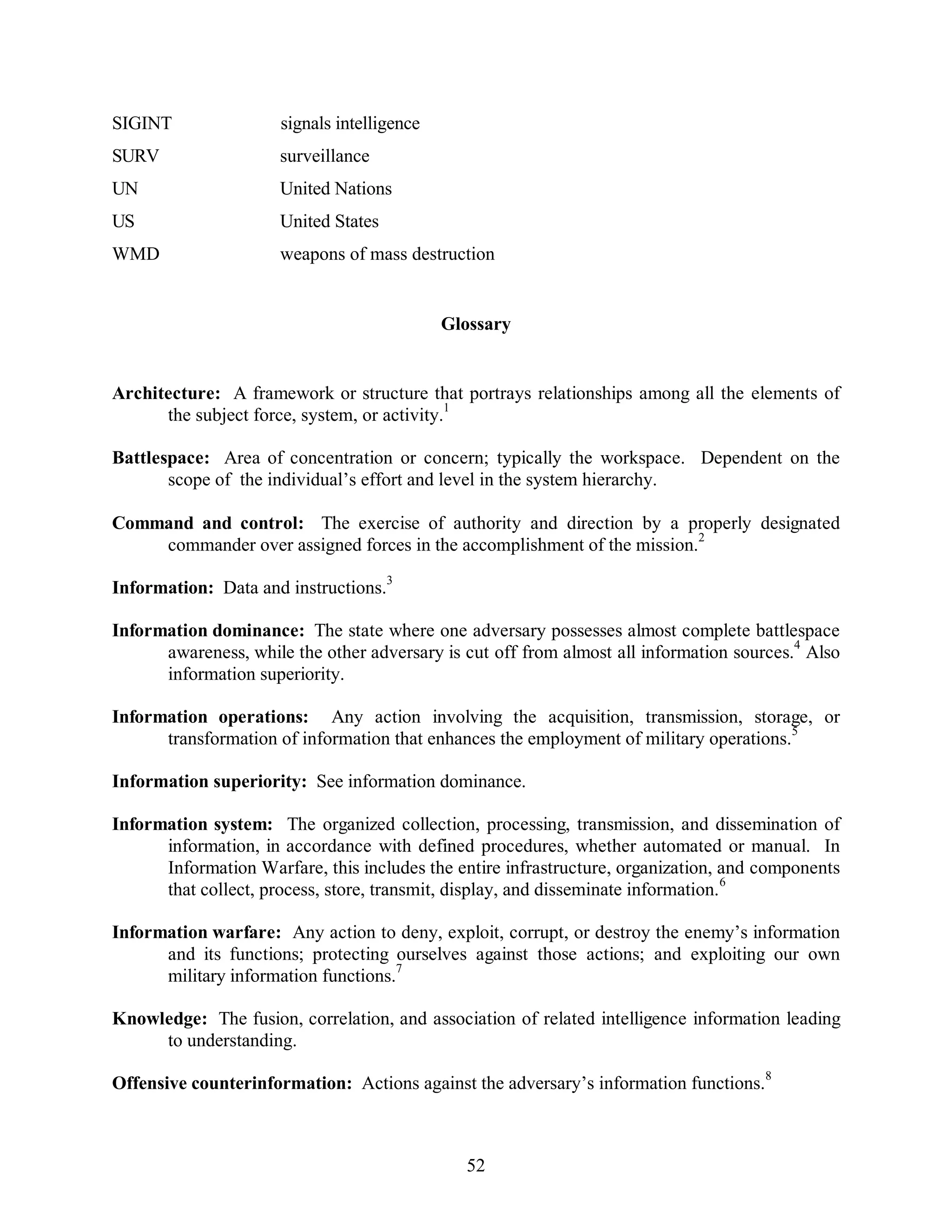
![Wisdom: Discernment based not only on factual knowledge but on judgment and insight.9
Notes
1 Joint Publication 1-02, DOD Dictionary of Military and Associated Terms, 23 March
53
1994, 32.
2 Joint Publication 1-02, 78.
3 Department of the Air Force, Cornerstones of Information Warfare, 1995, Definitions.
4 Stewart E. Johnson and Martin C. Libicki, Dominant Battlespace Knowledge: The Winning
Edge (Washington, D.C.: National Defense University Press, 1995), 27-58.
5 Cornerstones, Definitions.
6 DoD Directive S-3600.1 [draft]
7 Cornerstones, Definitions.
8 Ibid.
9 Philip B. Gove, editor in chief, Webster’s Third New International Dictionary,
Unabridged (Springfield, Massachusetts: Merriam-Webster, 1986), 2624.](https://image.slidesharecdn.com/vol1ch01-140914105042-phpapp02/75/Vol1ch01-59-2048.jpg)
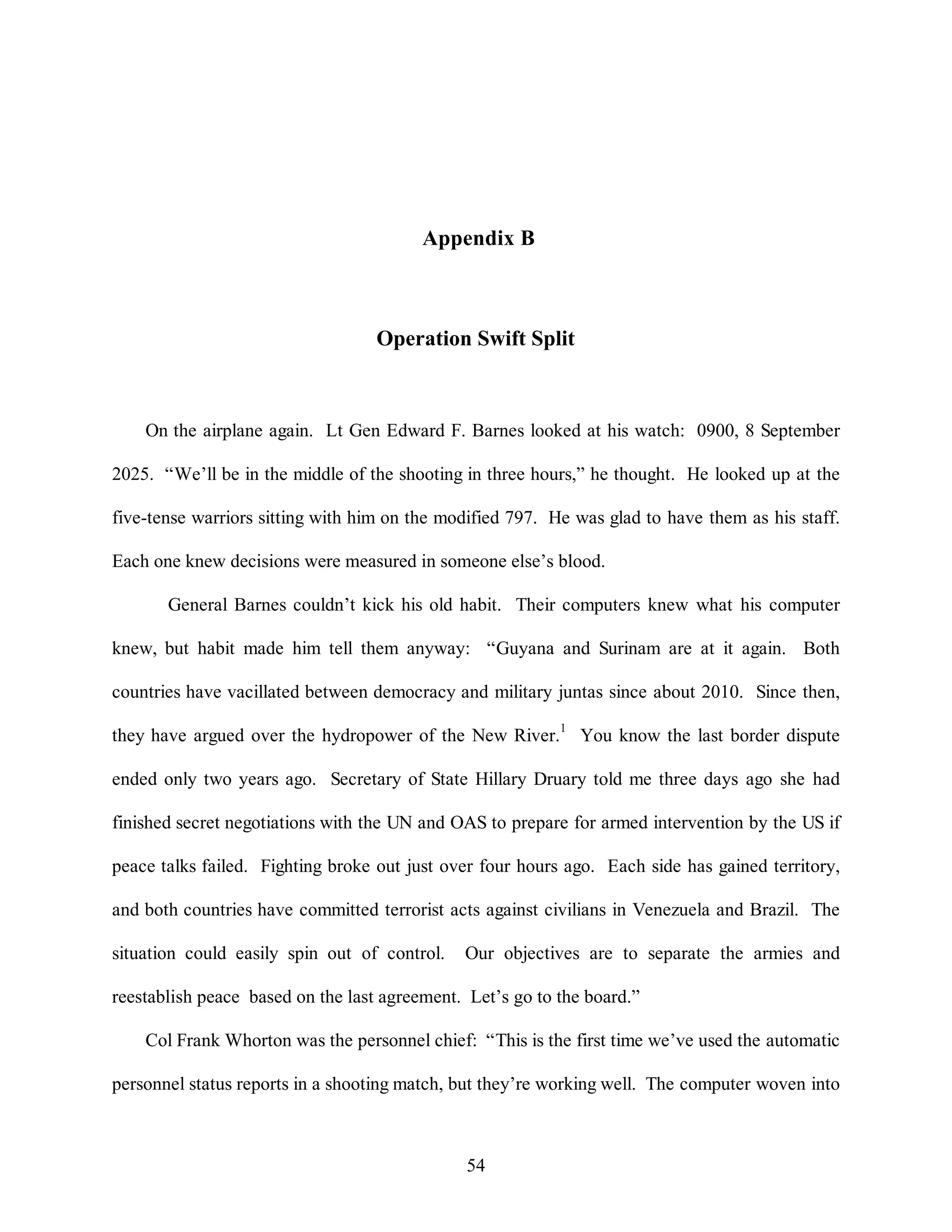
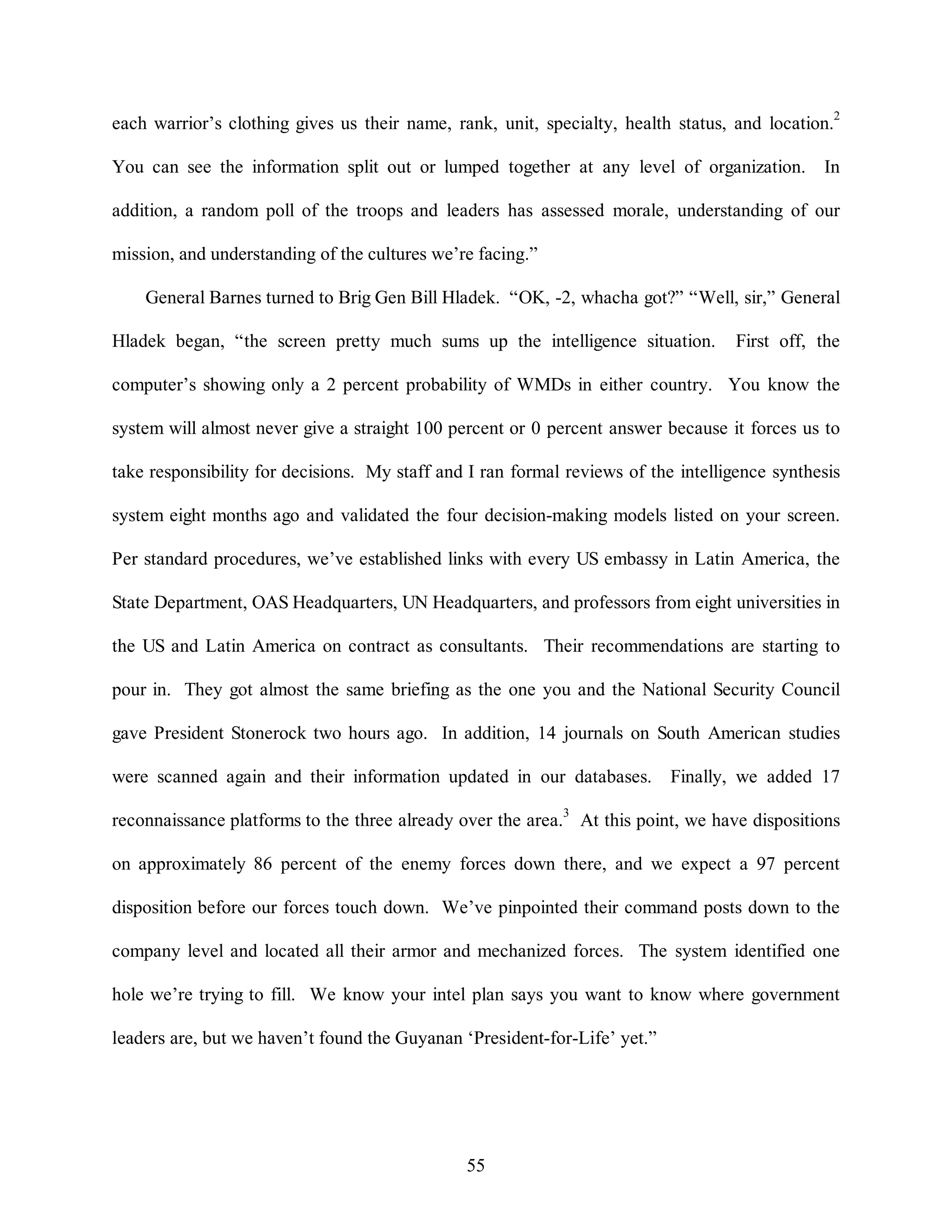
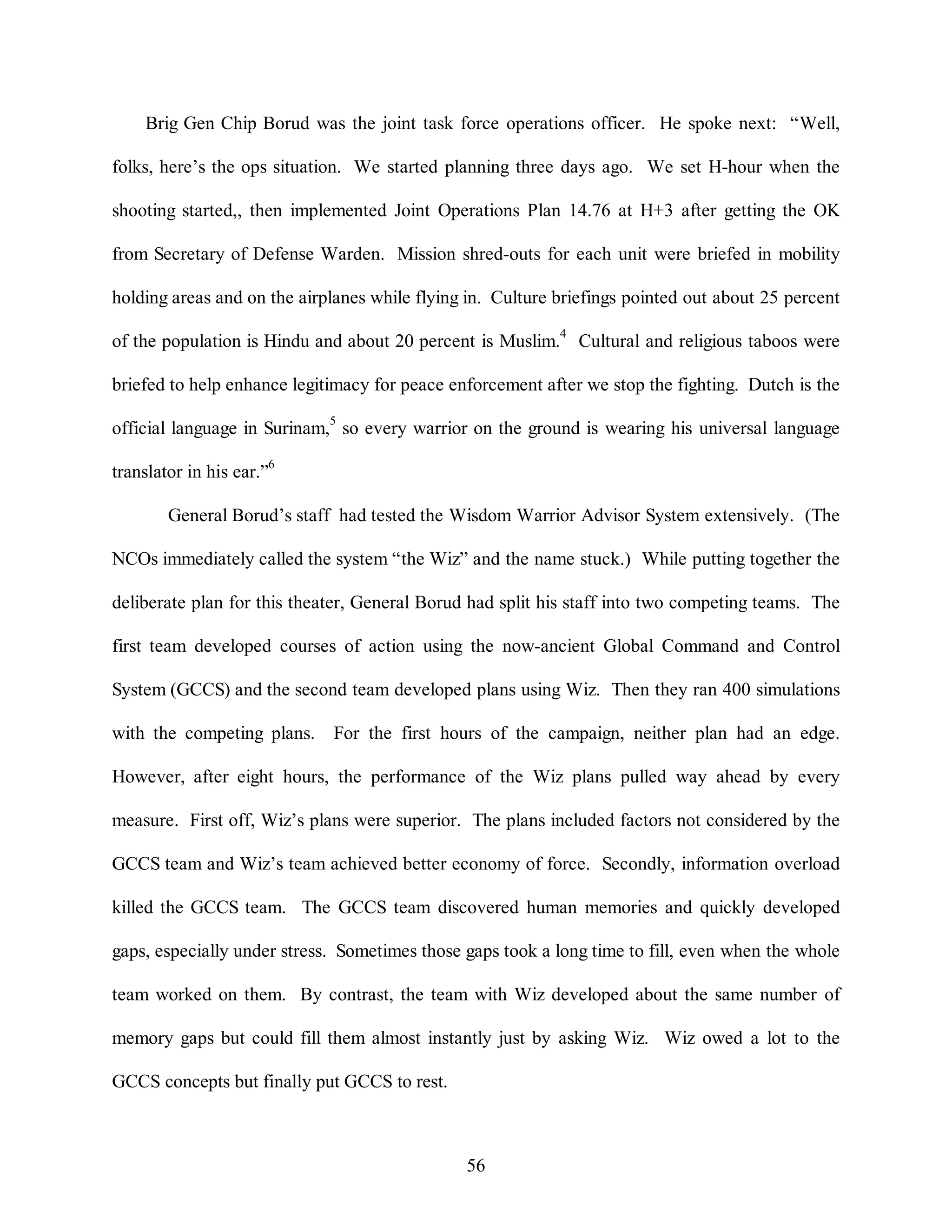
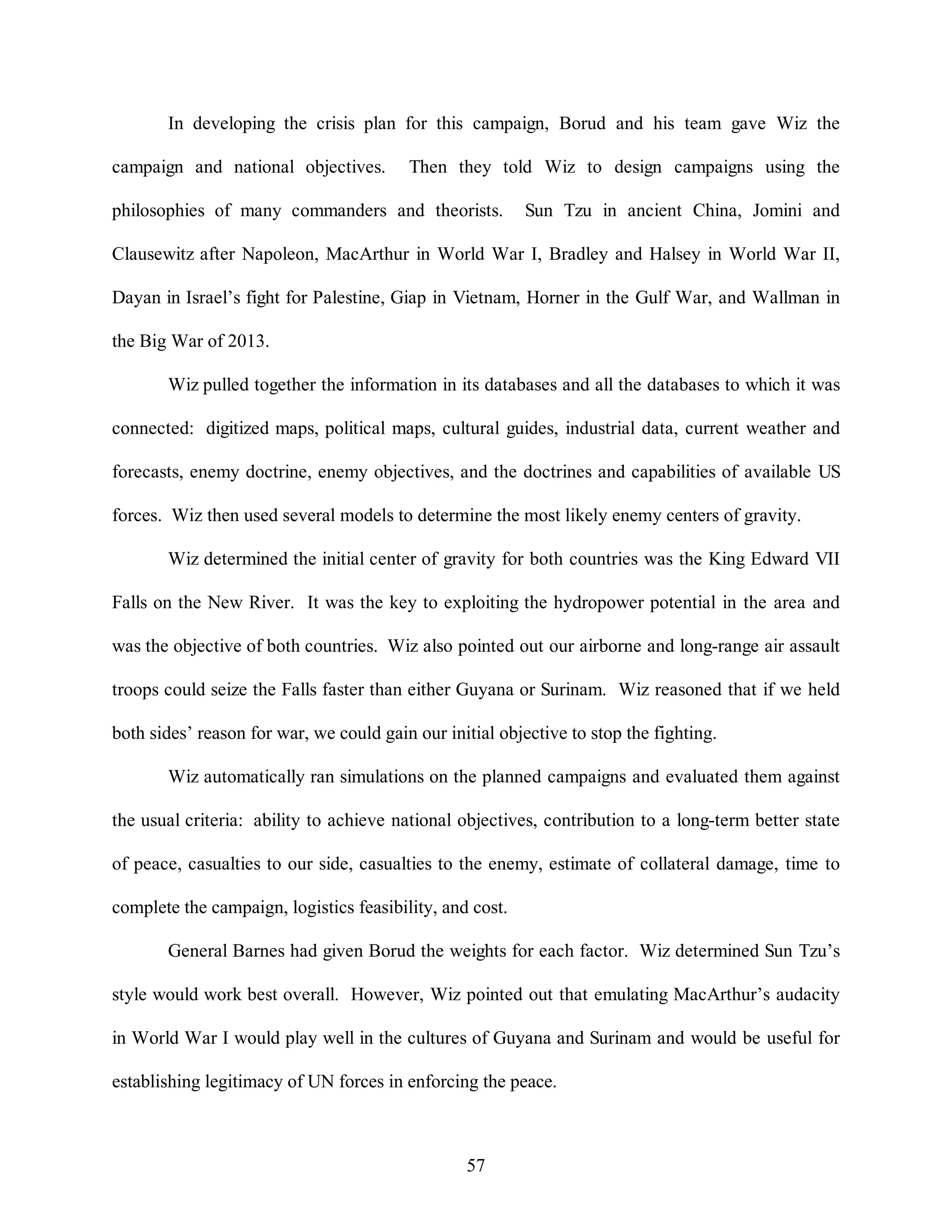
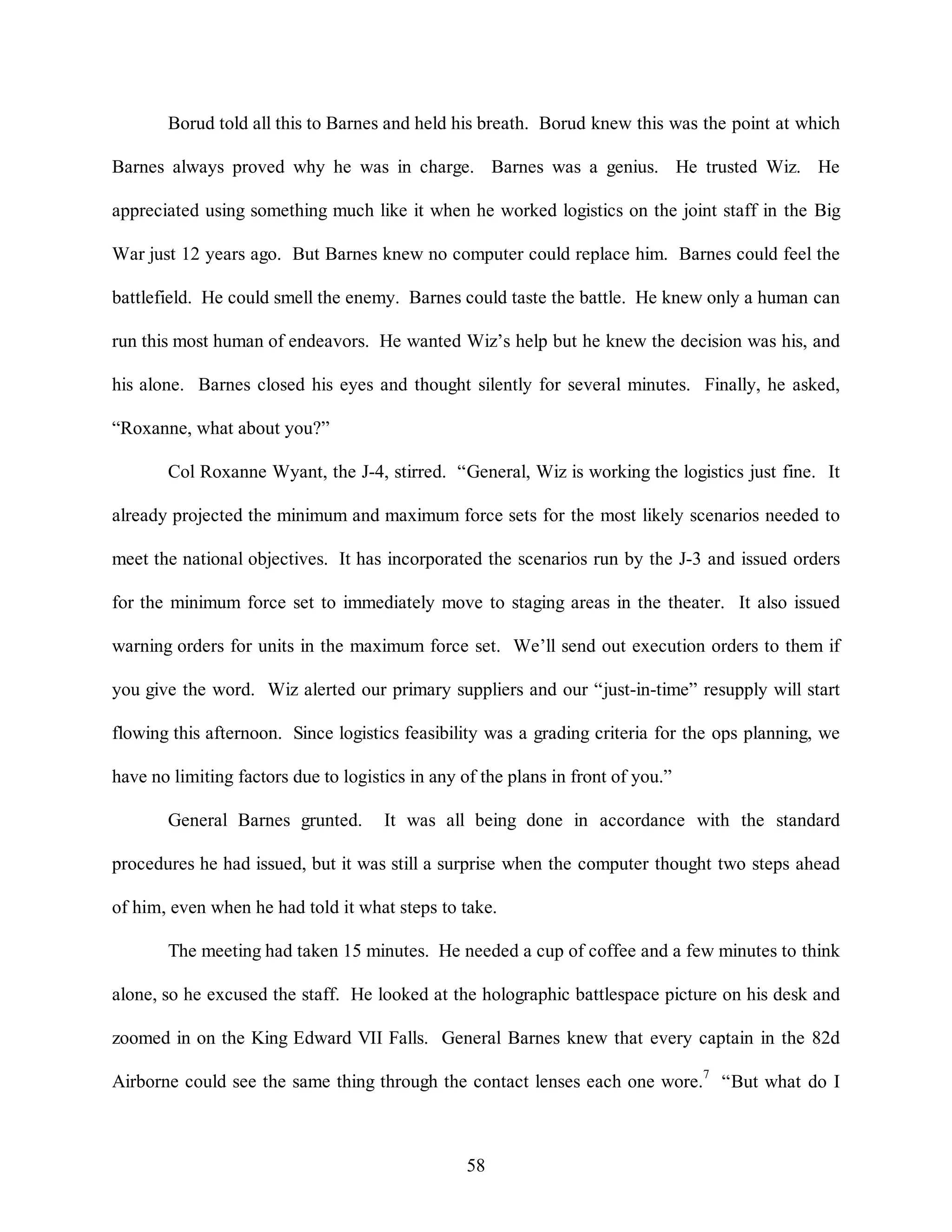
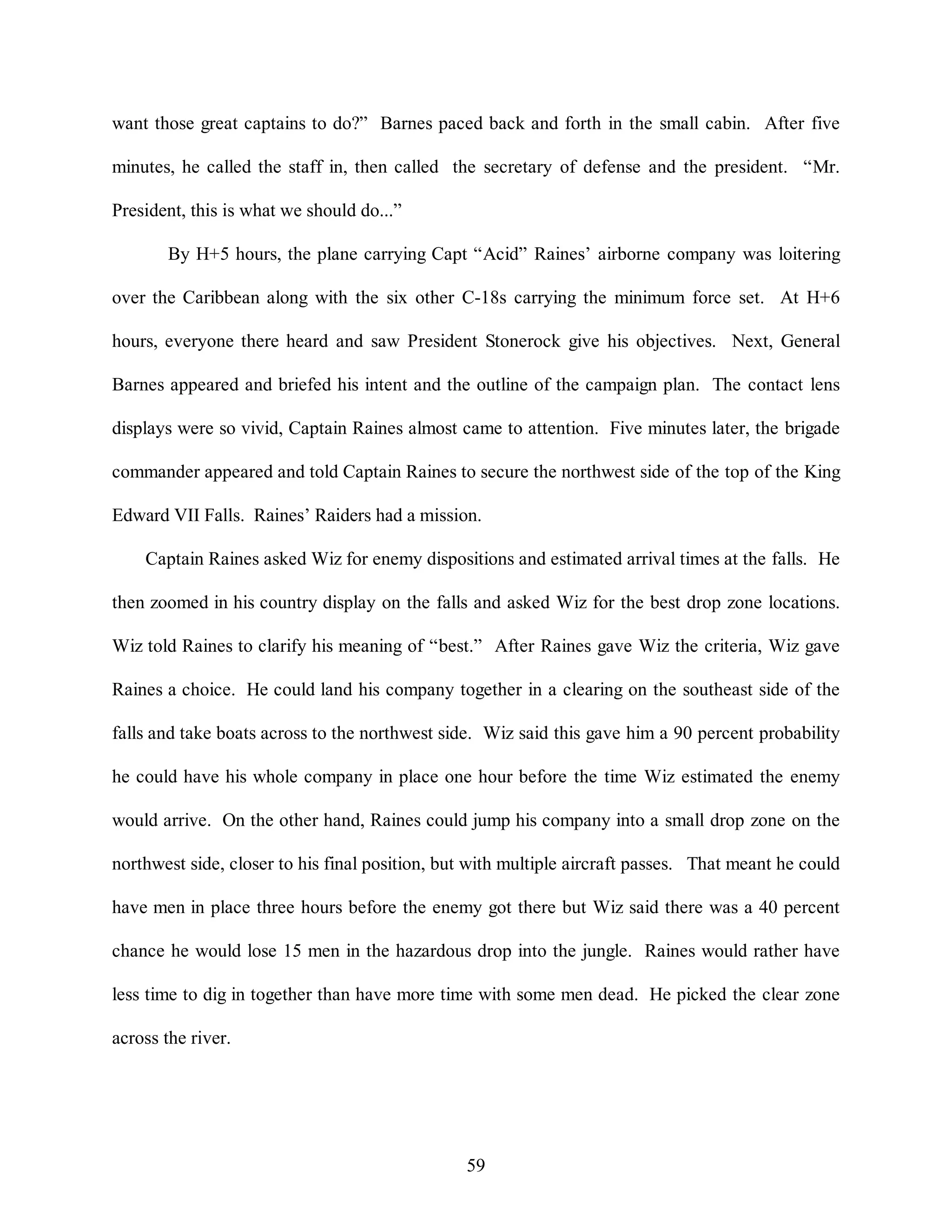
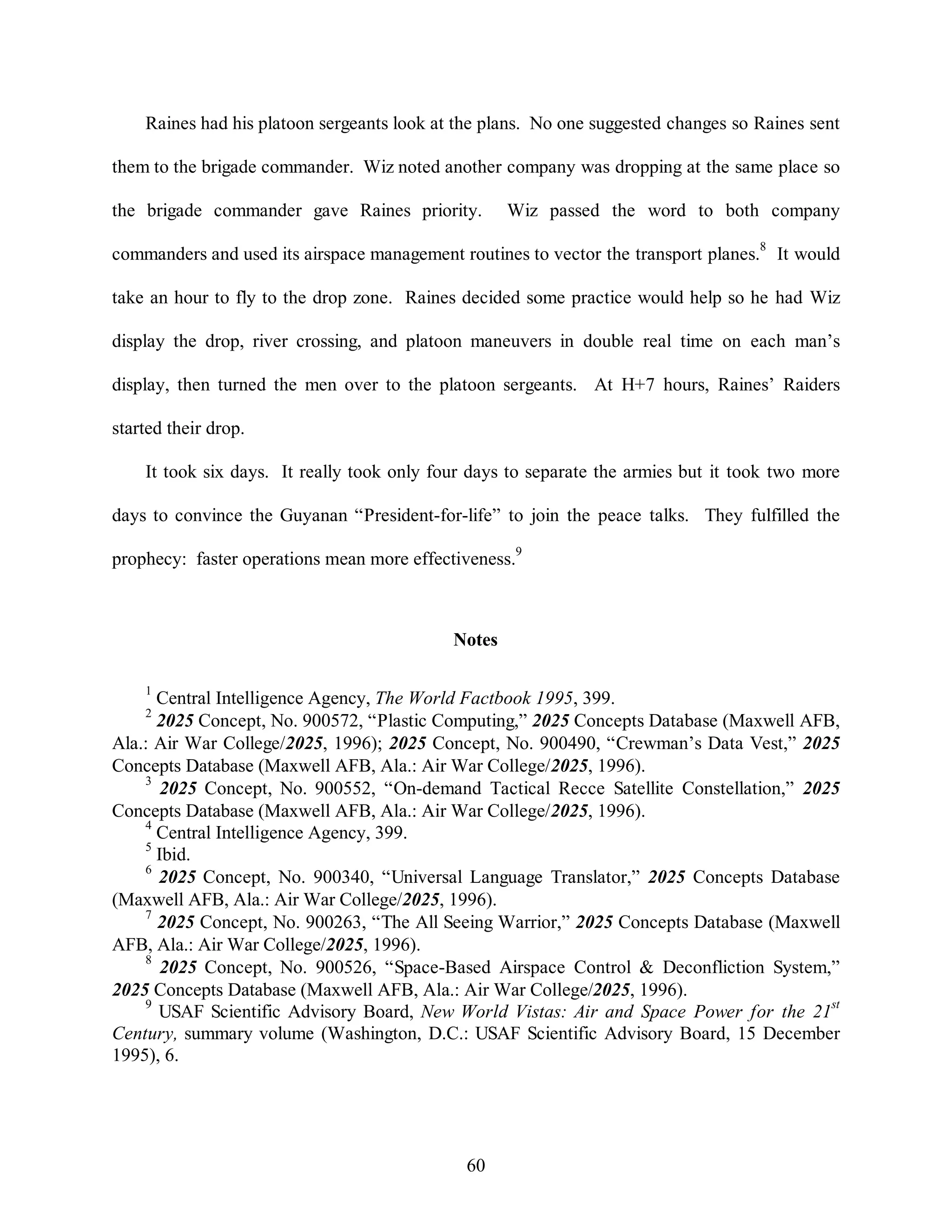
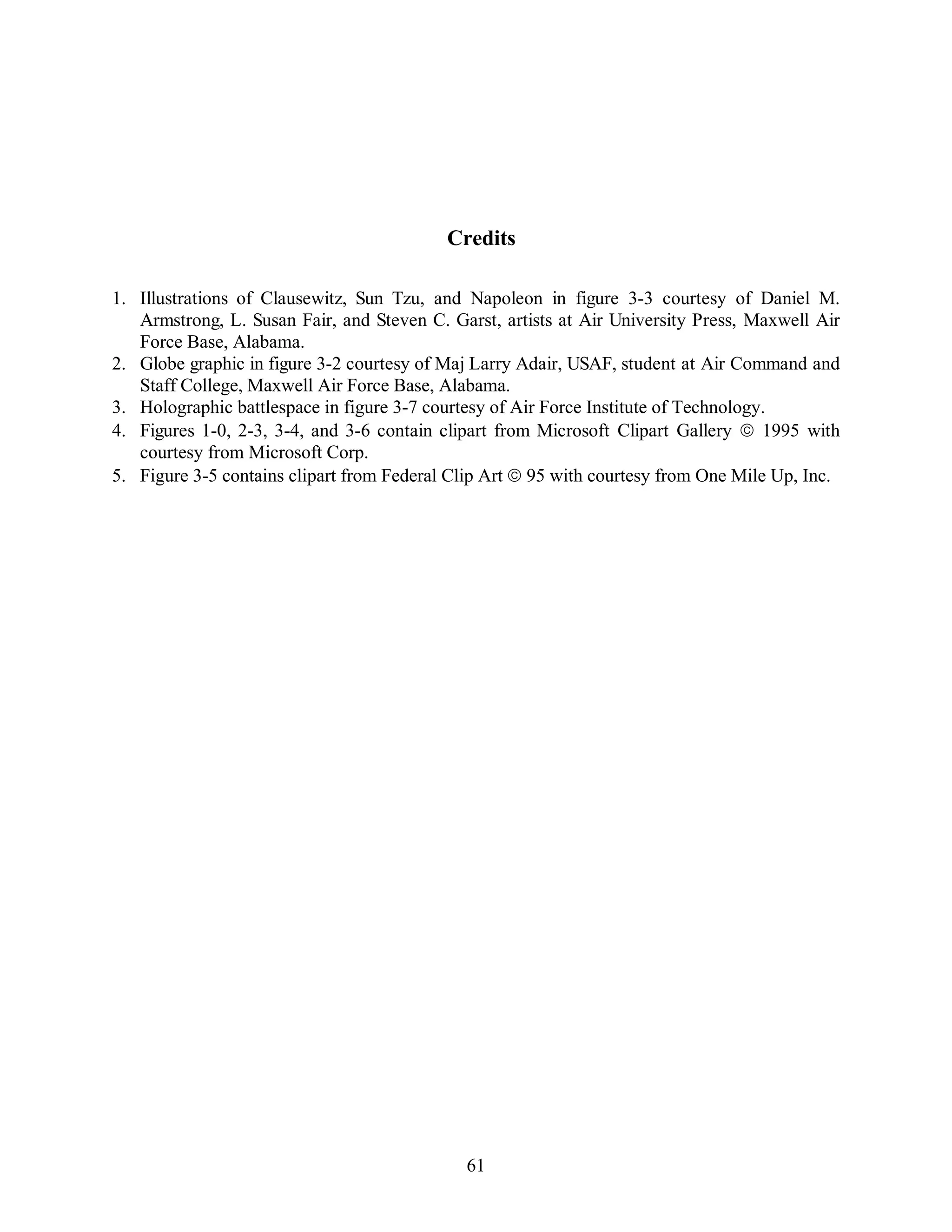
![Bibliography
2025 Concept Database Maxwell AFB, Ala.: Air War College/2025, 1996.
Advanced Research Projects Agency. “Computer Aided Education and Training.” Internet
address: http://www.ito.arpa.mil/ResearchAreas /CAETI.html, 31 January 1996.
Air Force Rome Laboratory. “Speakeasy Program Briefing.” Internet address: http://
woody.c2tc. rl.af.mil:8001/Technology /Demos/SPEAKEASY, March 1996.
Axel, Richard. “Mammals Can Recognize Thousands of Odors, Some of Which Prompt Powerful
Response.” Scientific American 273, no. 4, October 1995.
Baatz, E. B. “Making Brain Waves.” CIO, 15 January 1996.
Barlow, Jason. “Strategic Paralysis: An Airpower Theory for the Present.” Strategic Studies
Course Book 2 Maxwell AFB, Ala.: Air Command and Staff College, 1995.
Braunberg, Andrew C. “Data Warehouses Migrate Toward World Wide Web.” Signal, February
62
1996.
Cable News Network. “CNN at Work.” Internet address: http://www.intel.com/comm-net/cnn_
work/index.html, 14 February 1996.
Central Intelligence Agency. The World Factbook 1995.
The Chicago Manual of Style. 14th ed. Chicago: The University of Chicago Press, 1993.
“Chip Architecture Removes Signal Processing Bottleneck.” Signal, February 1996.
College of Aerospace Doctrine, Research, and Education. AU Press Author Guide. Maxwell
AFB, Ala.: Air University Press, March 1995.
AU Press Style Guide for Writers & Editors. Maxwell AFB, Ala.: Air University Press,
December 1994.
Compton’s Interactive Encyclopedia, 1994 ed., s.v. “human brain.”
Department of the Air Force. Air Force Executive Guidance. December 1995.
_____. Cornerstones of Information Warfare. 1995.
Department of the Army. Force XXI. 15 January 1995.
Dewar, J. A., et al. “Non-Monotonicity, Chaos, and Combat Models.” RAND Library
Collection, Santa Monica, Calif.: RAND 1991.
DOD Directive S-3600.1 [draft].](https://image.slidesharecdn.com/vol1ch01-140914105042-phpapp02/75/Vol1ch01-68-2048.jpg)
